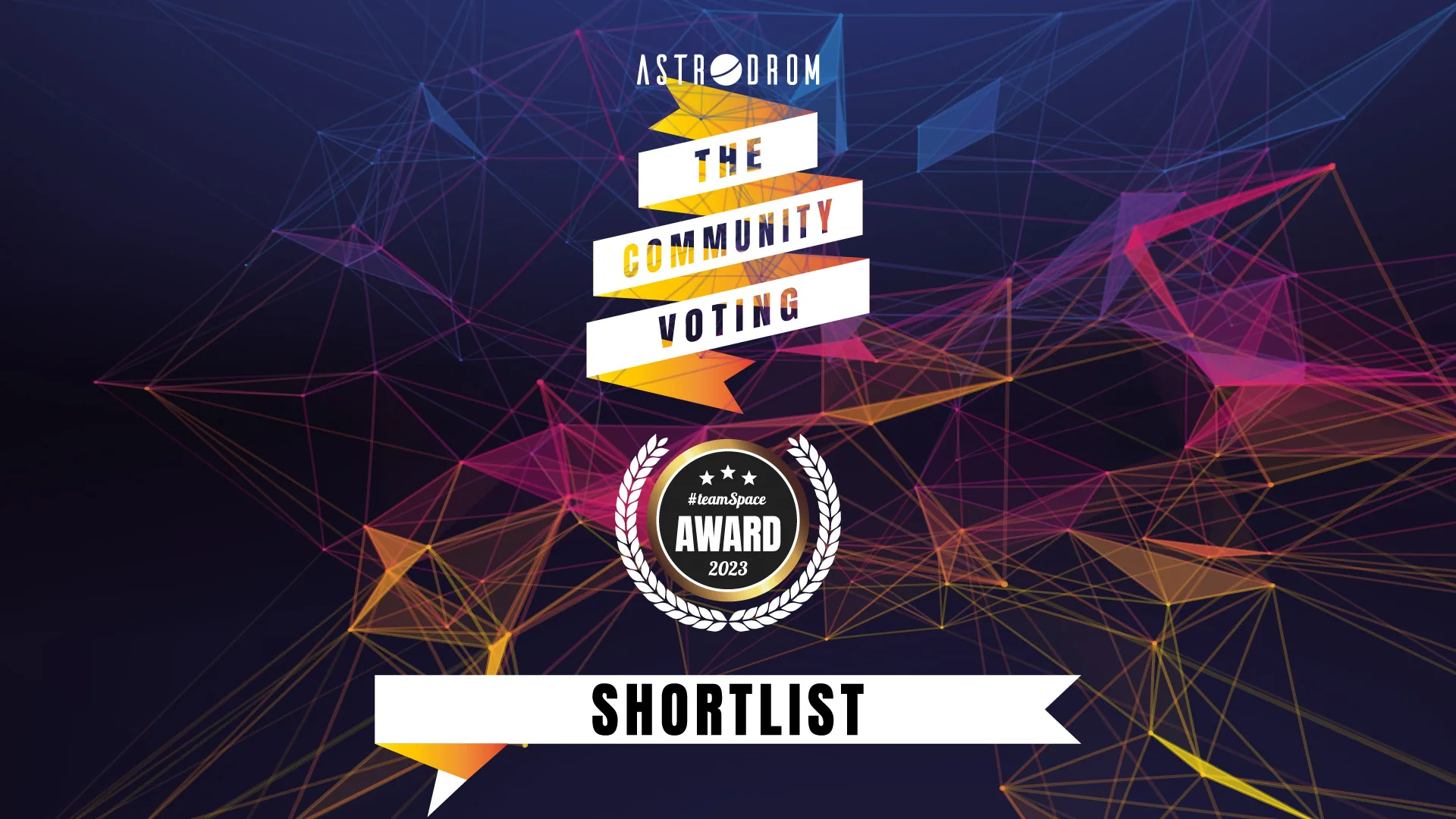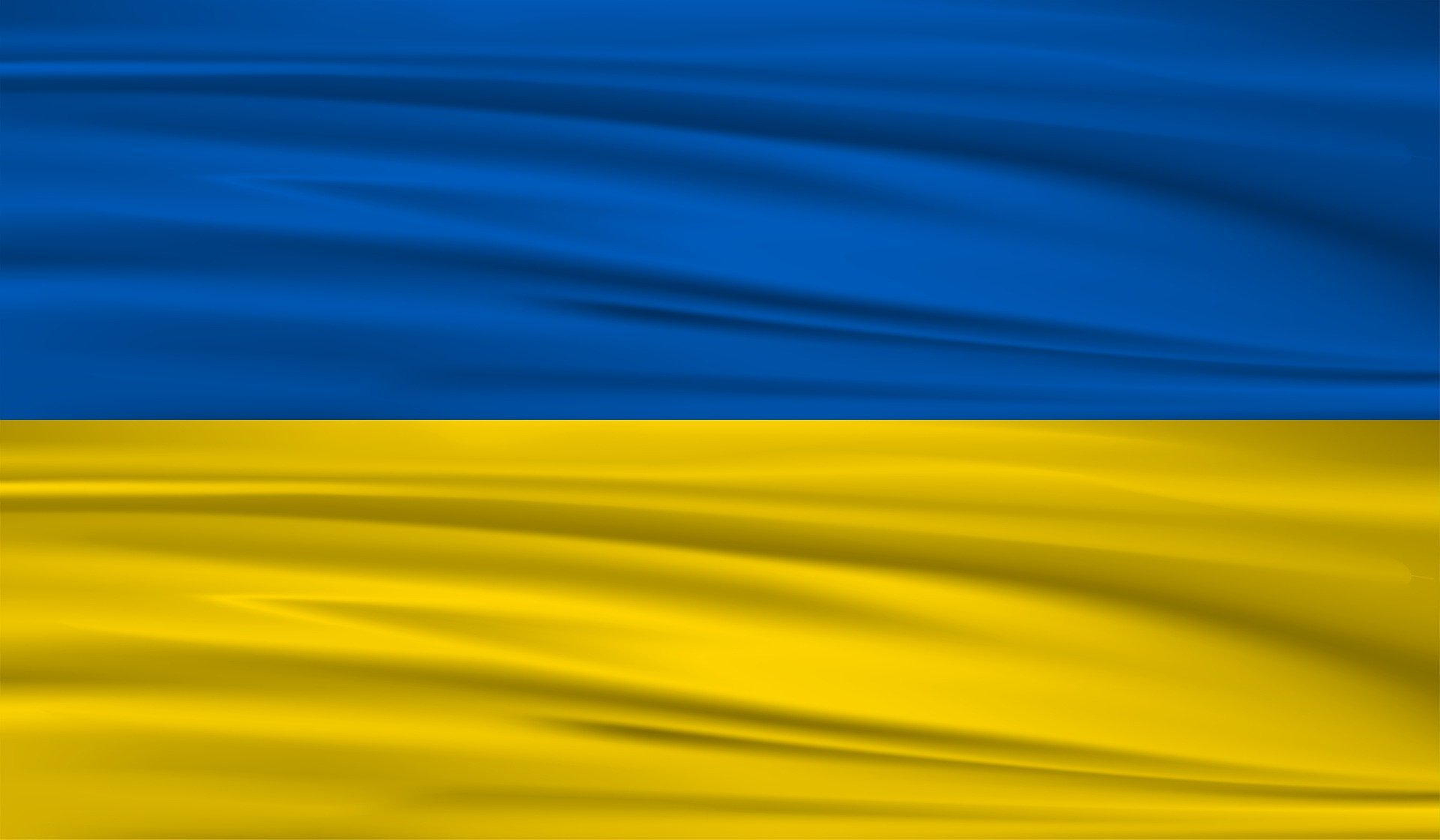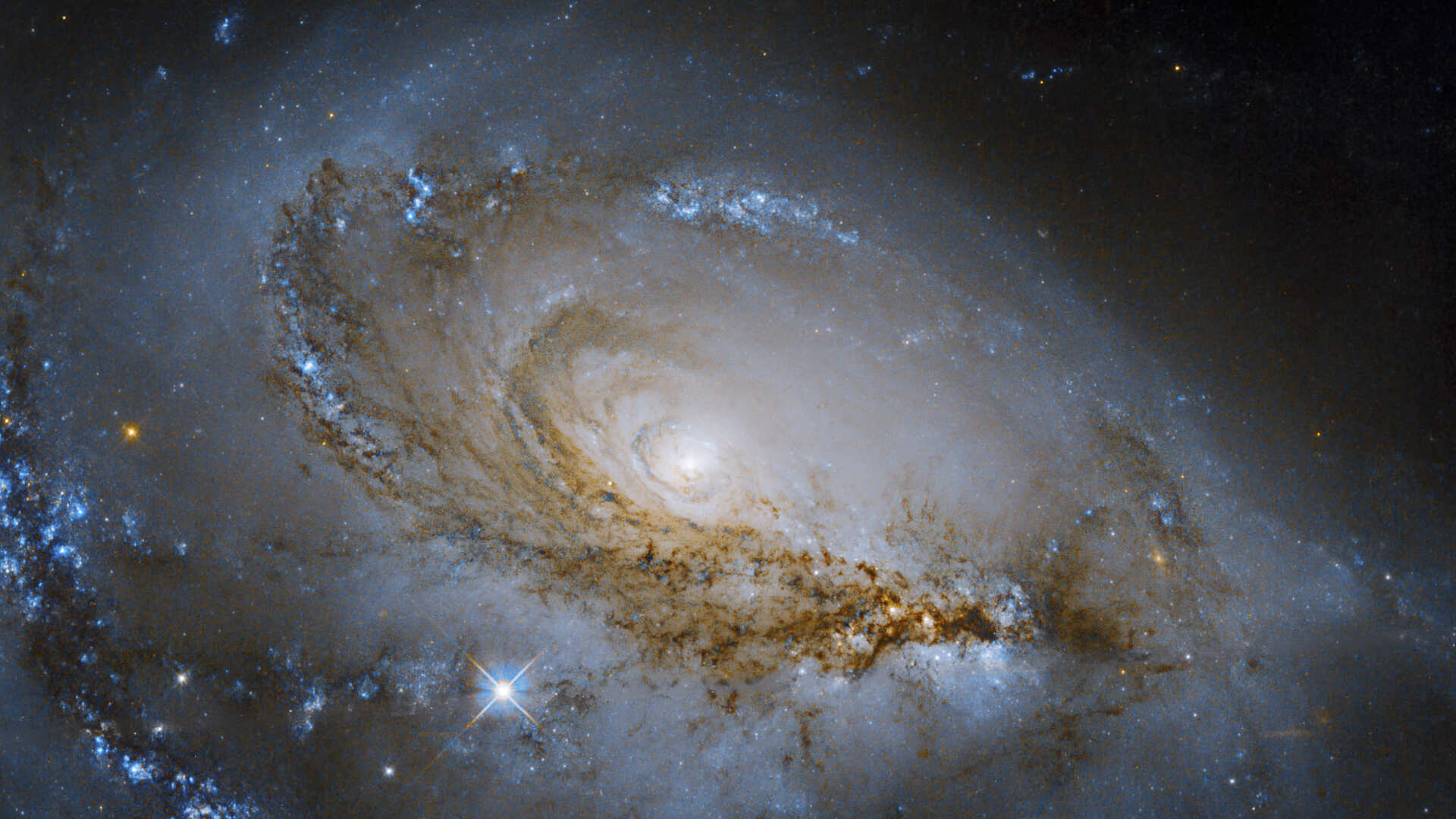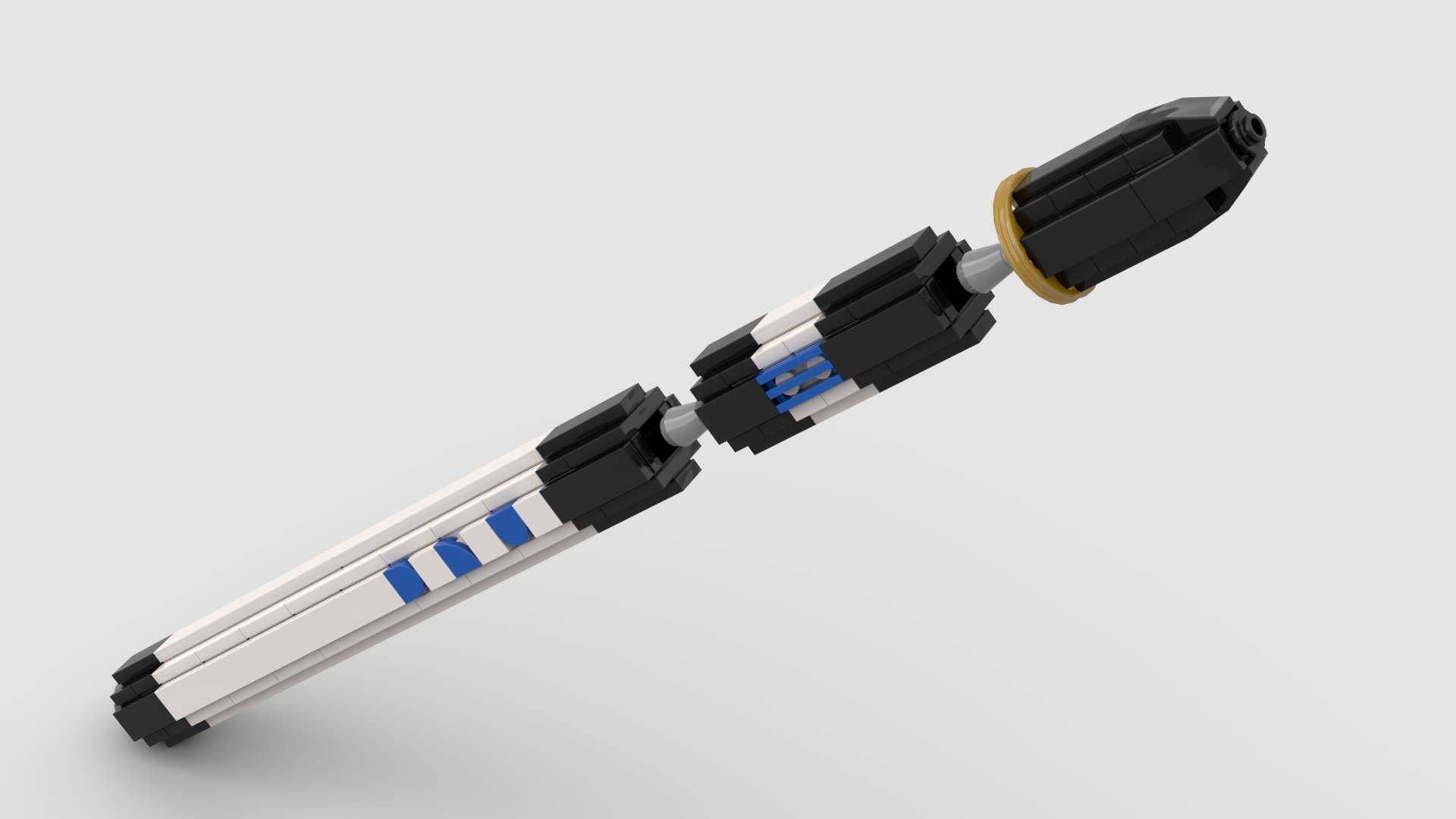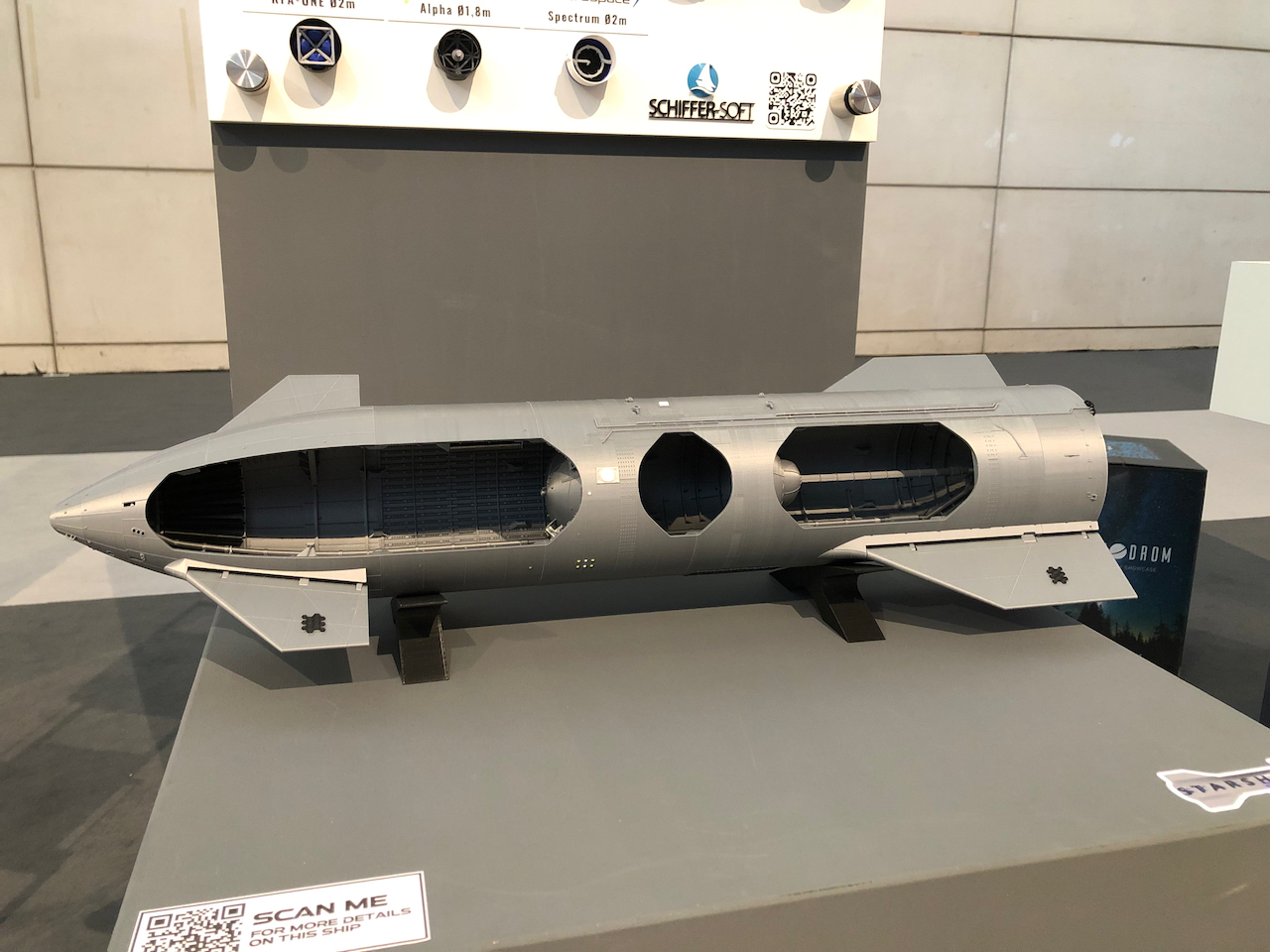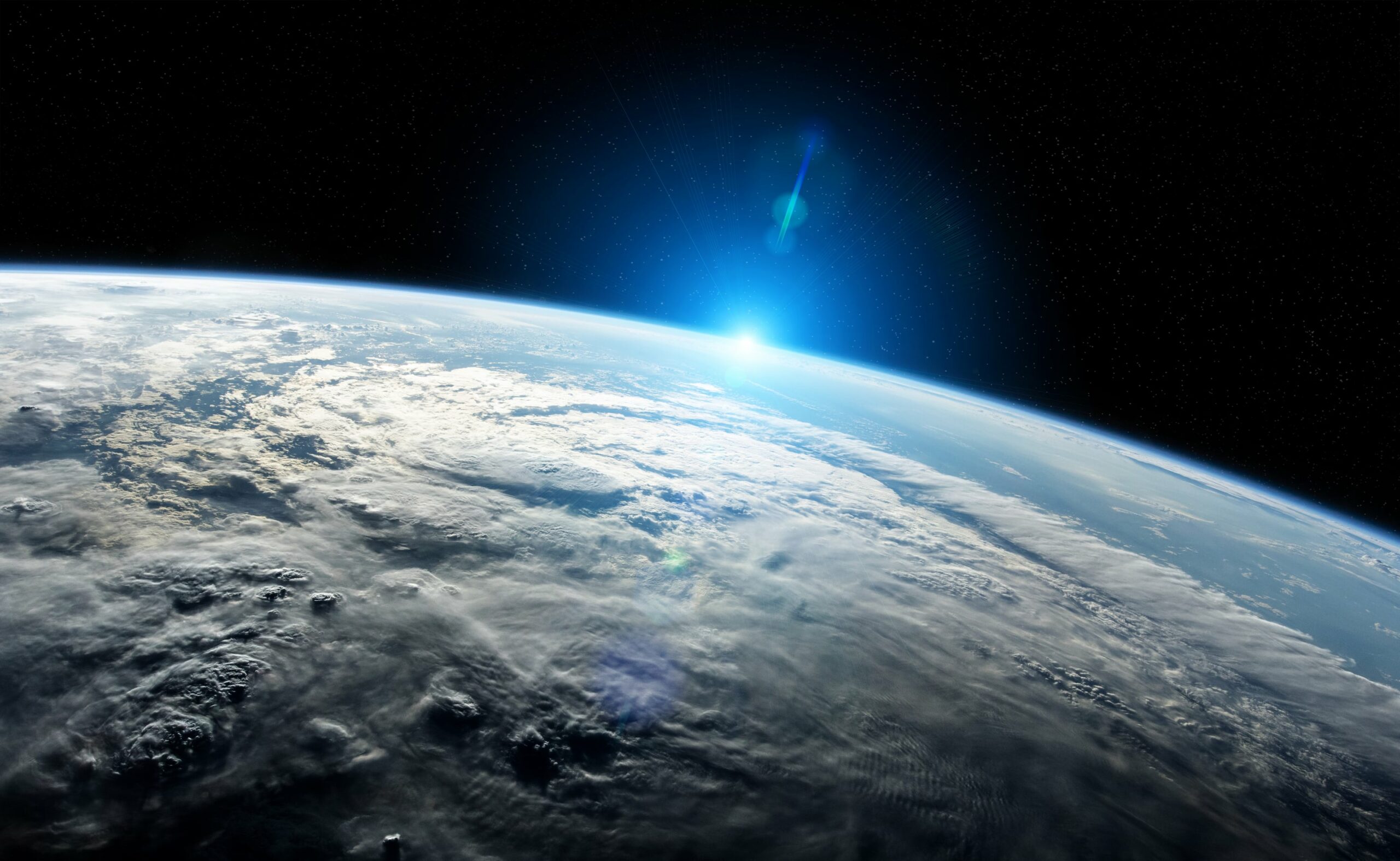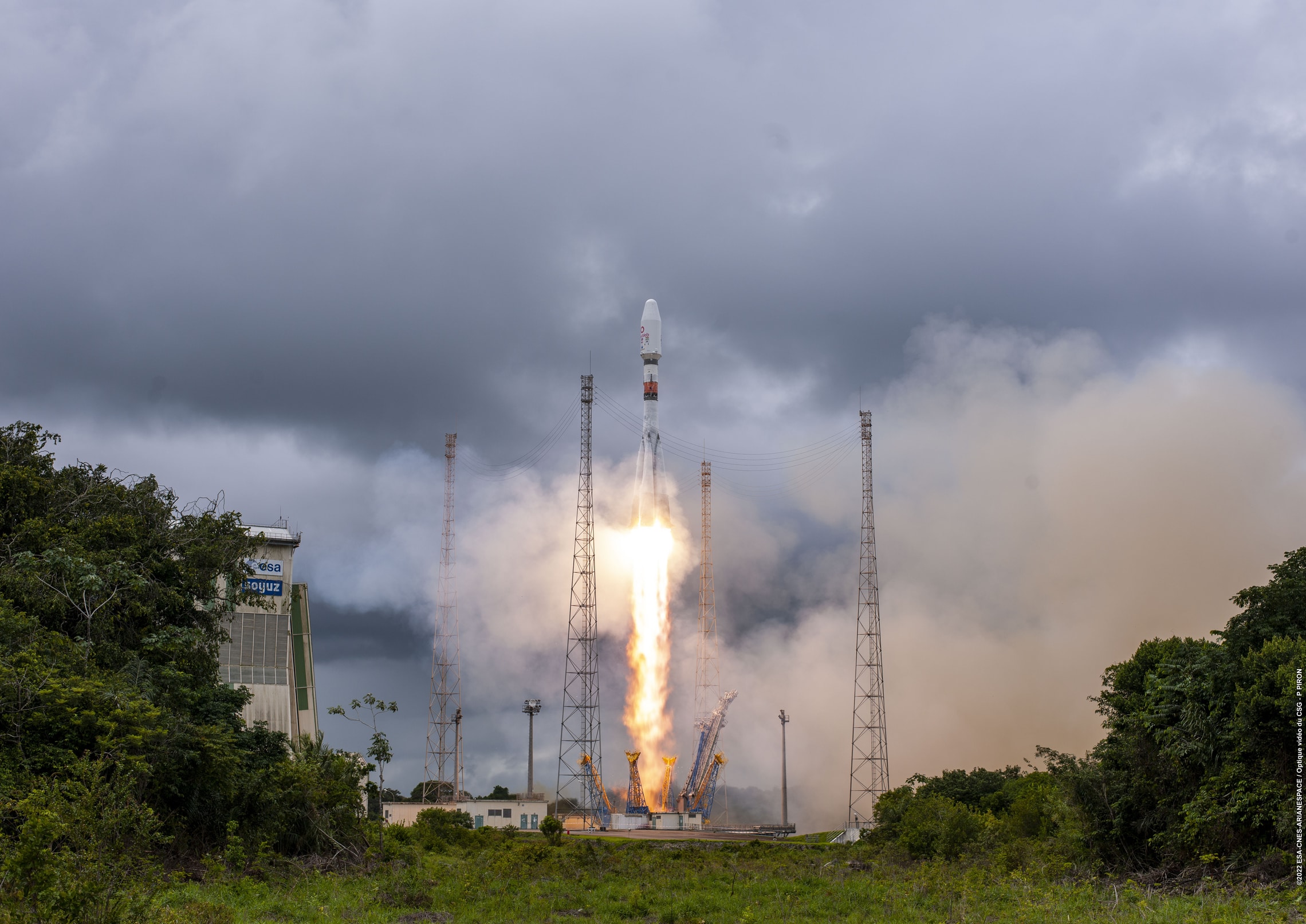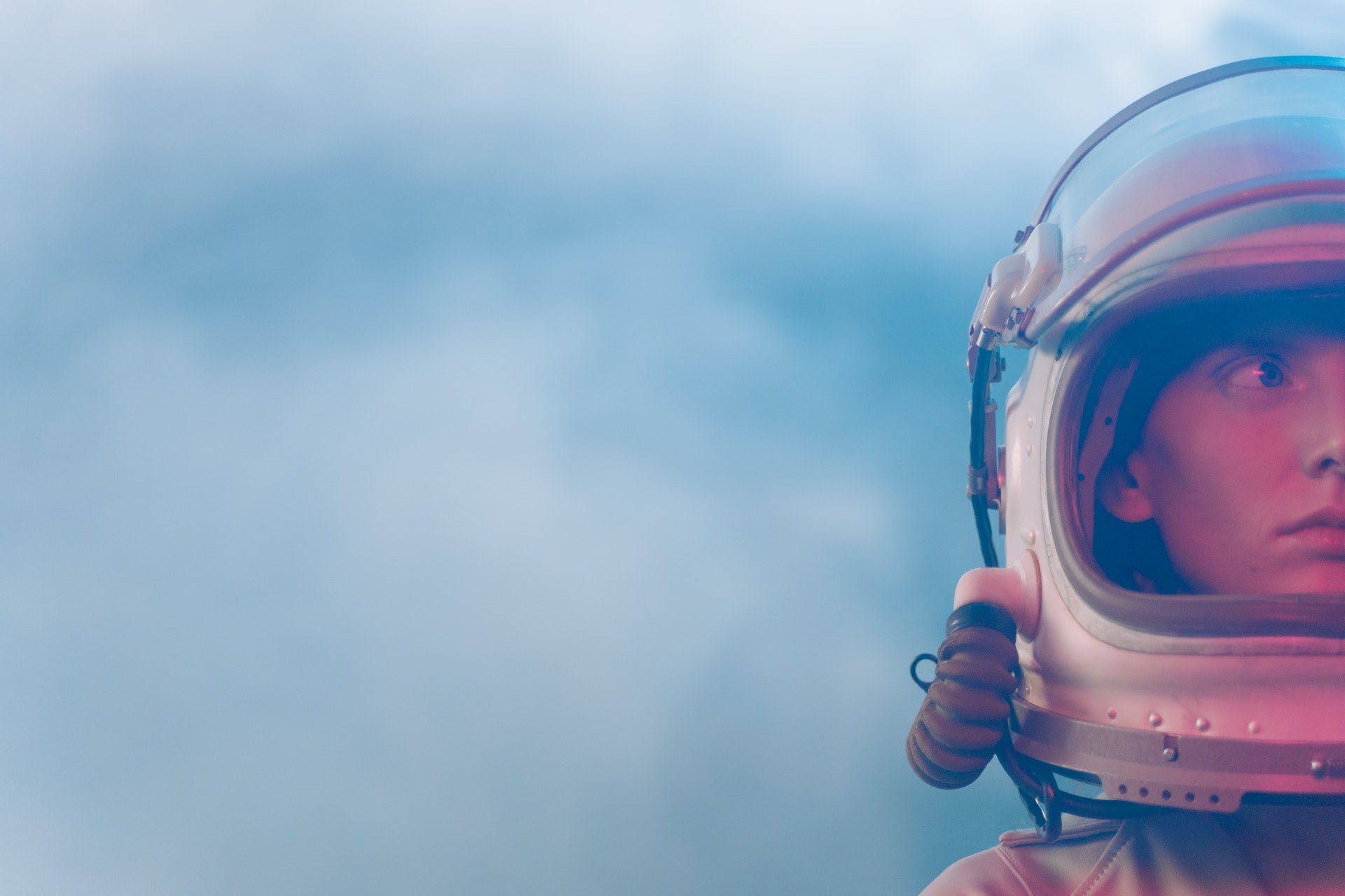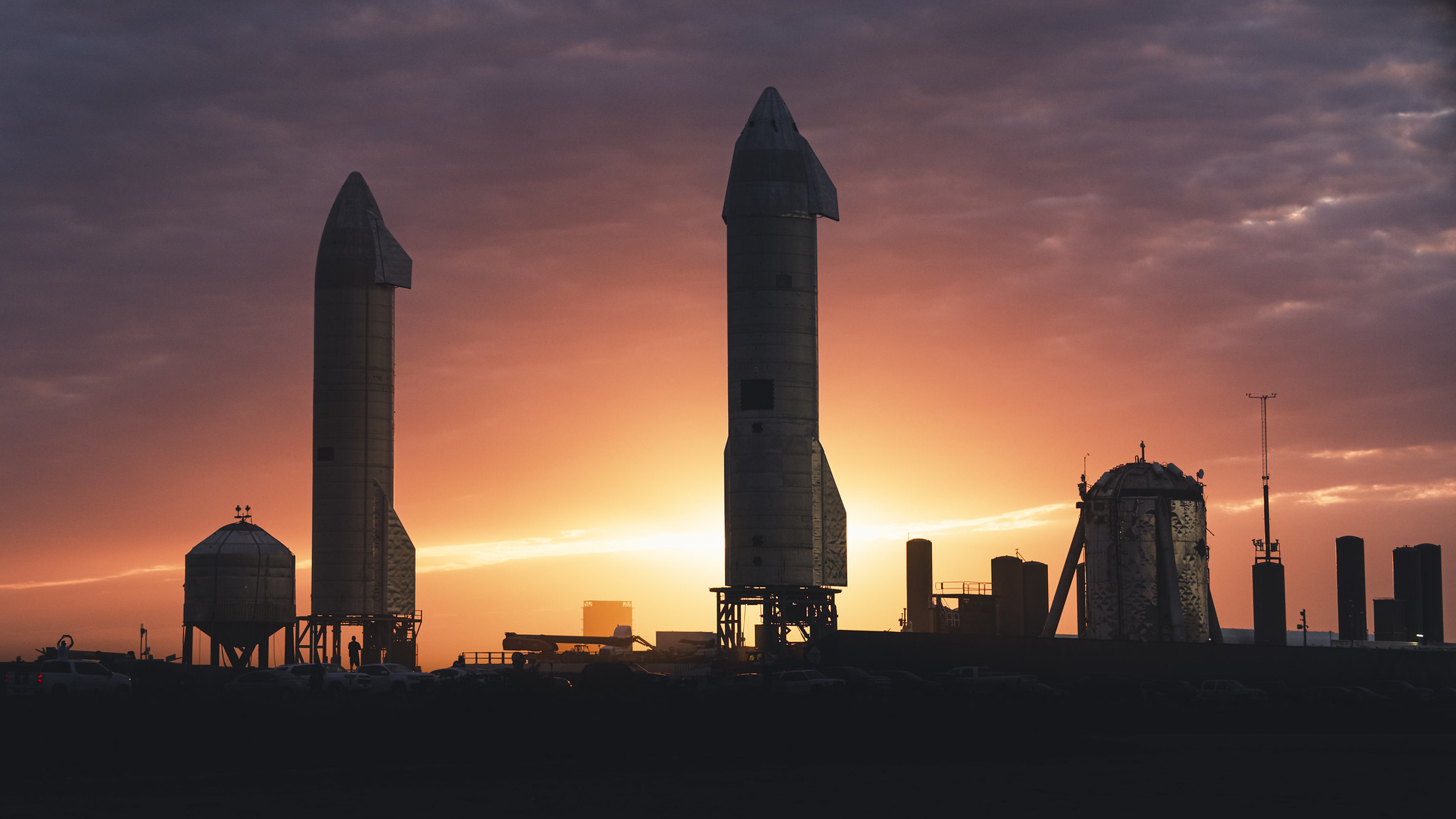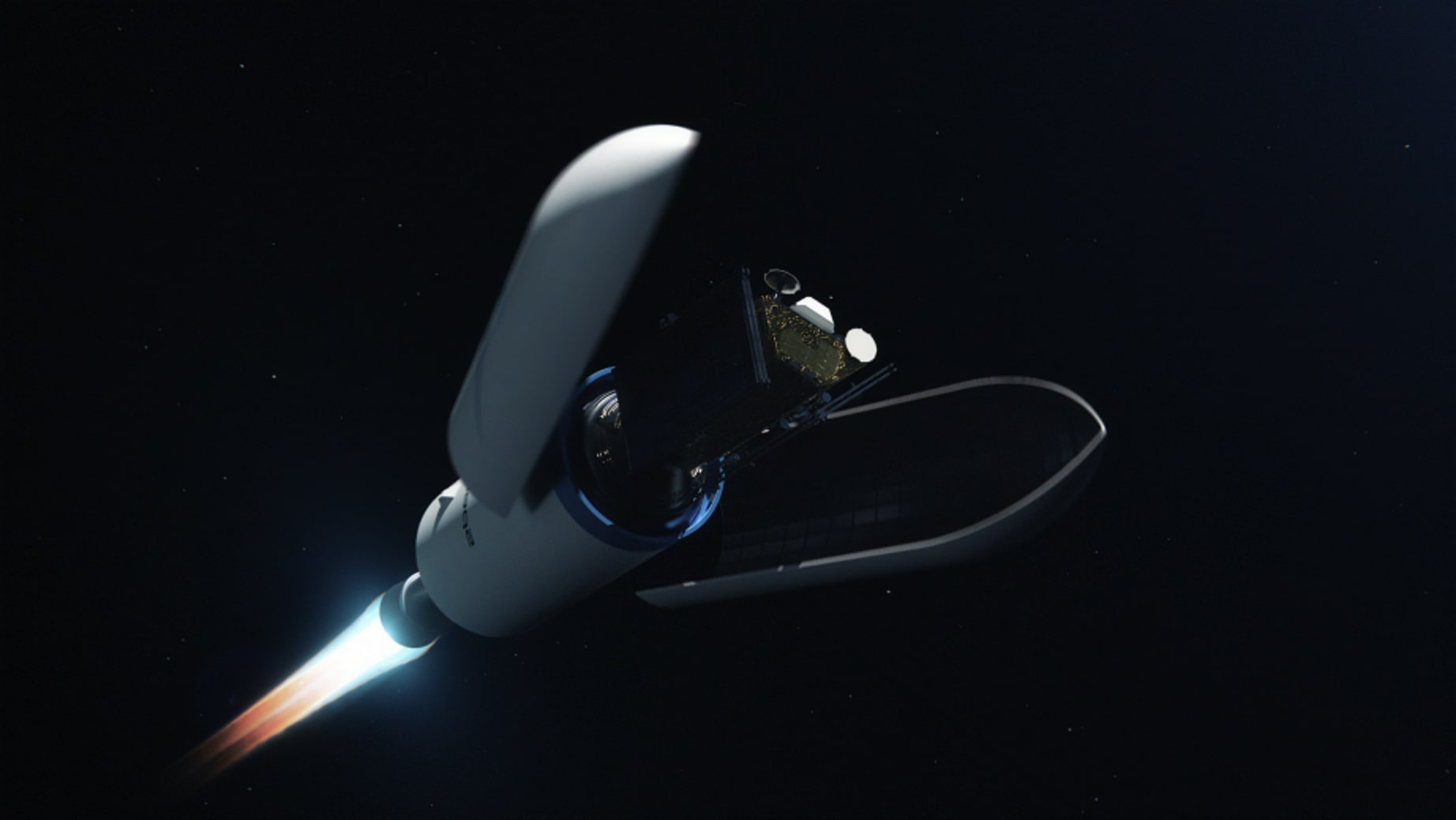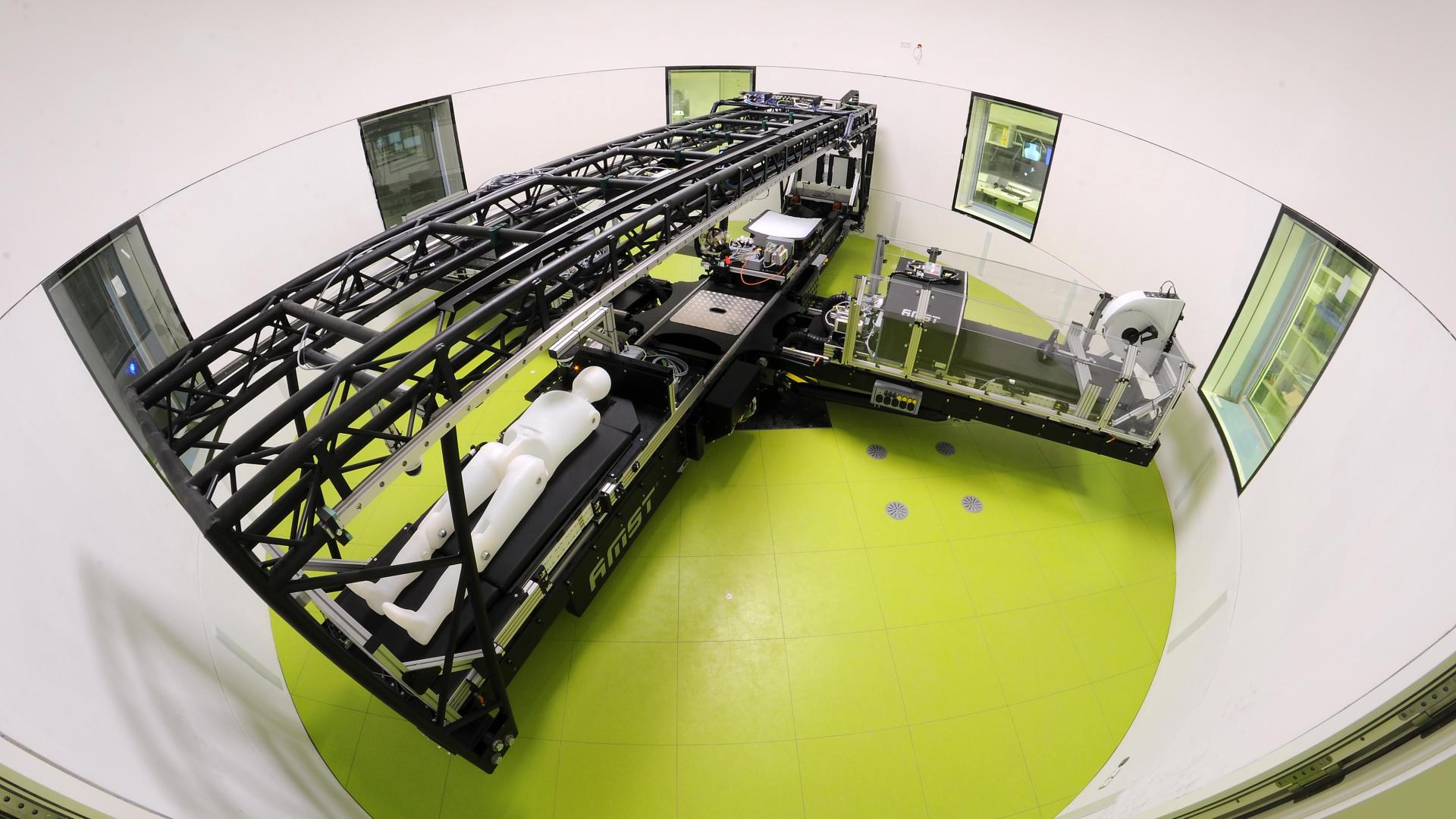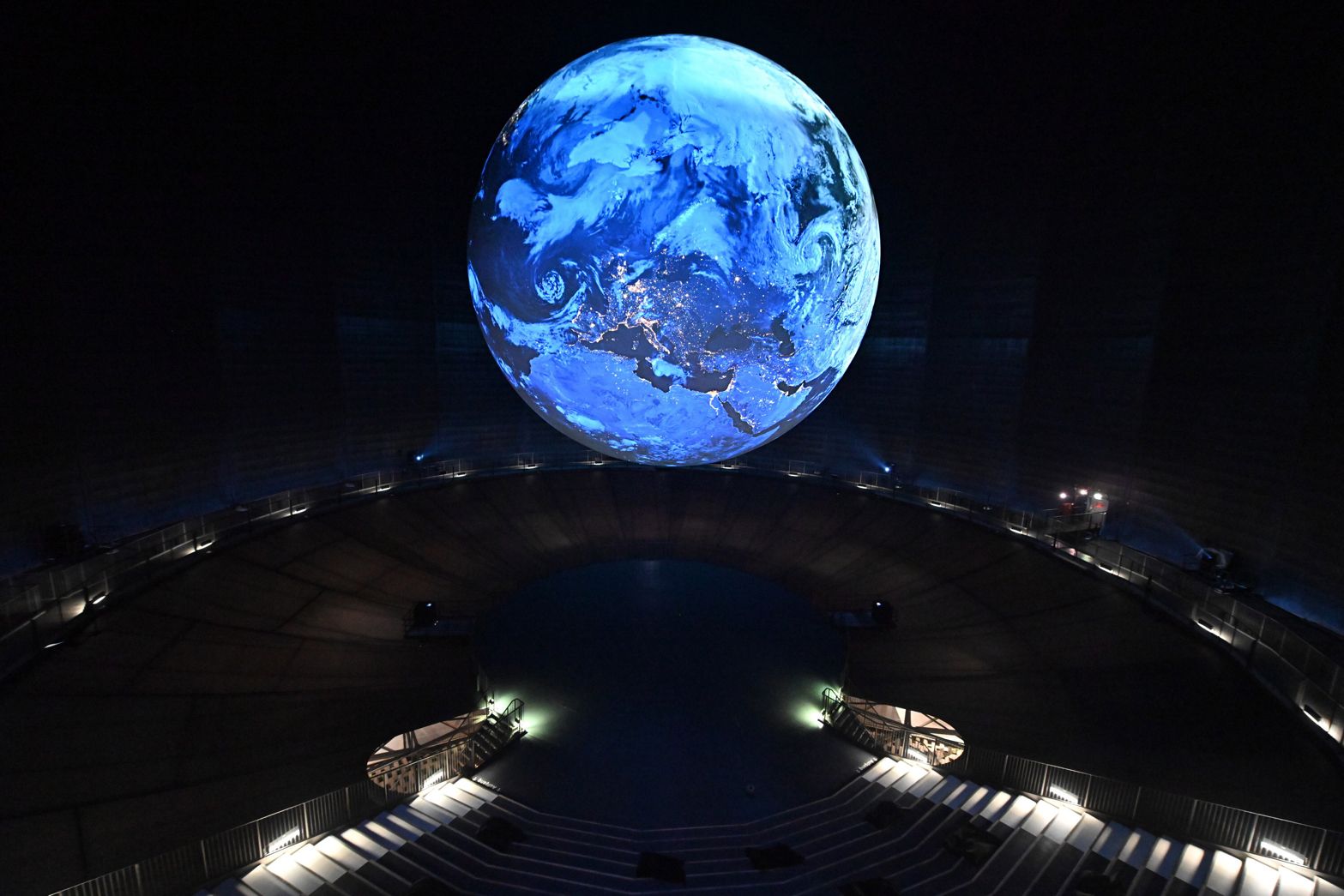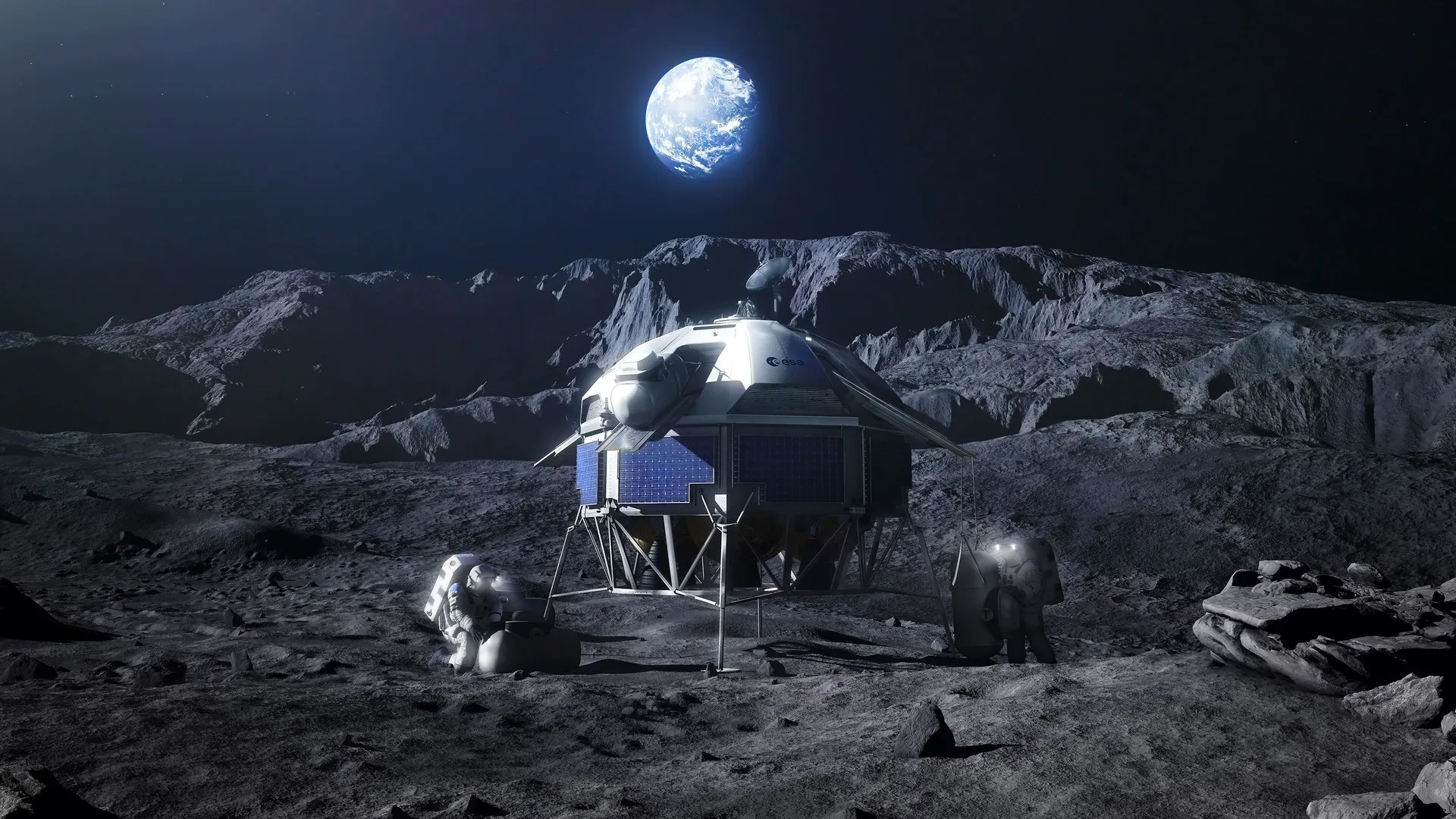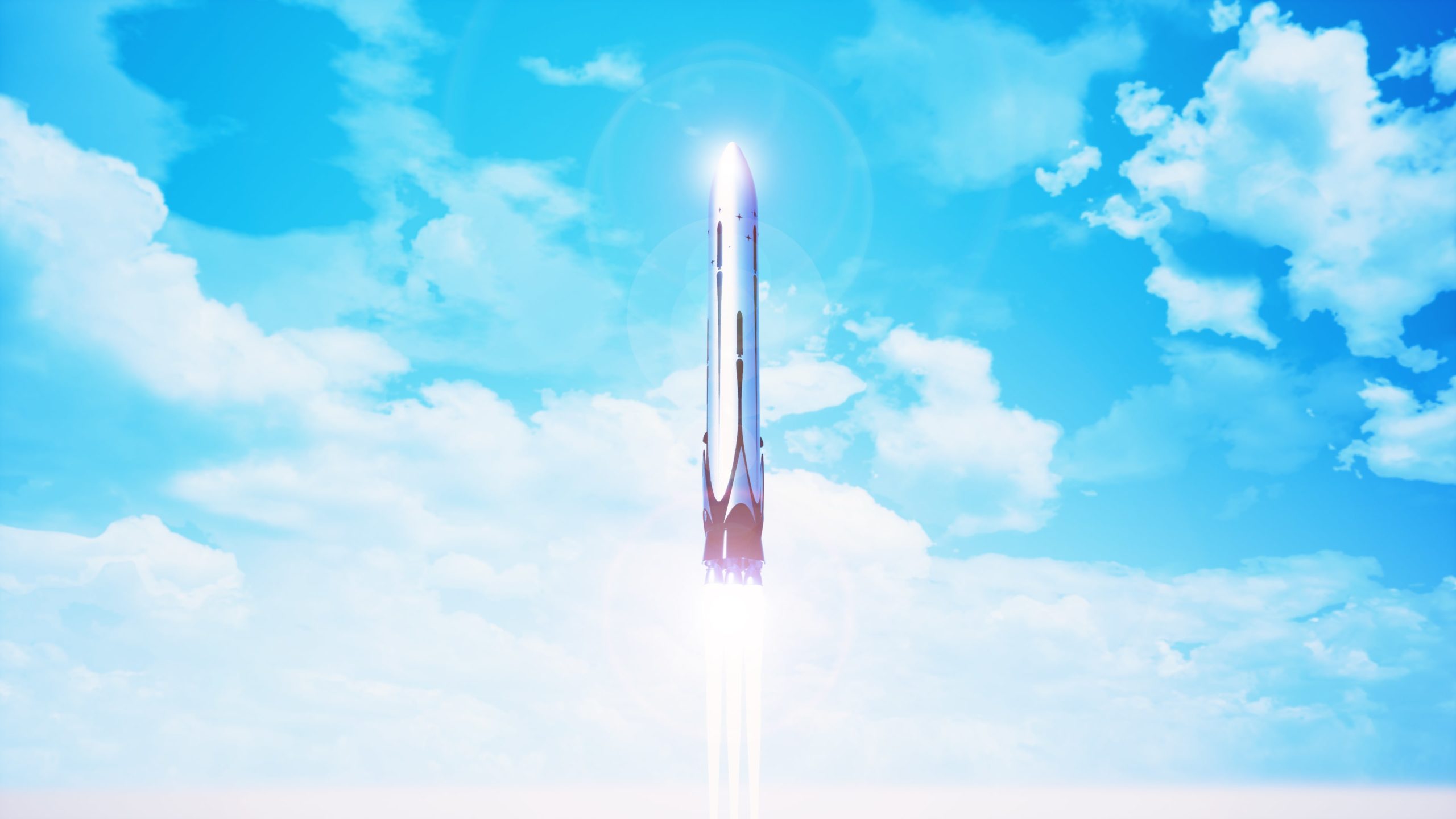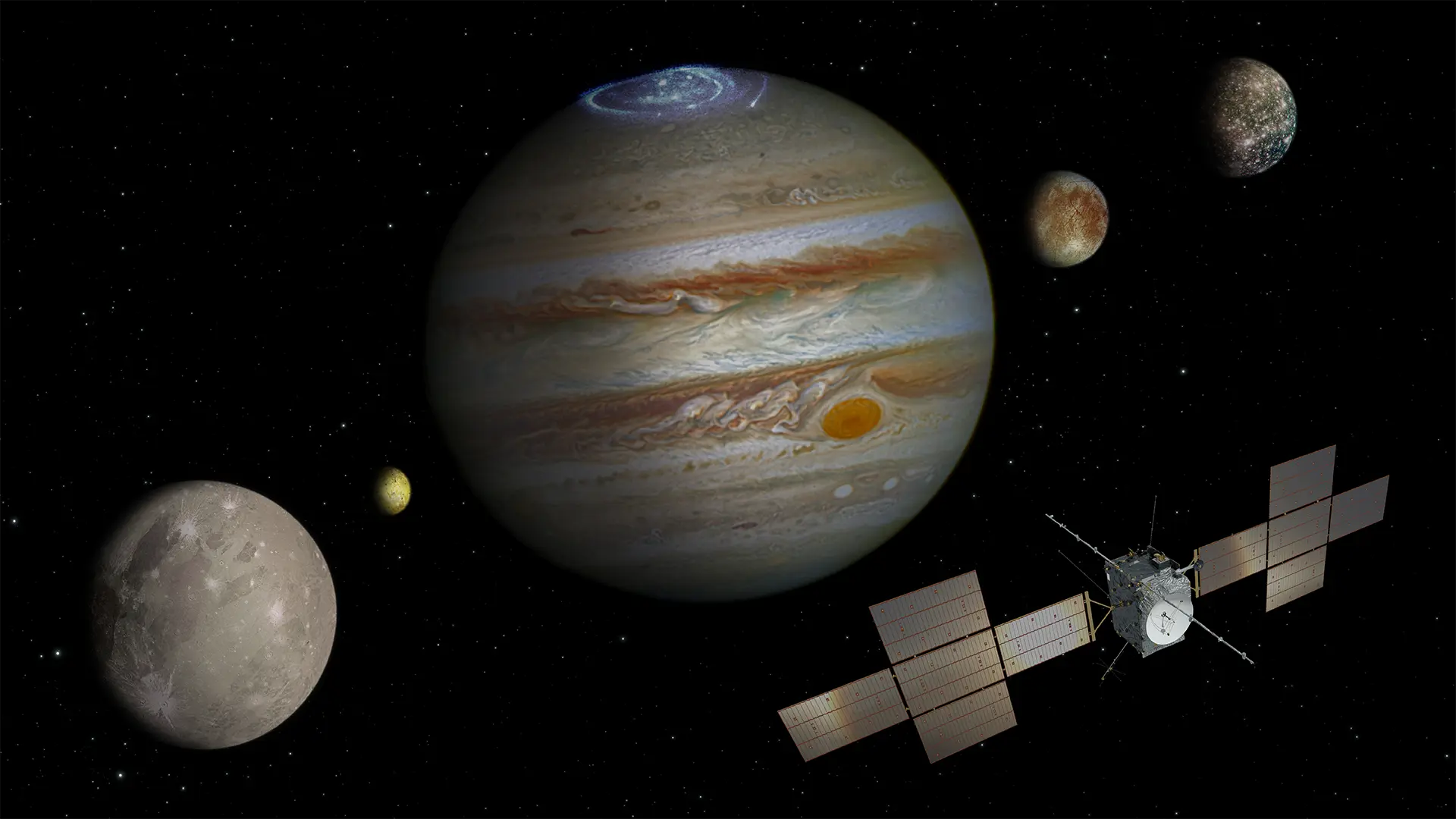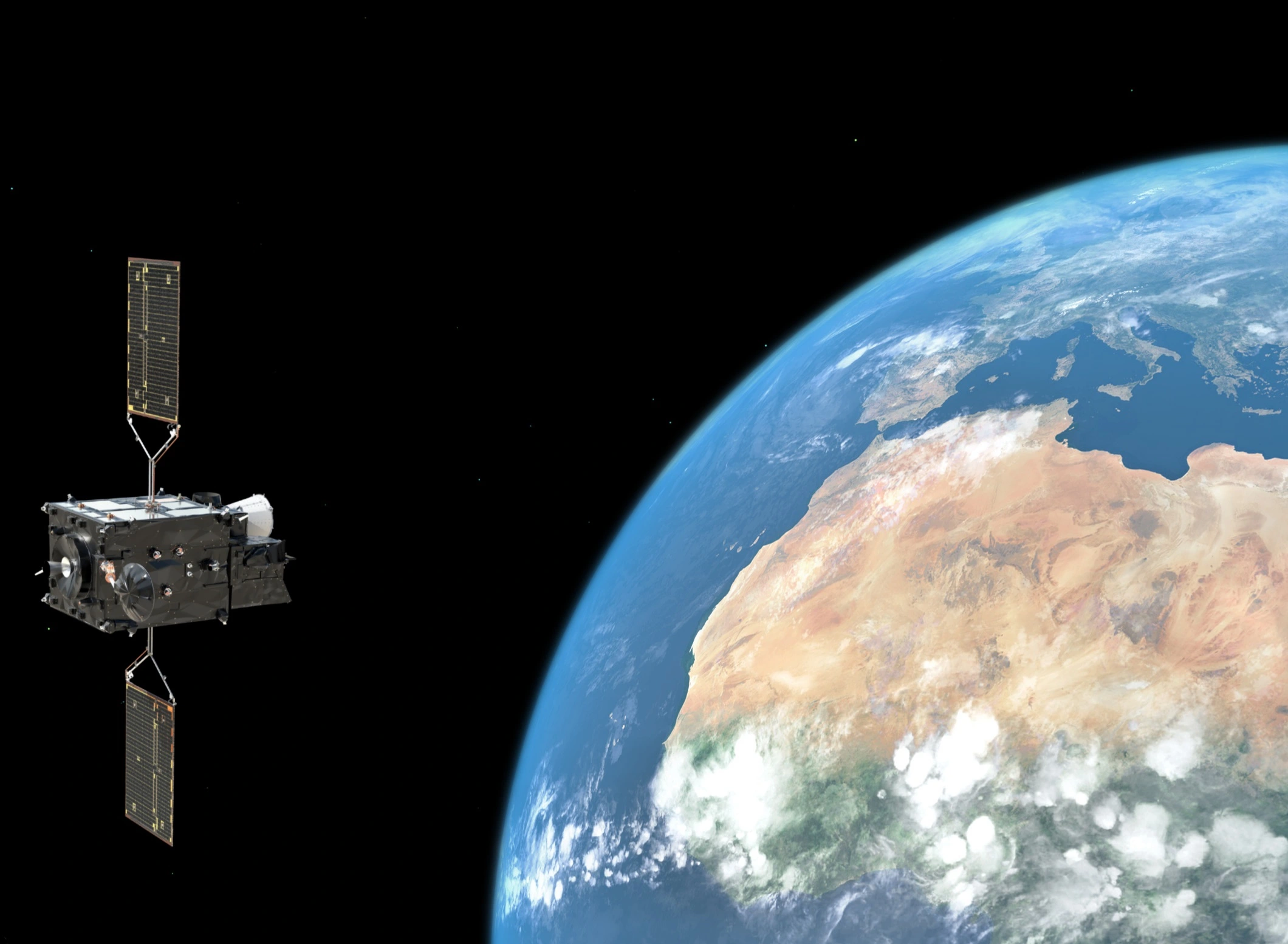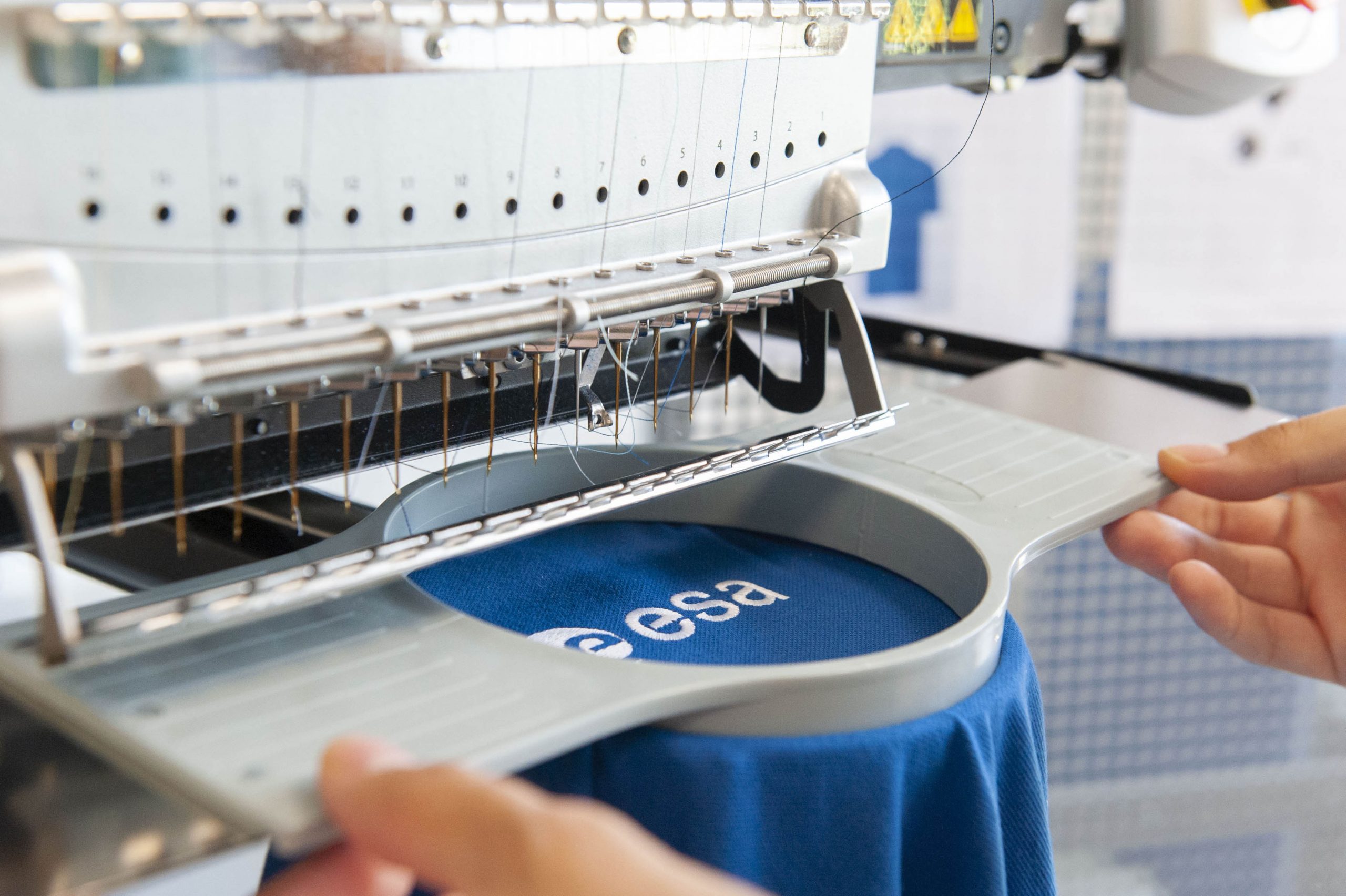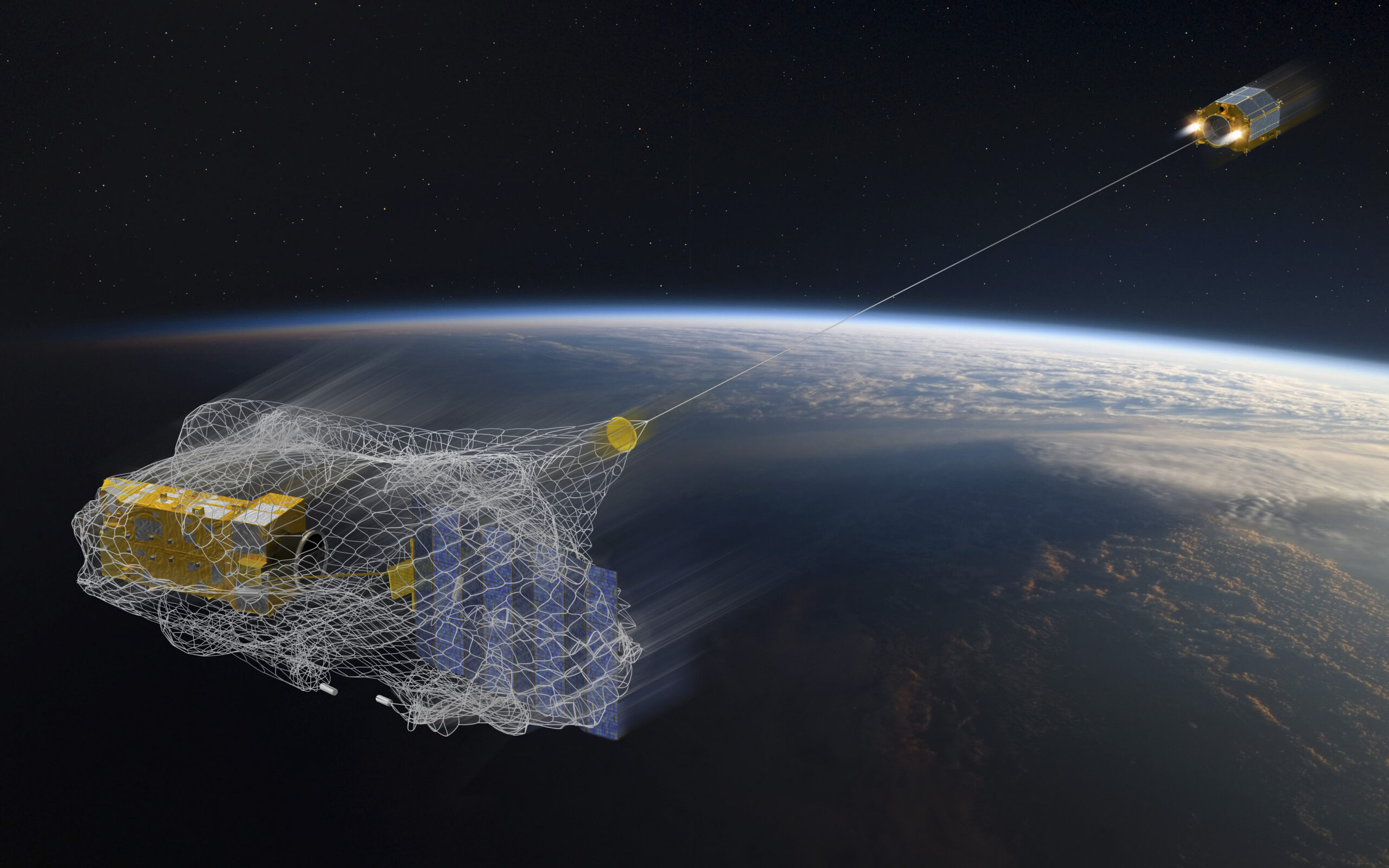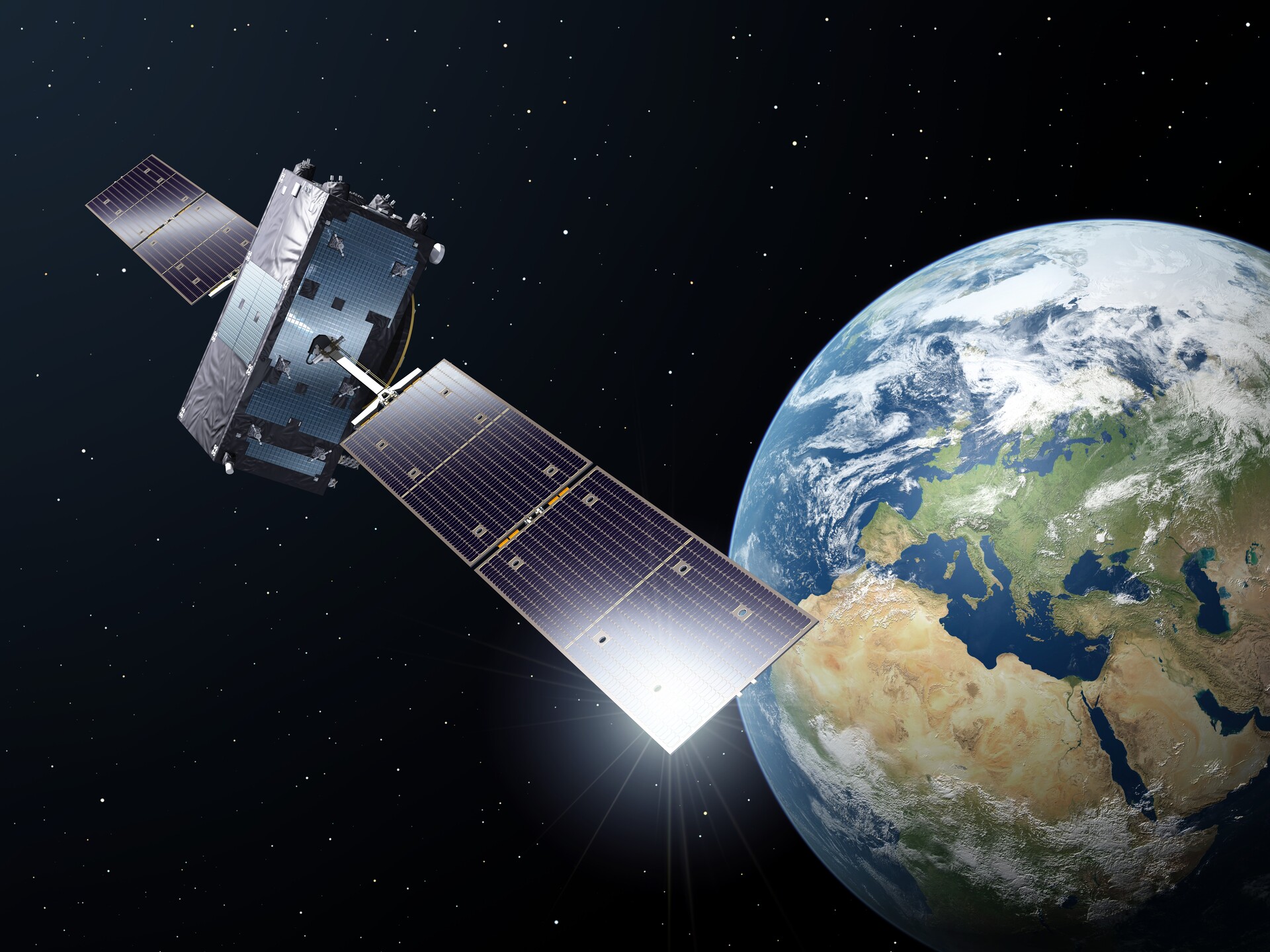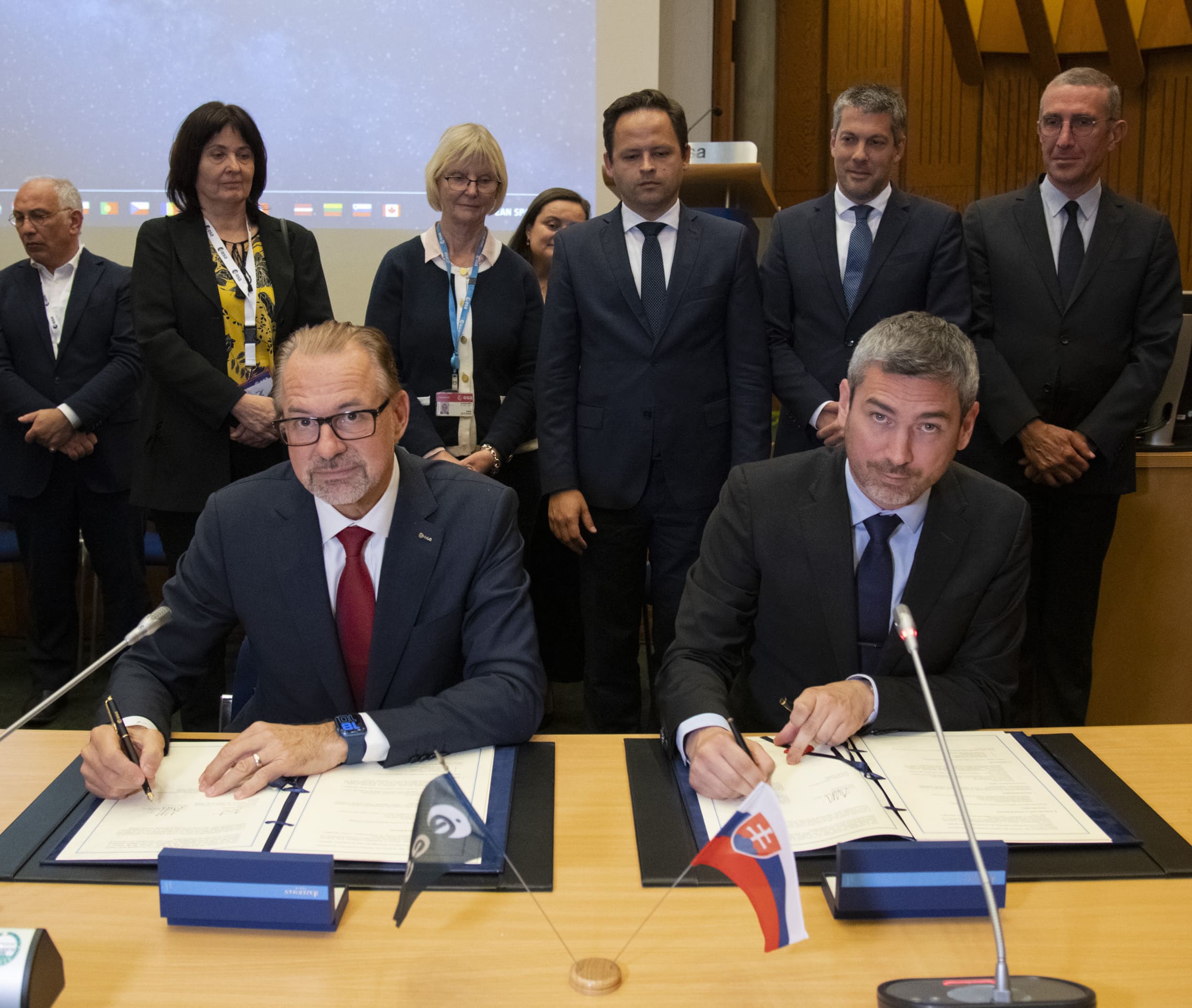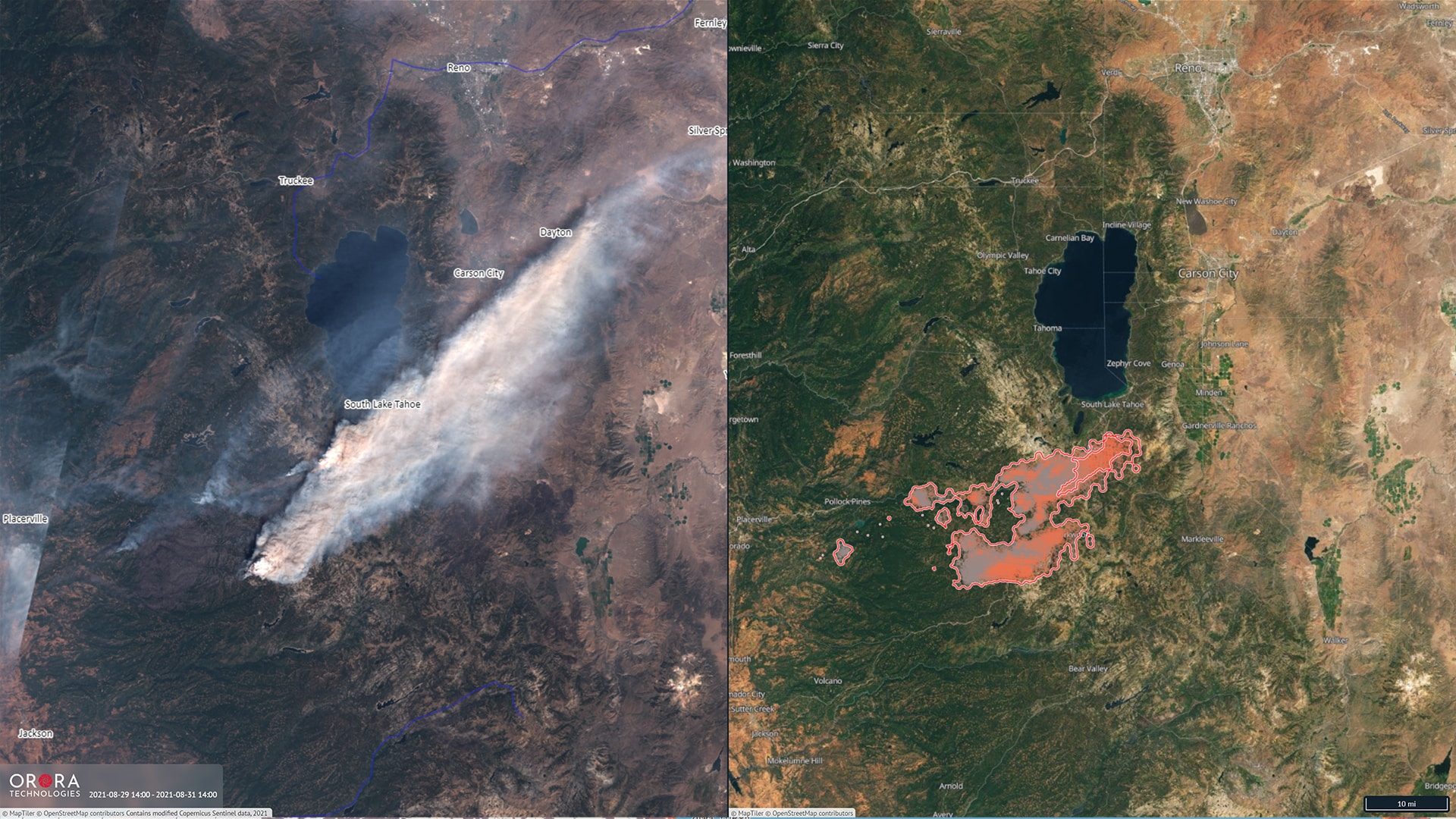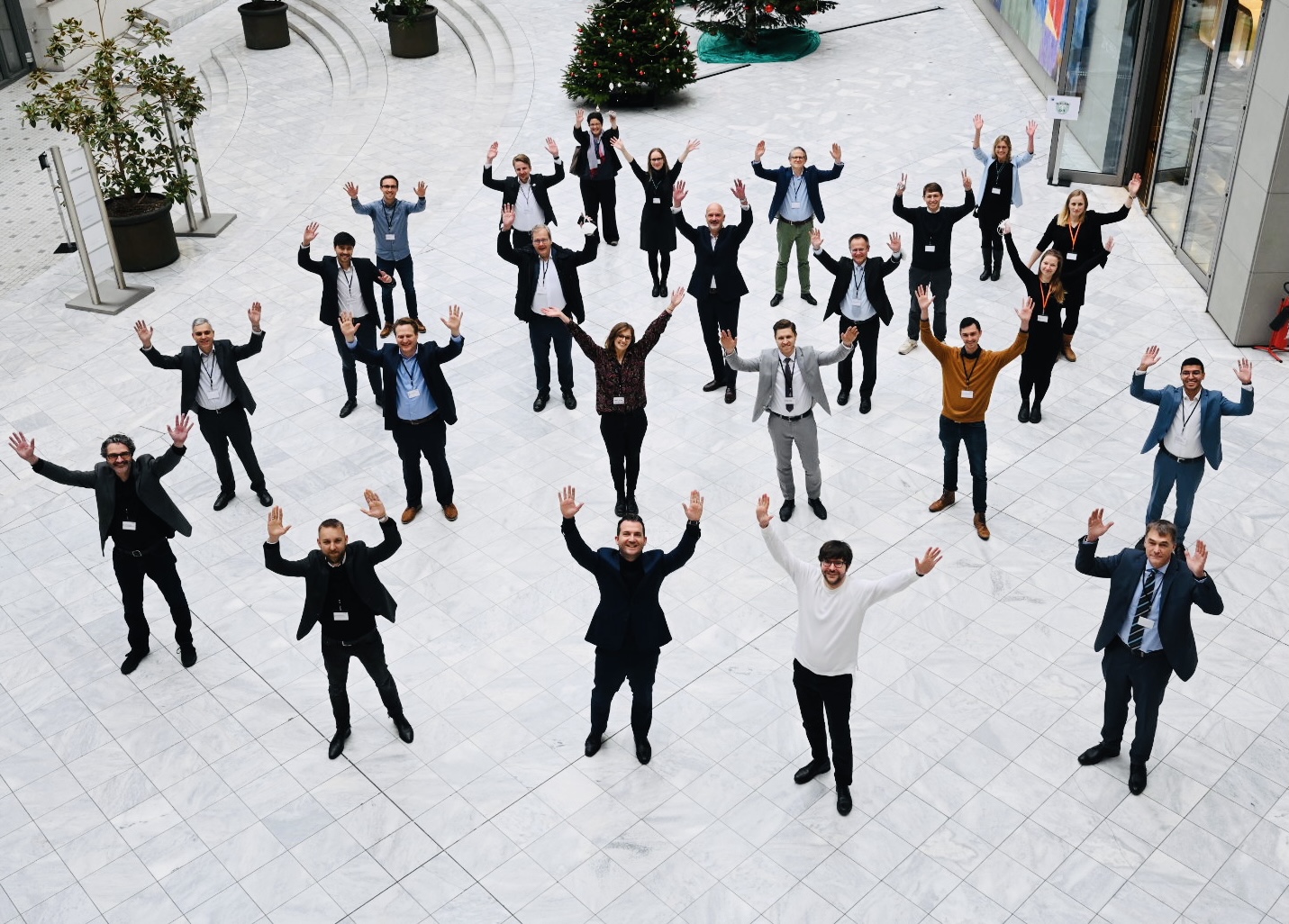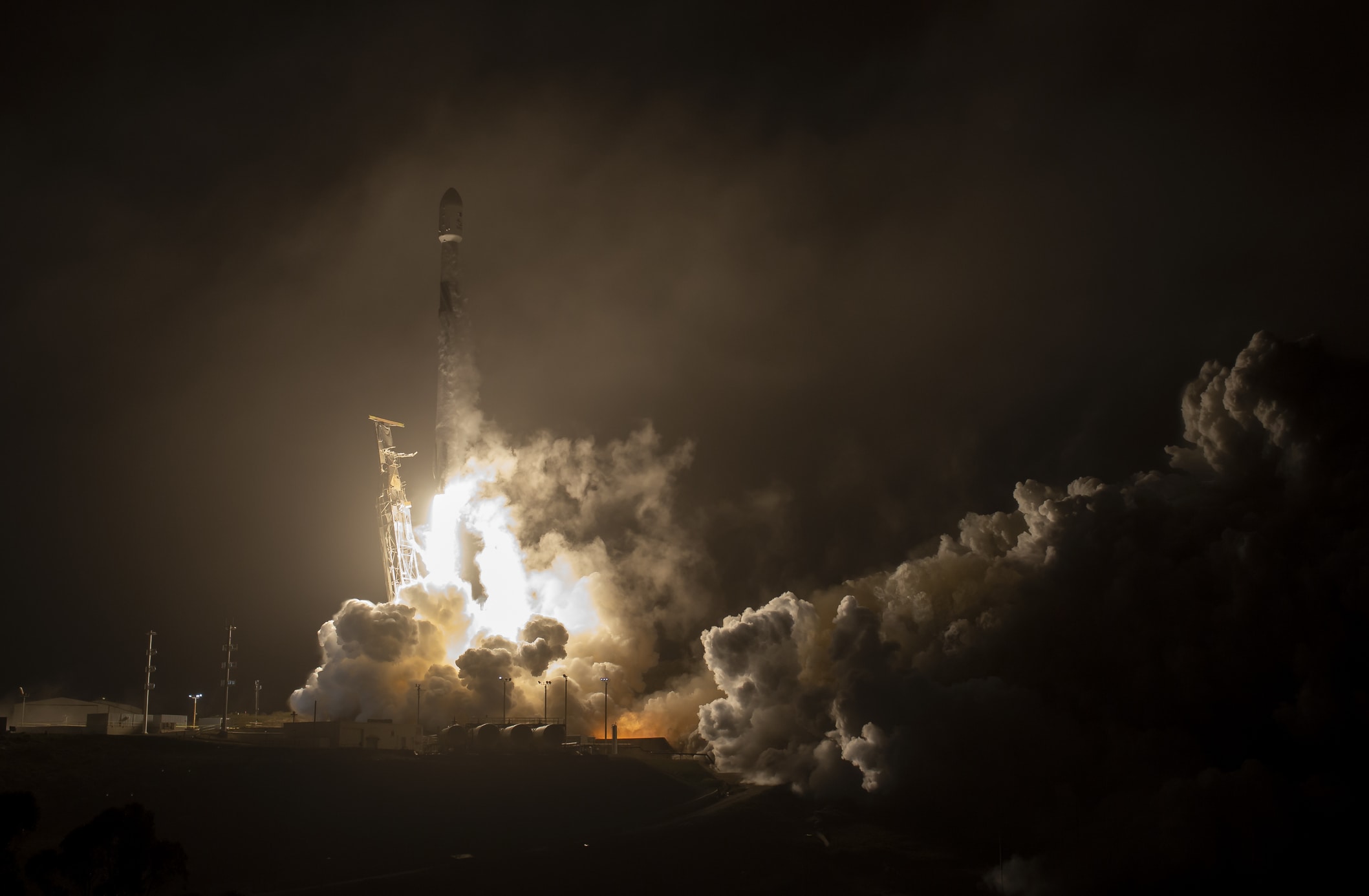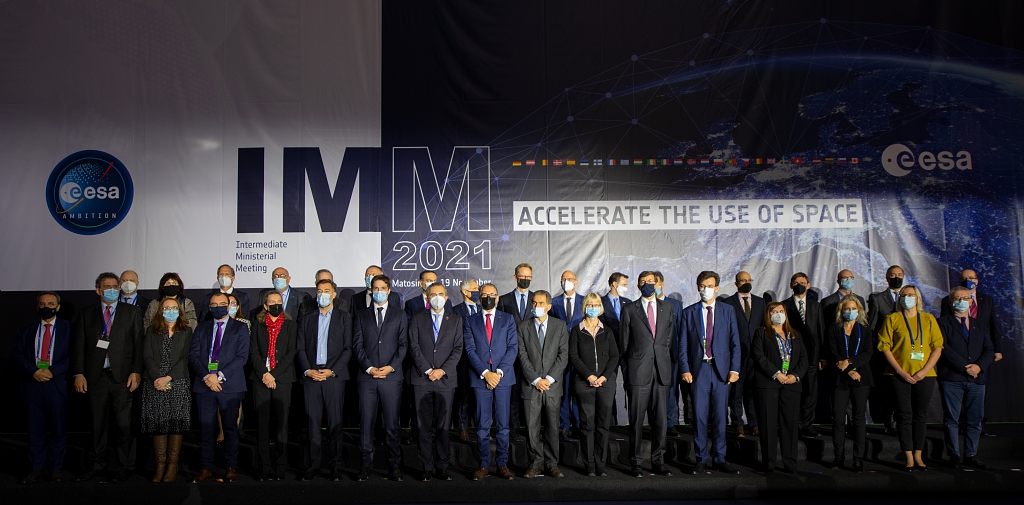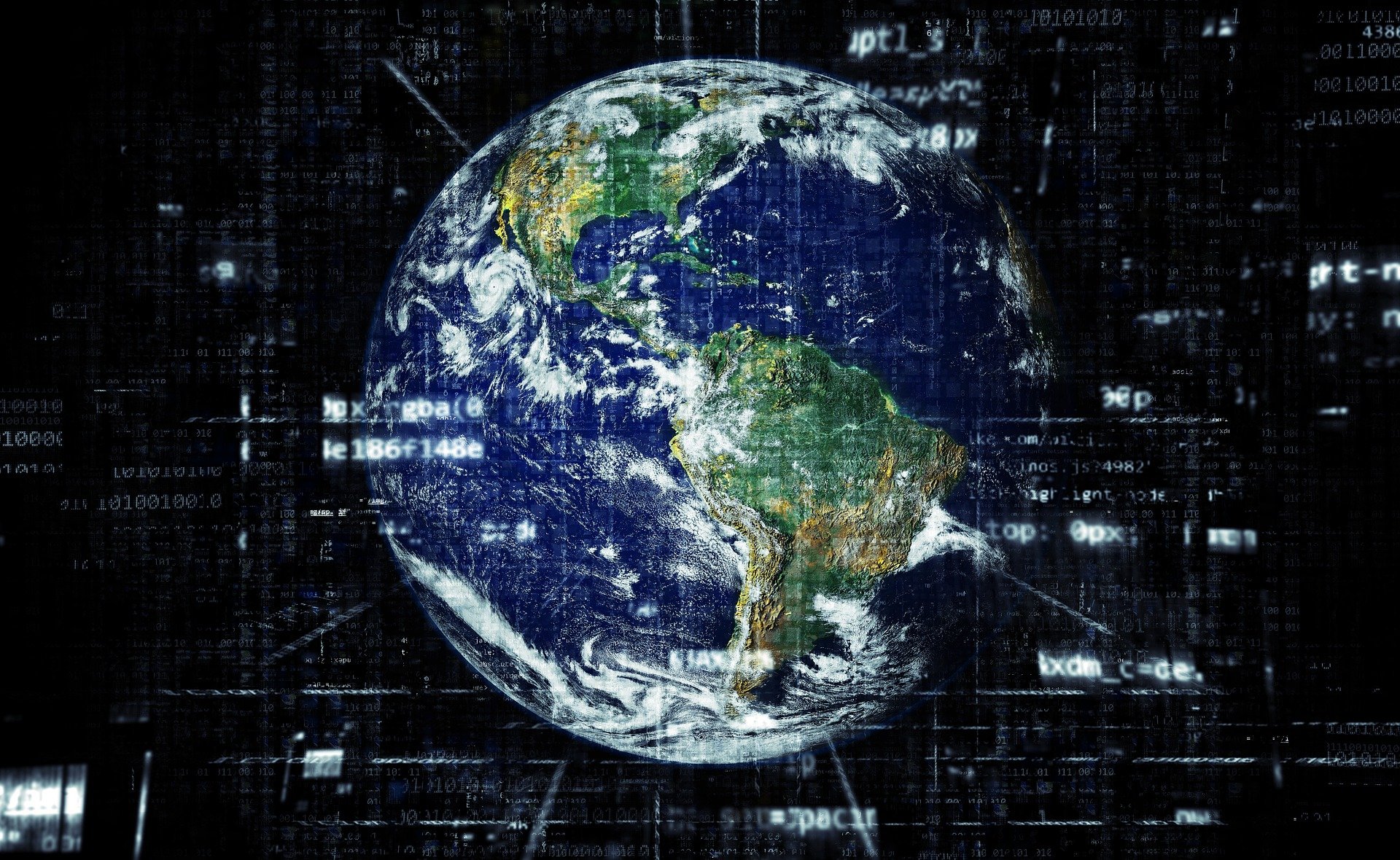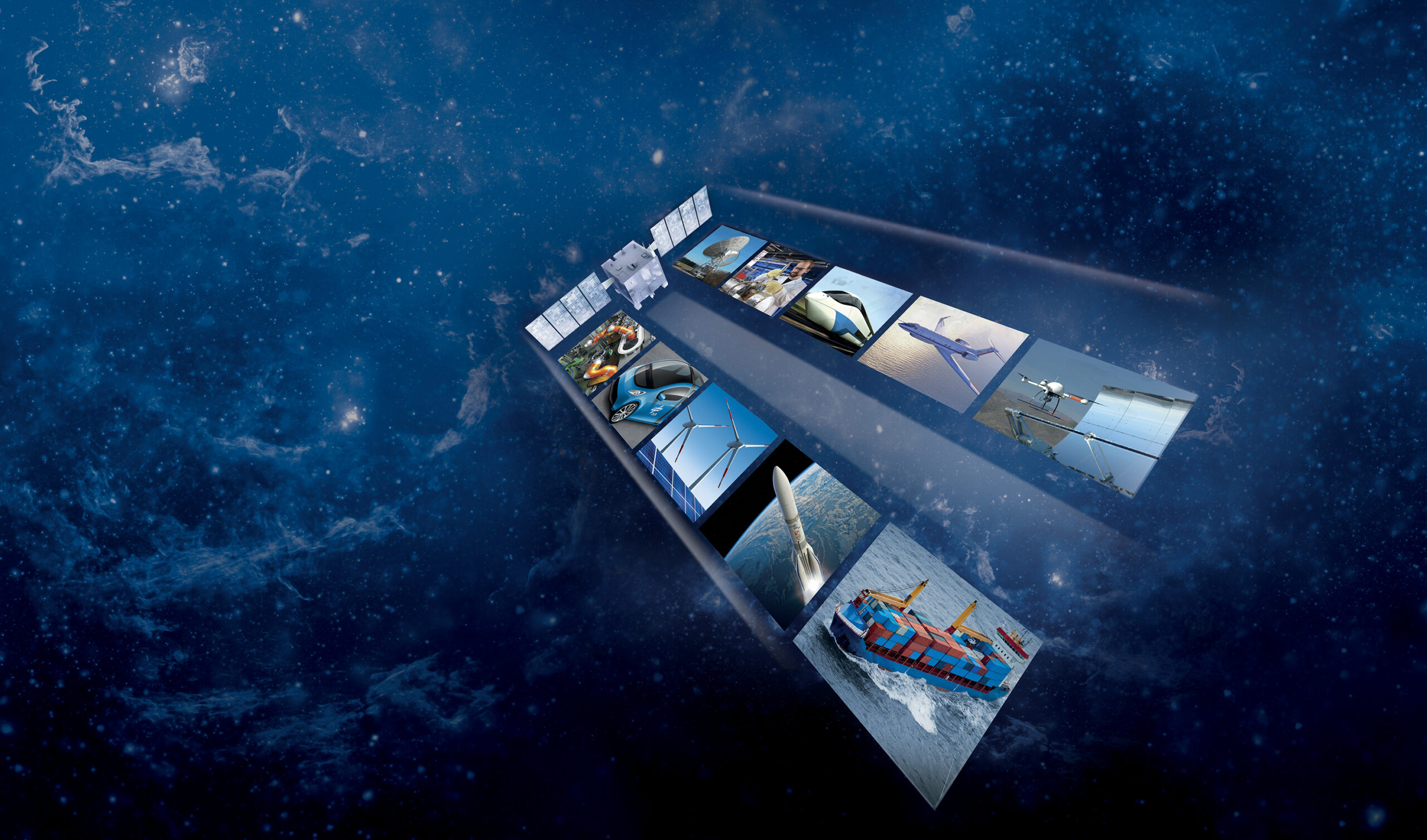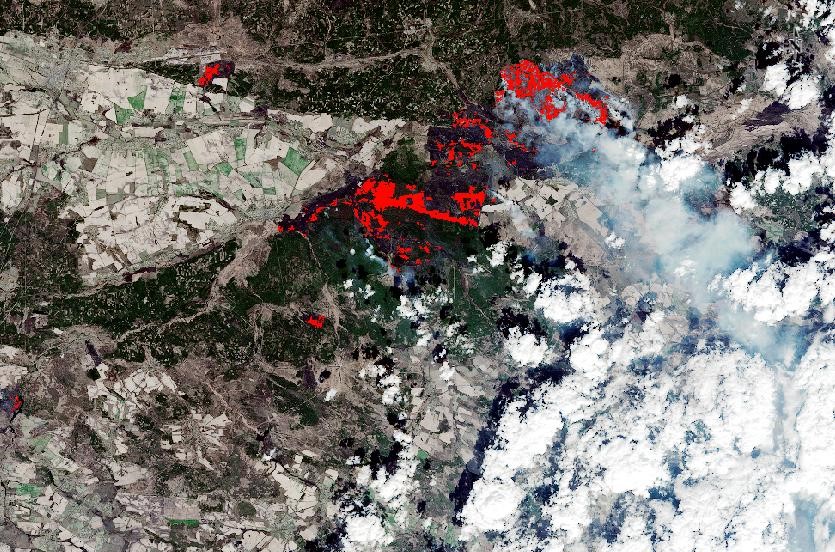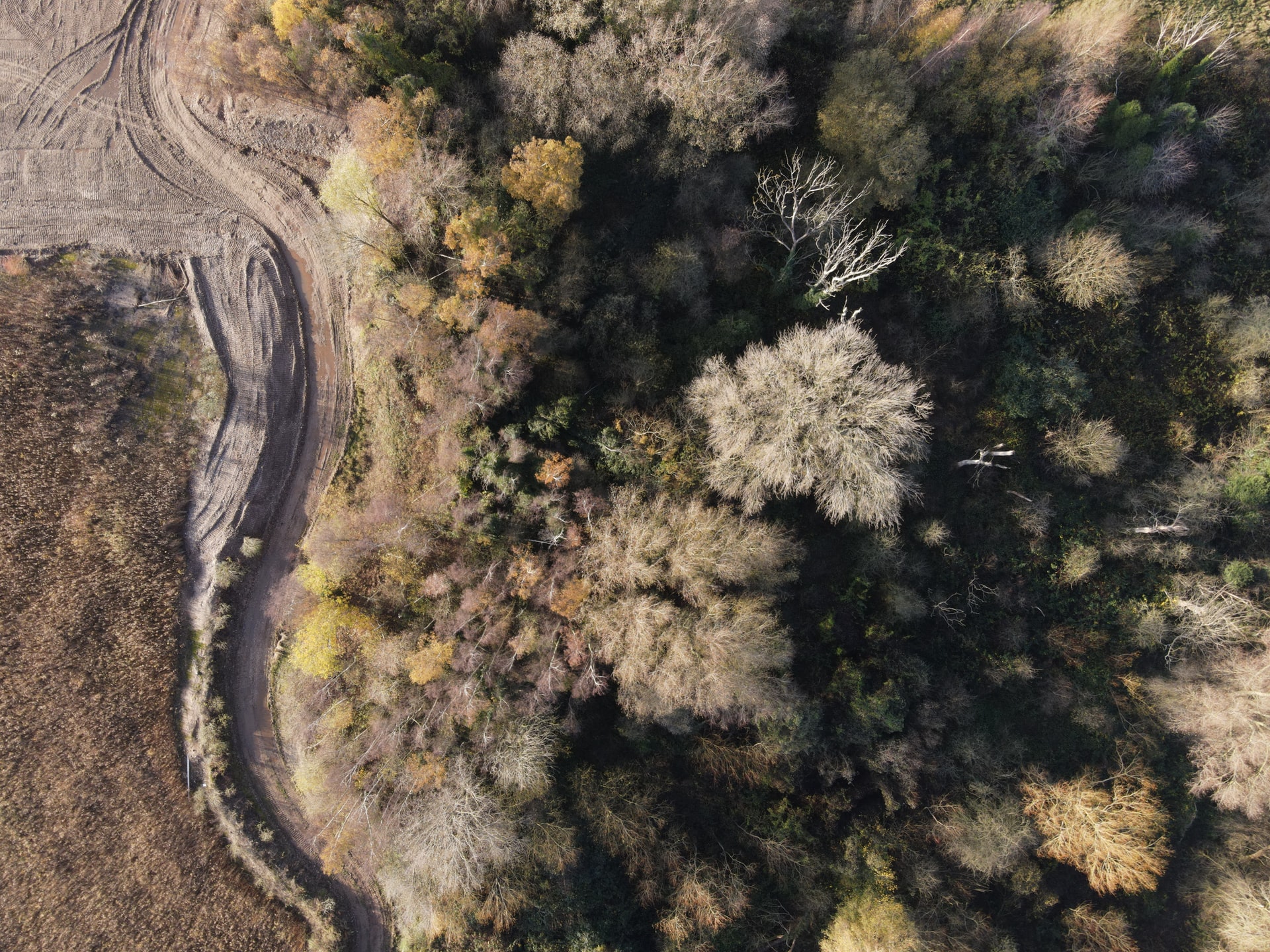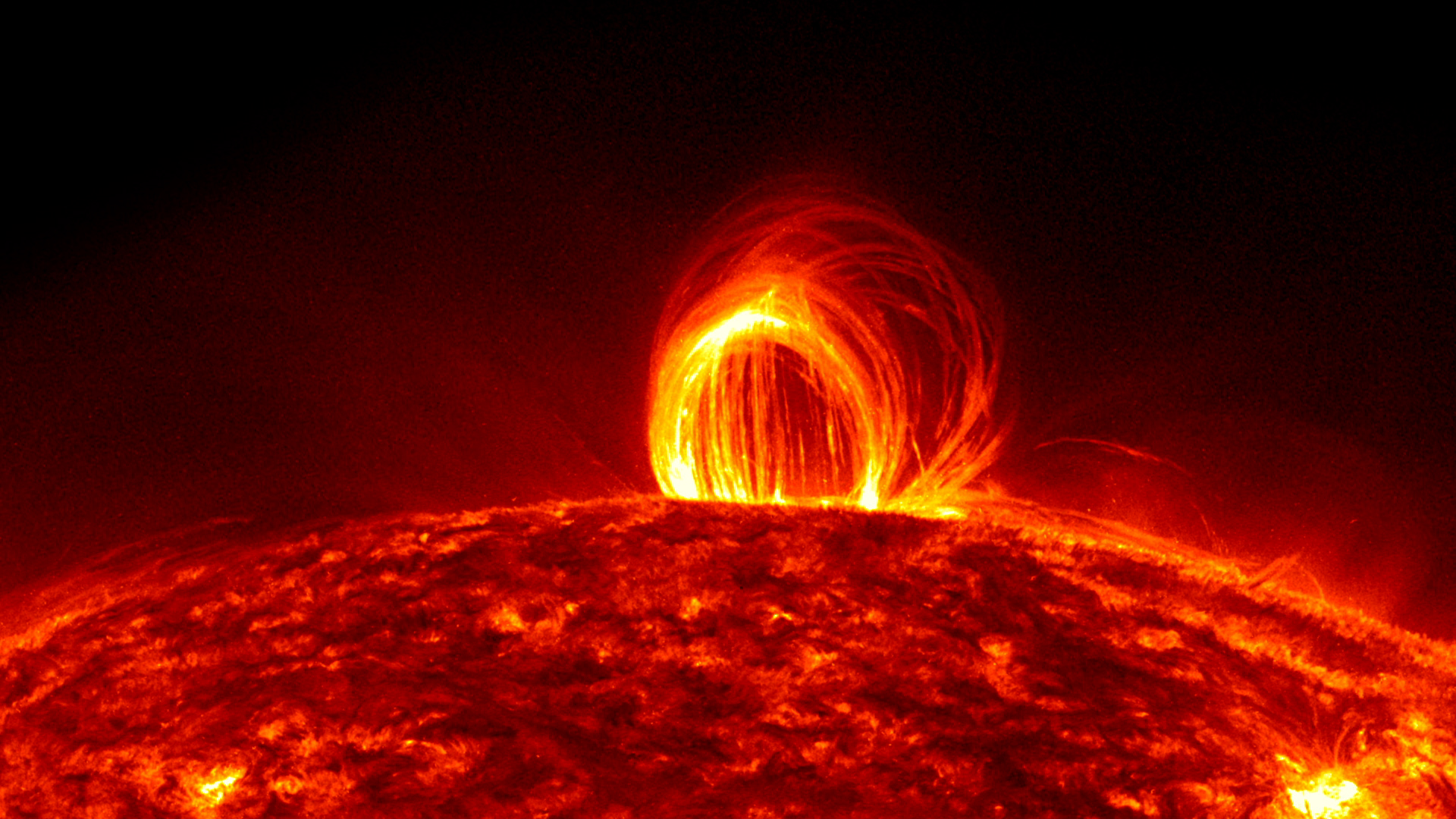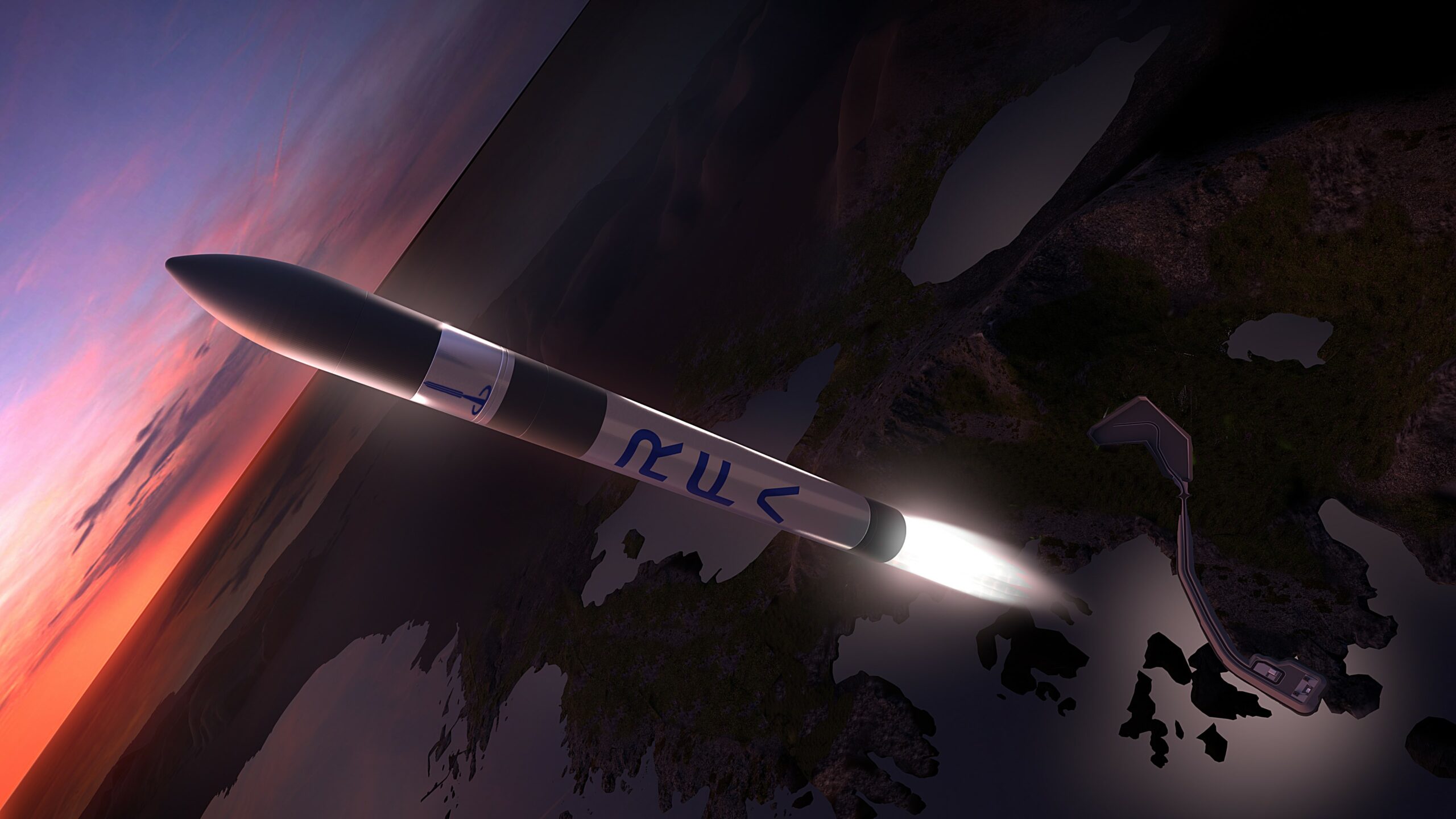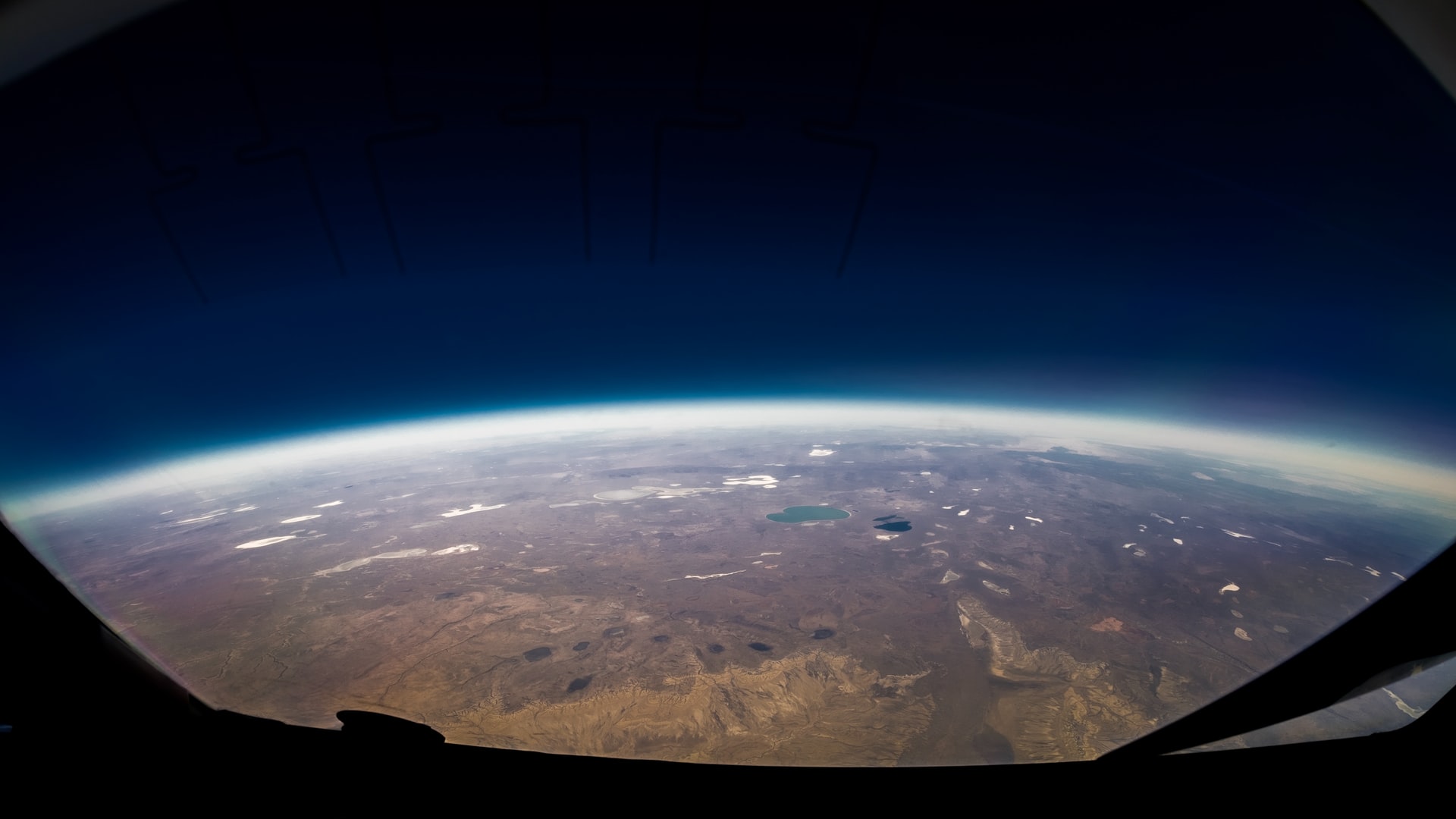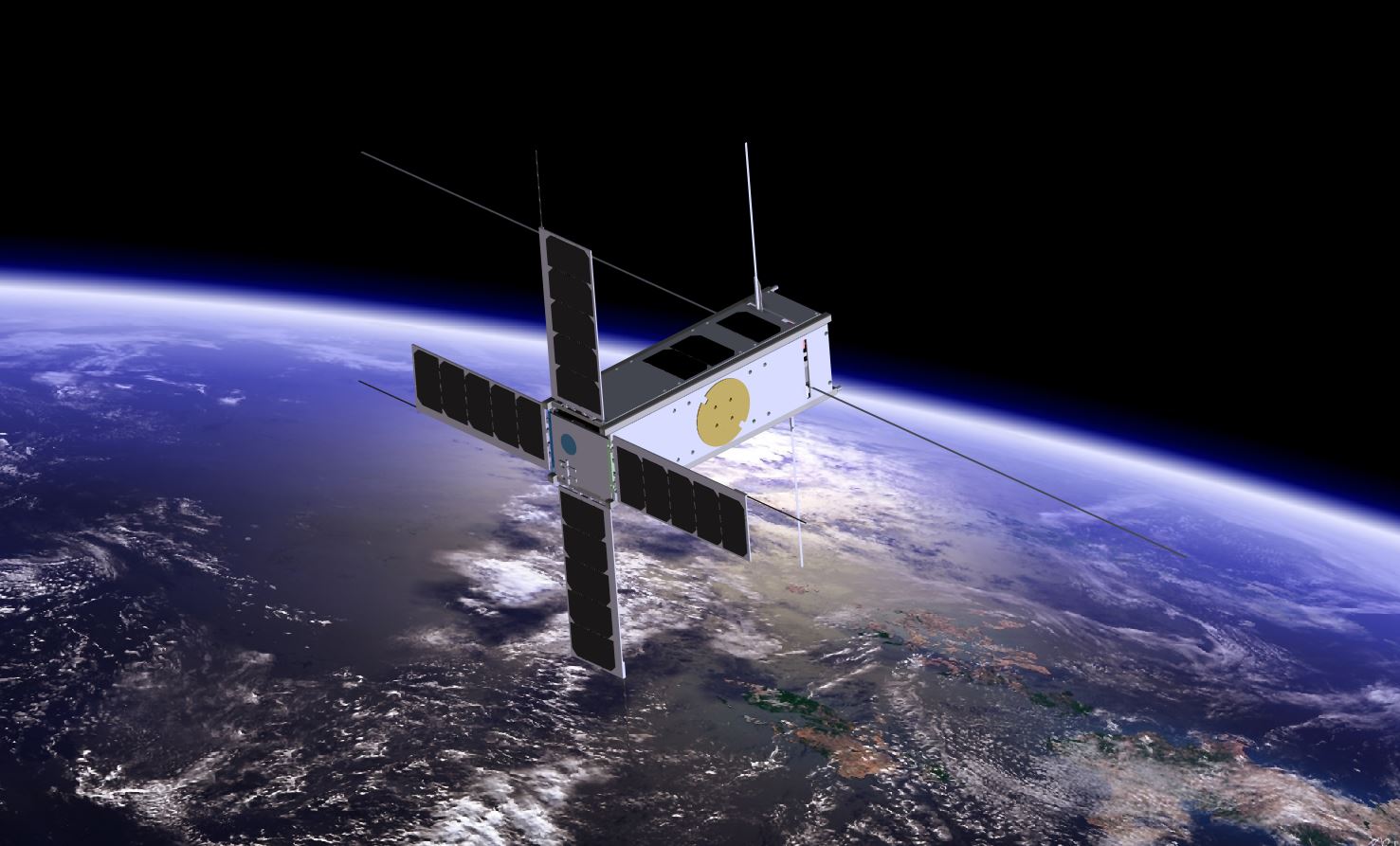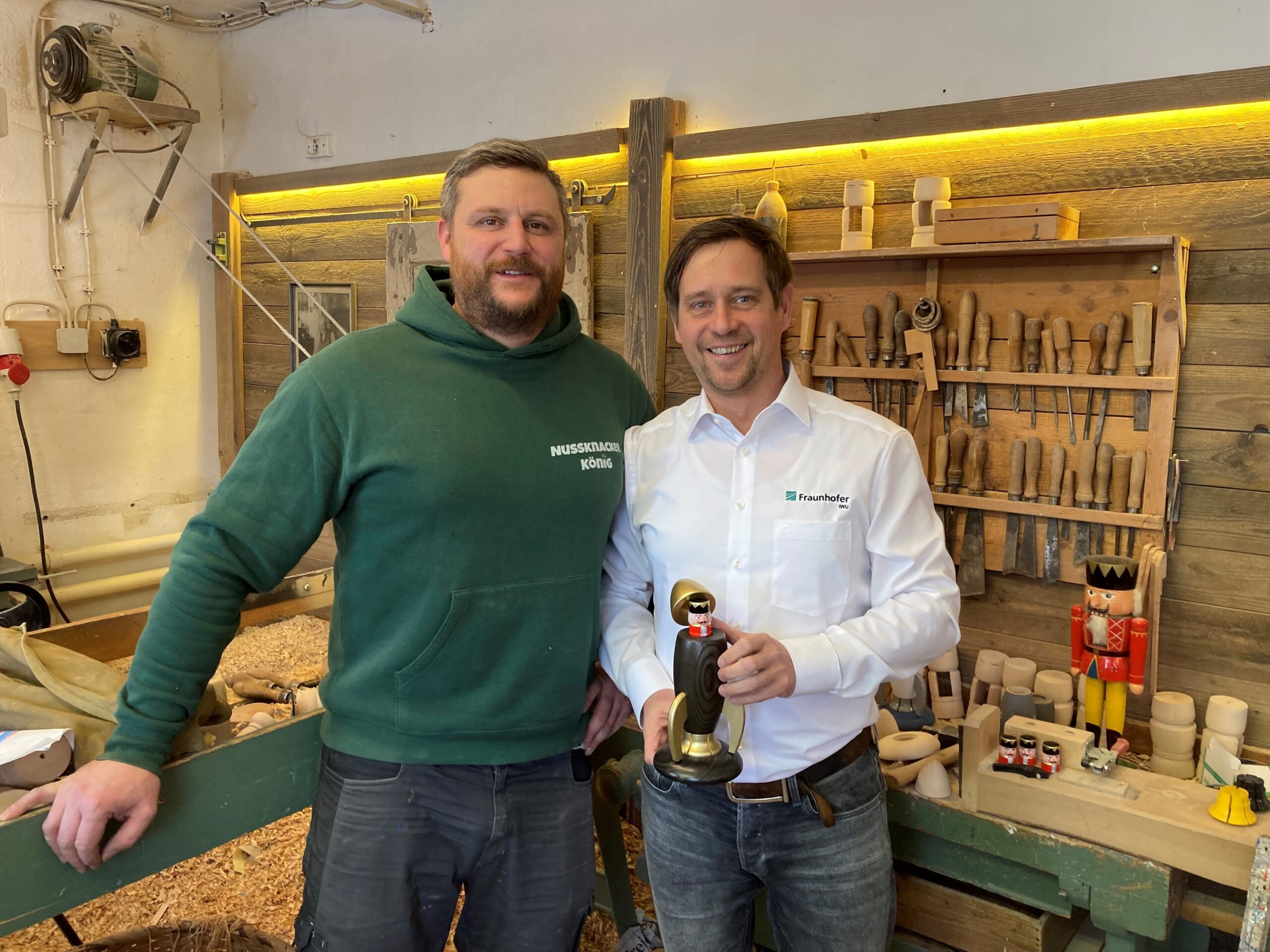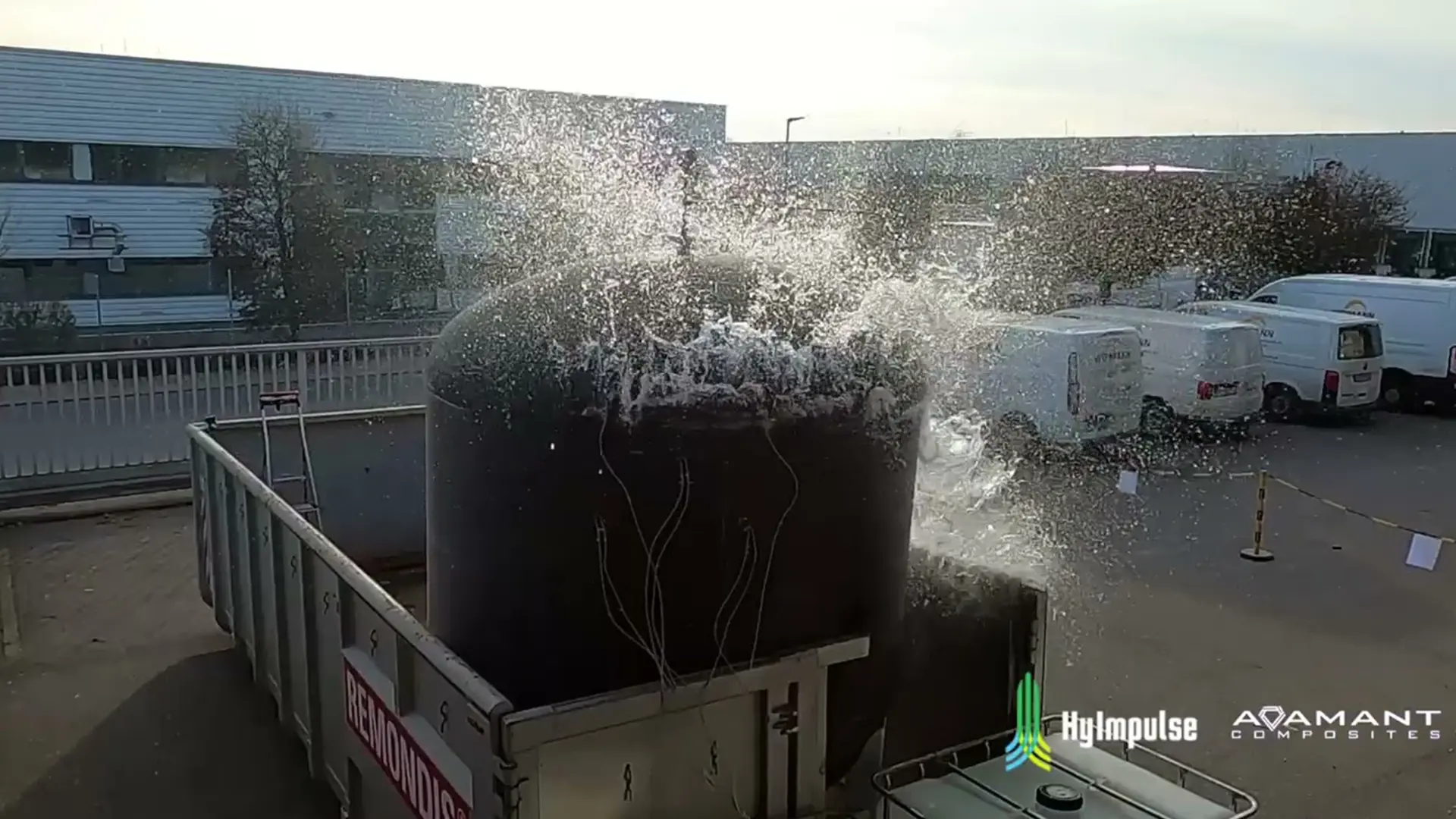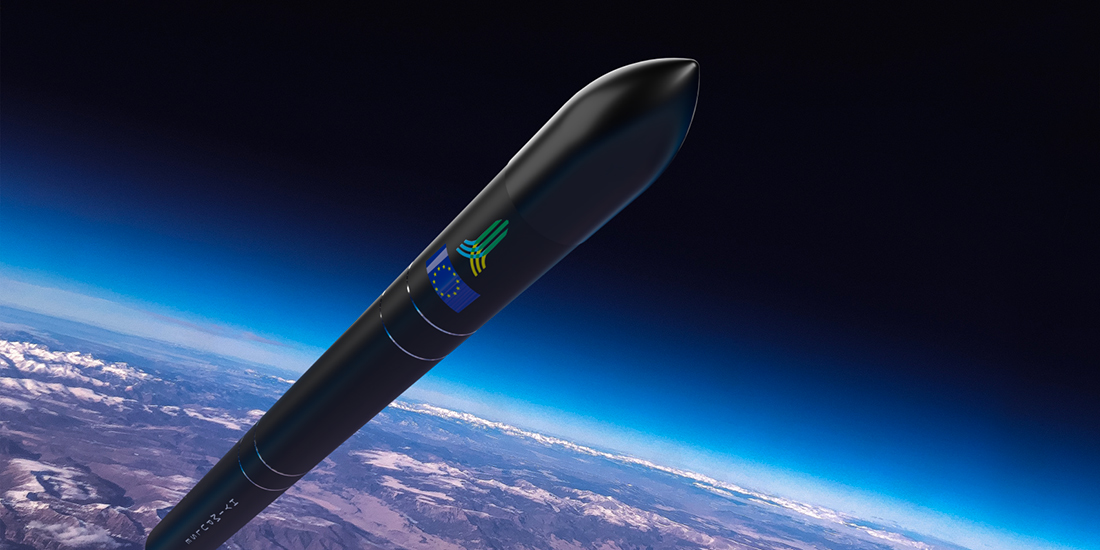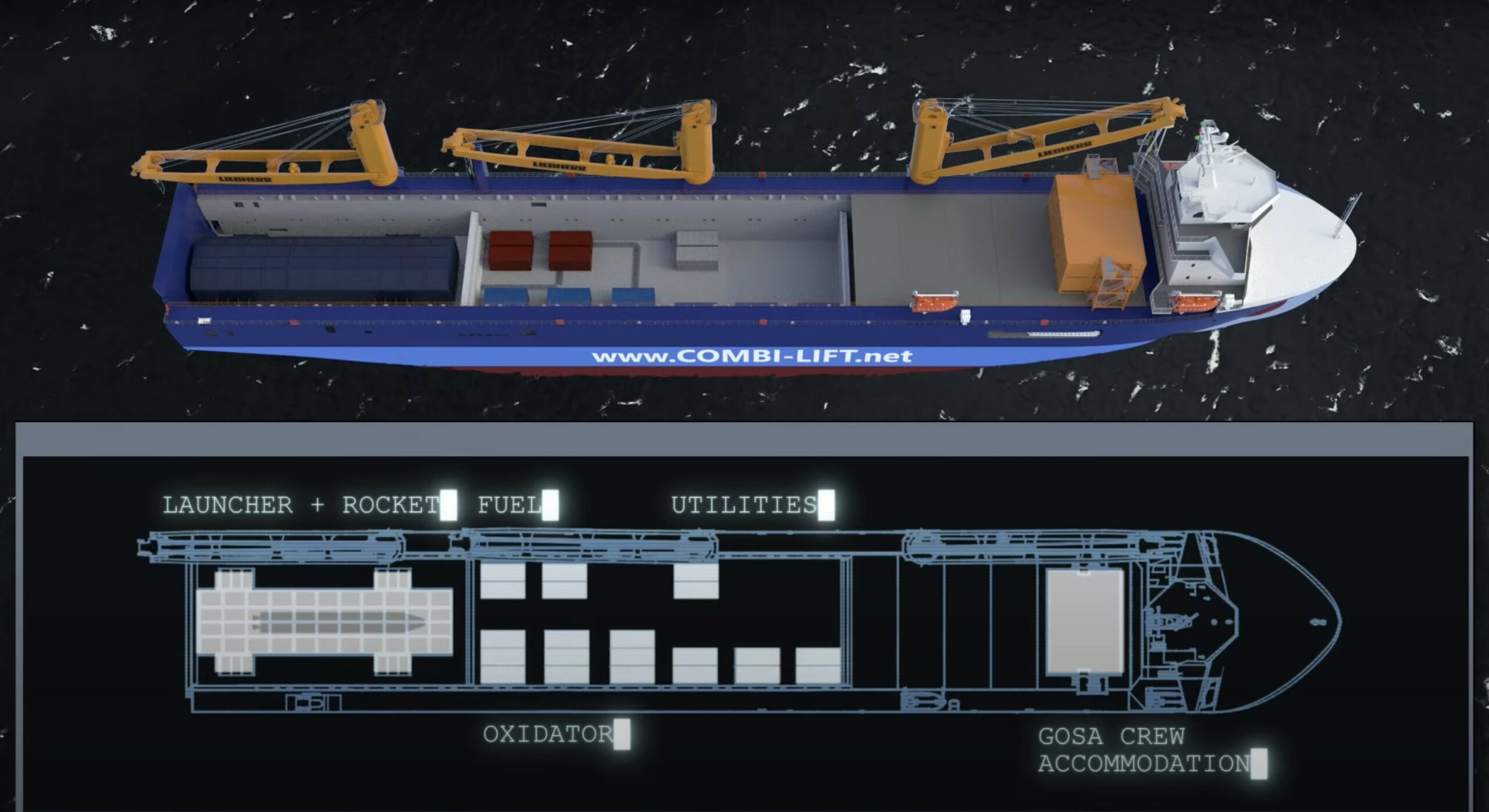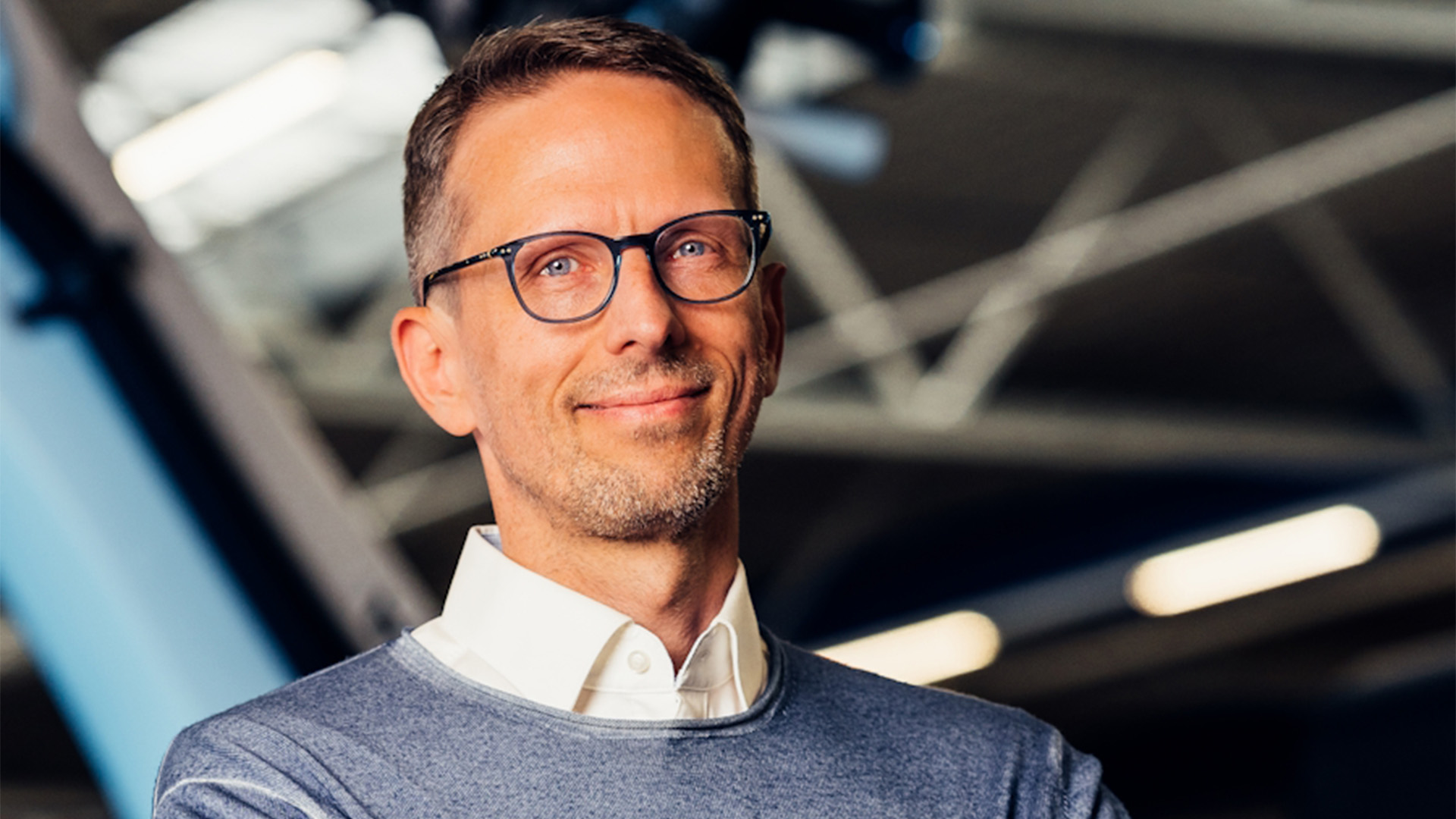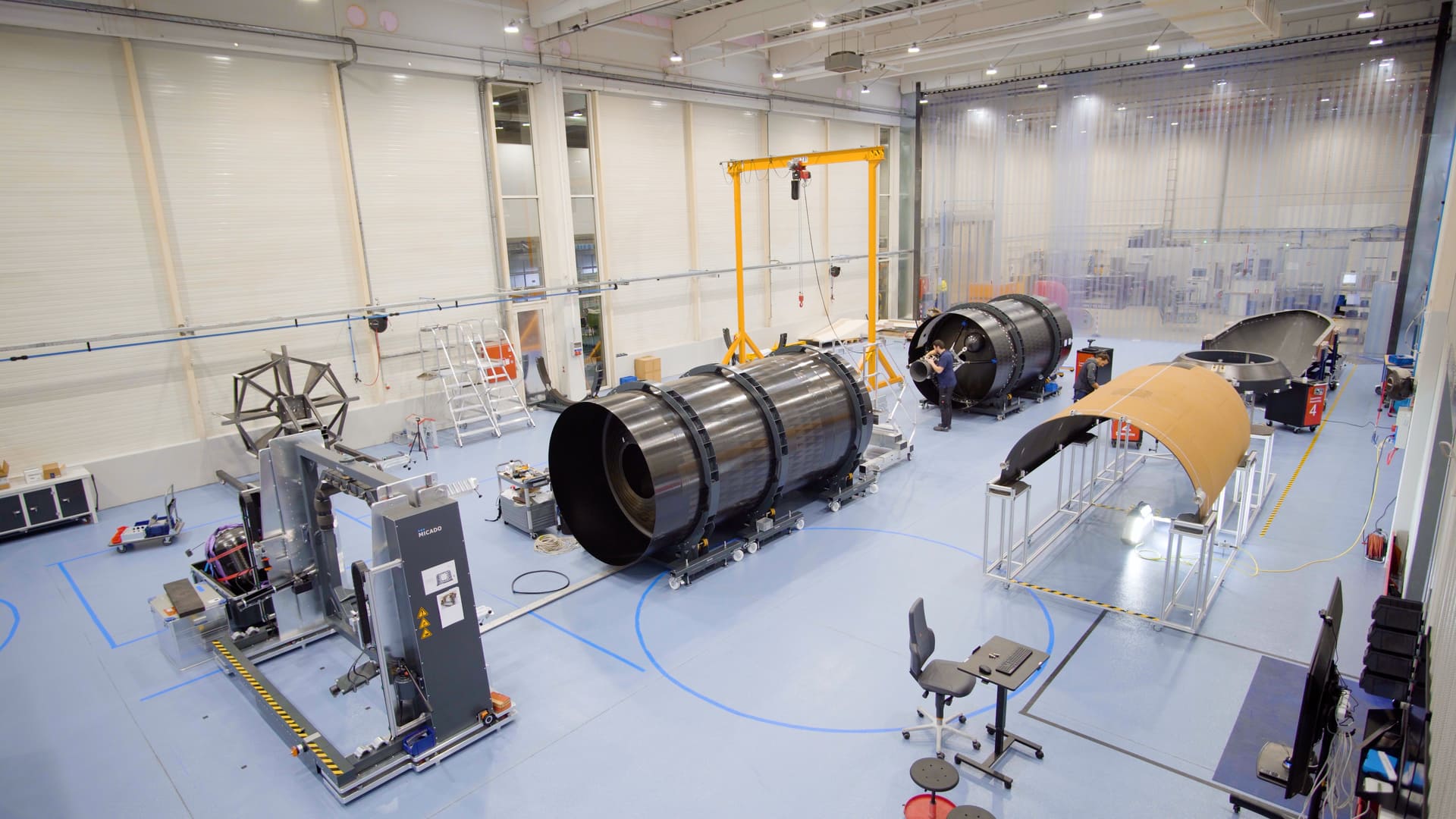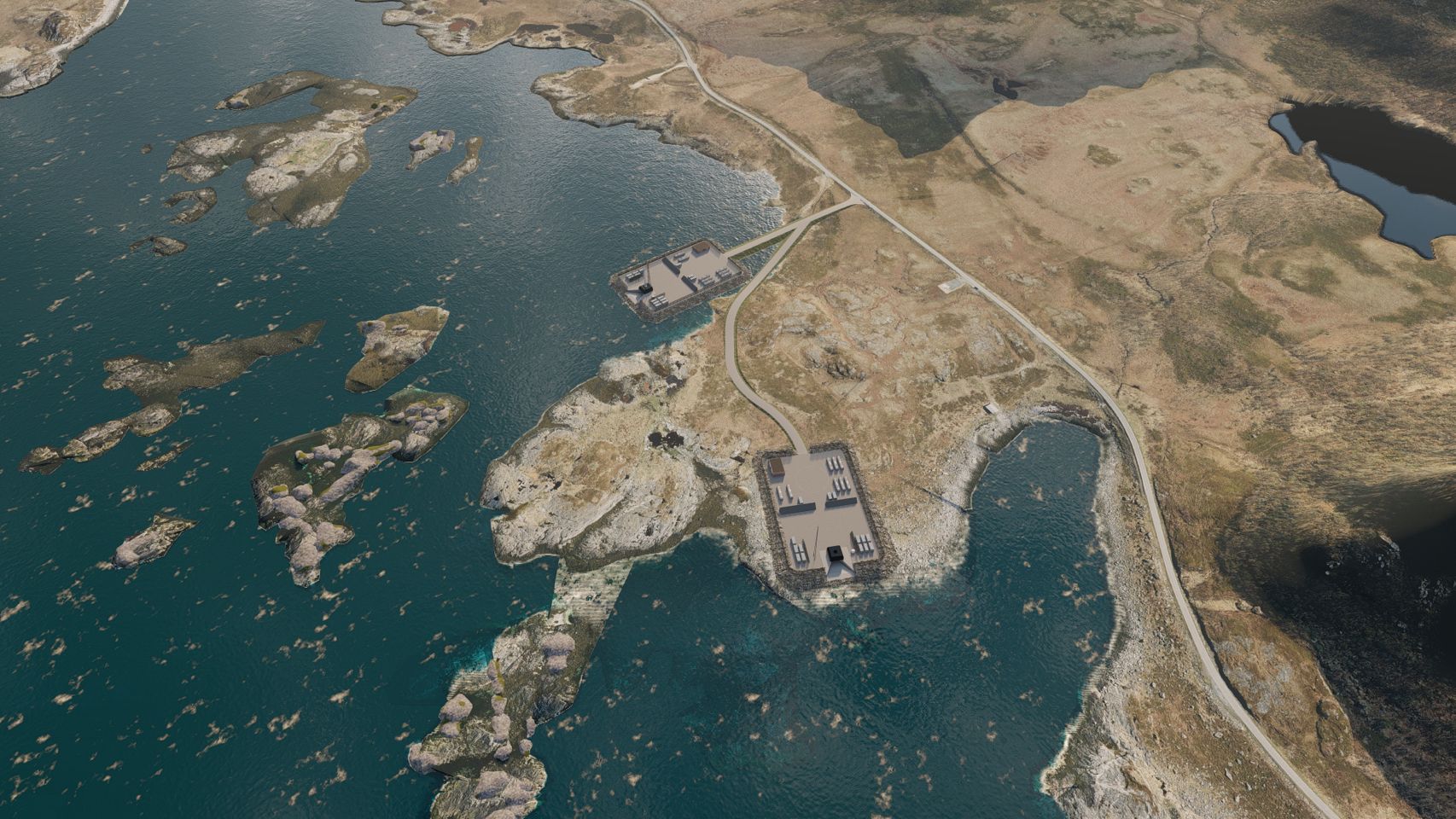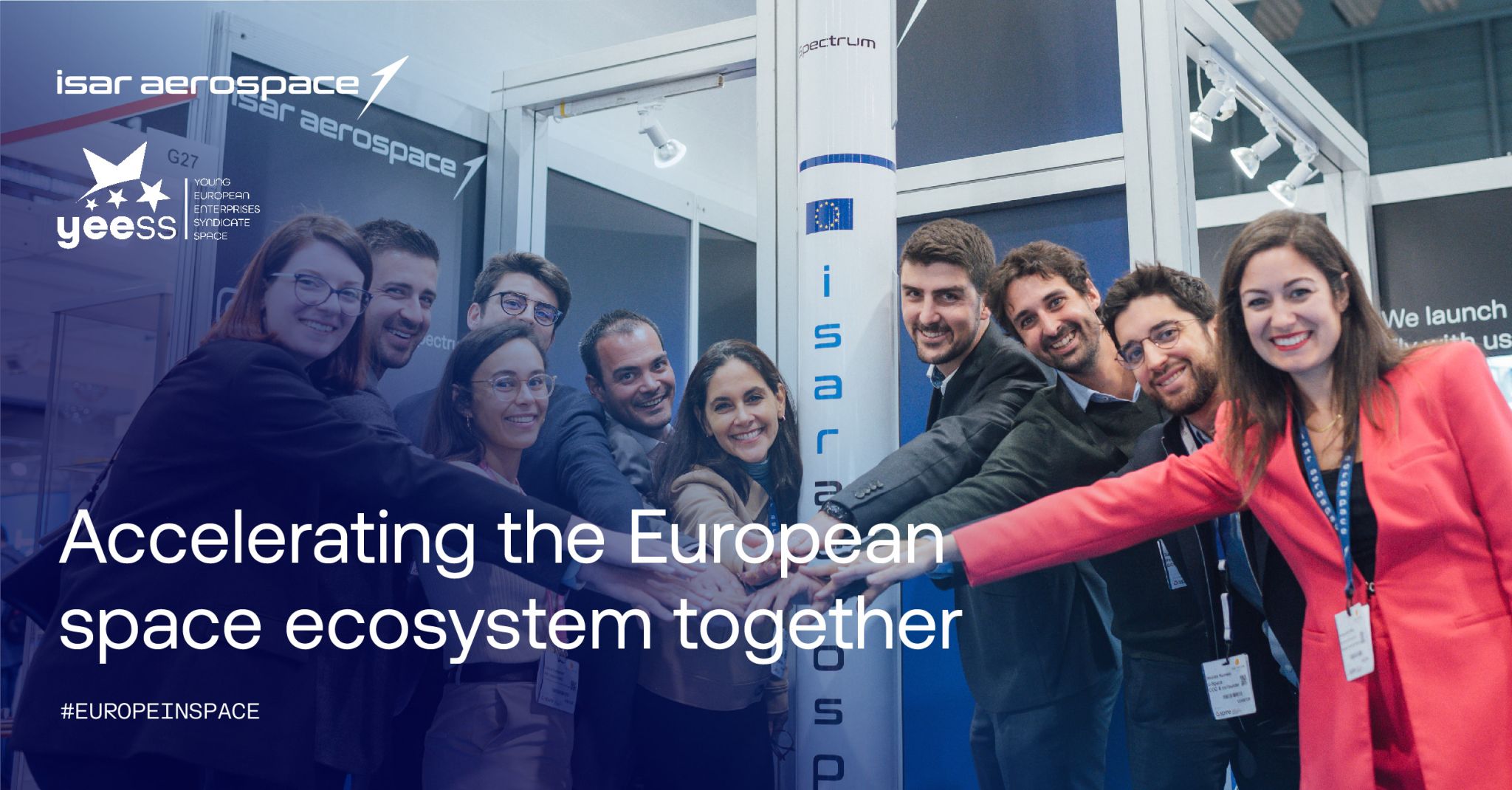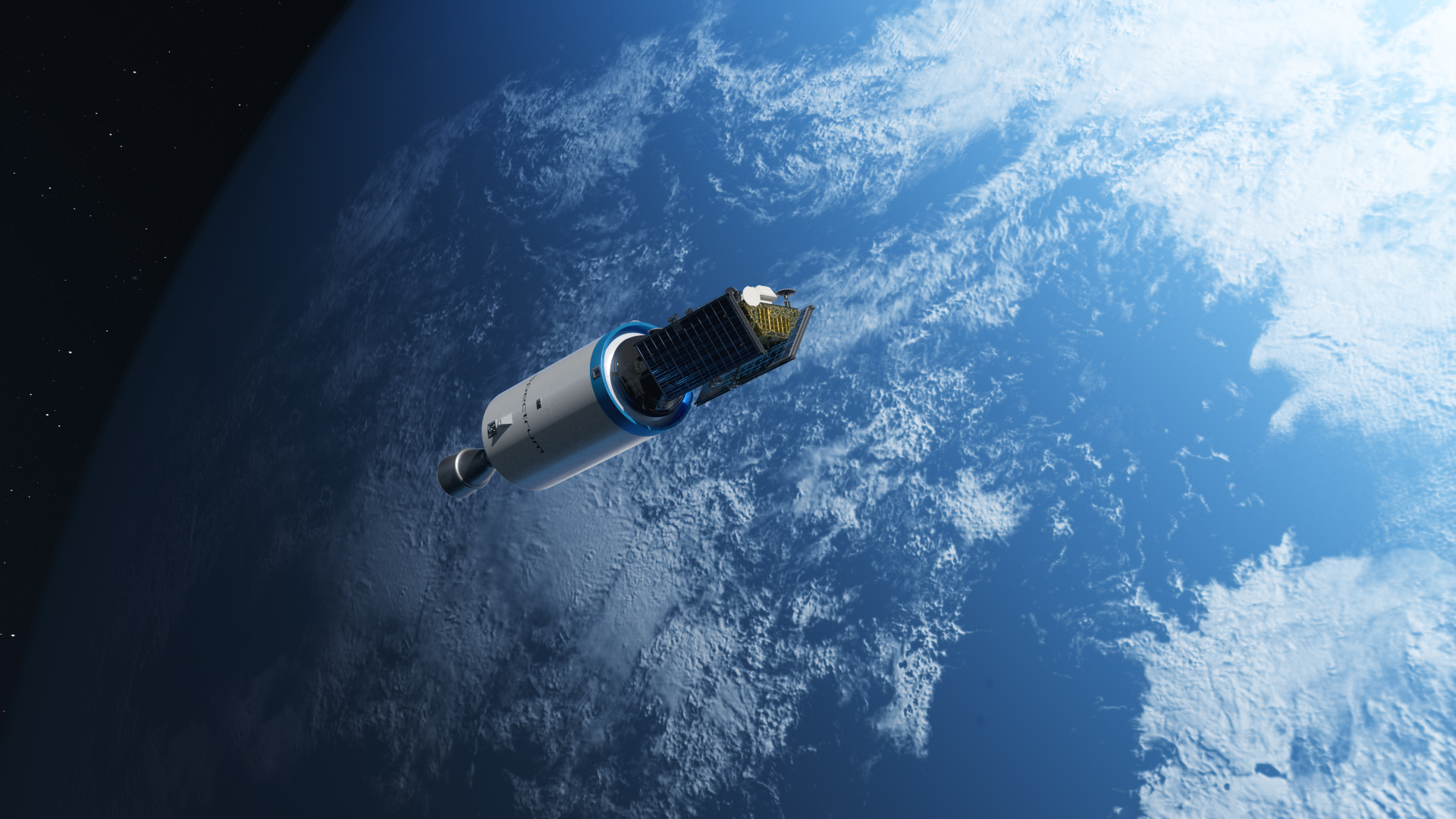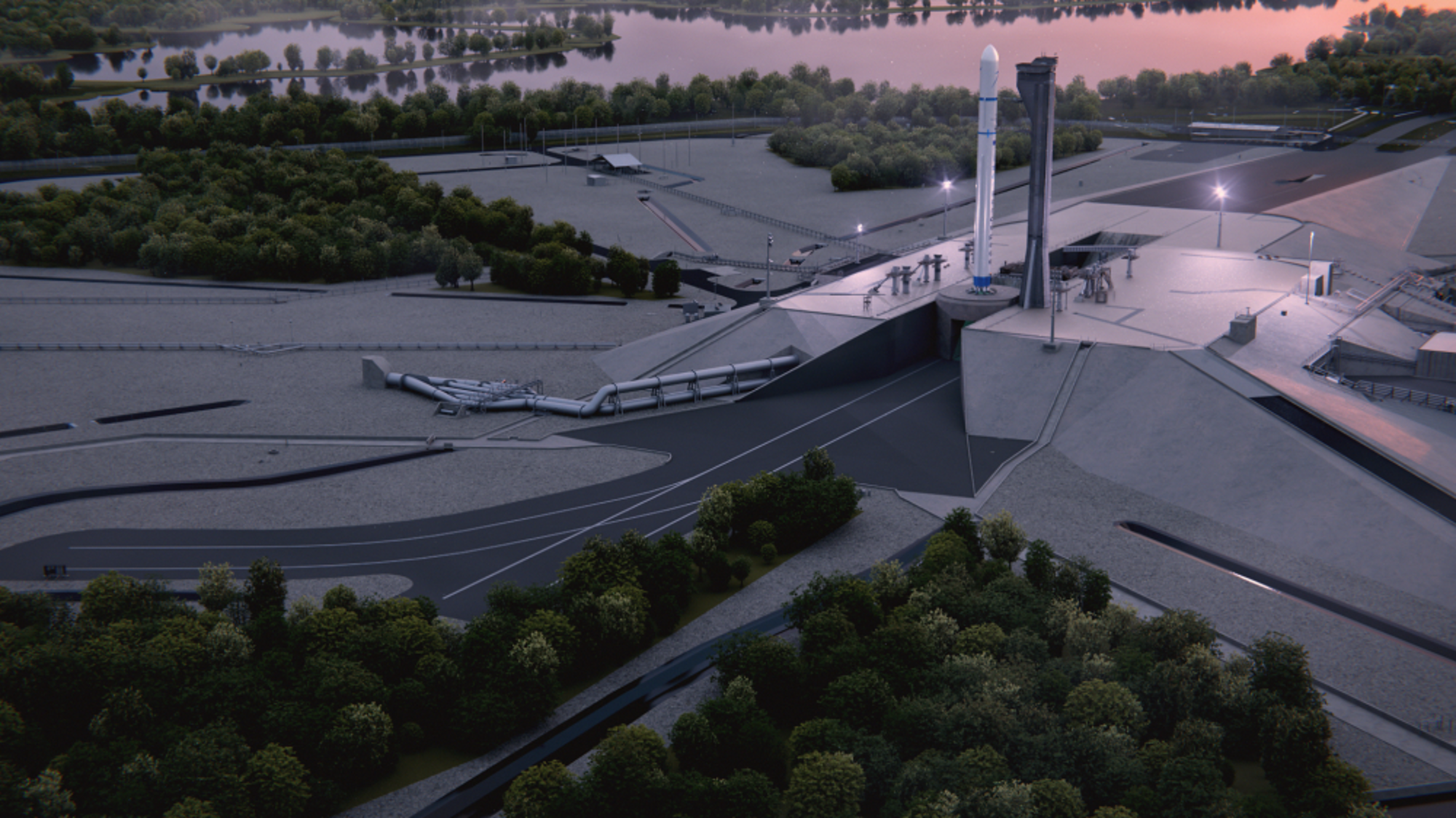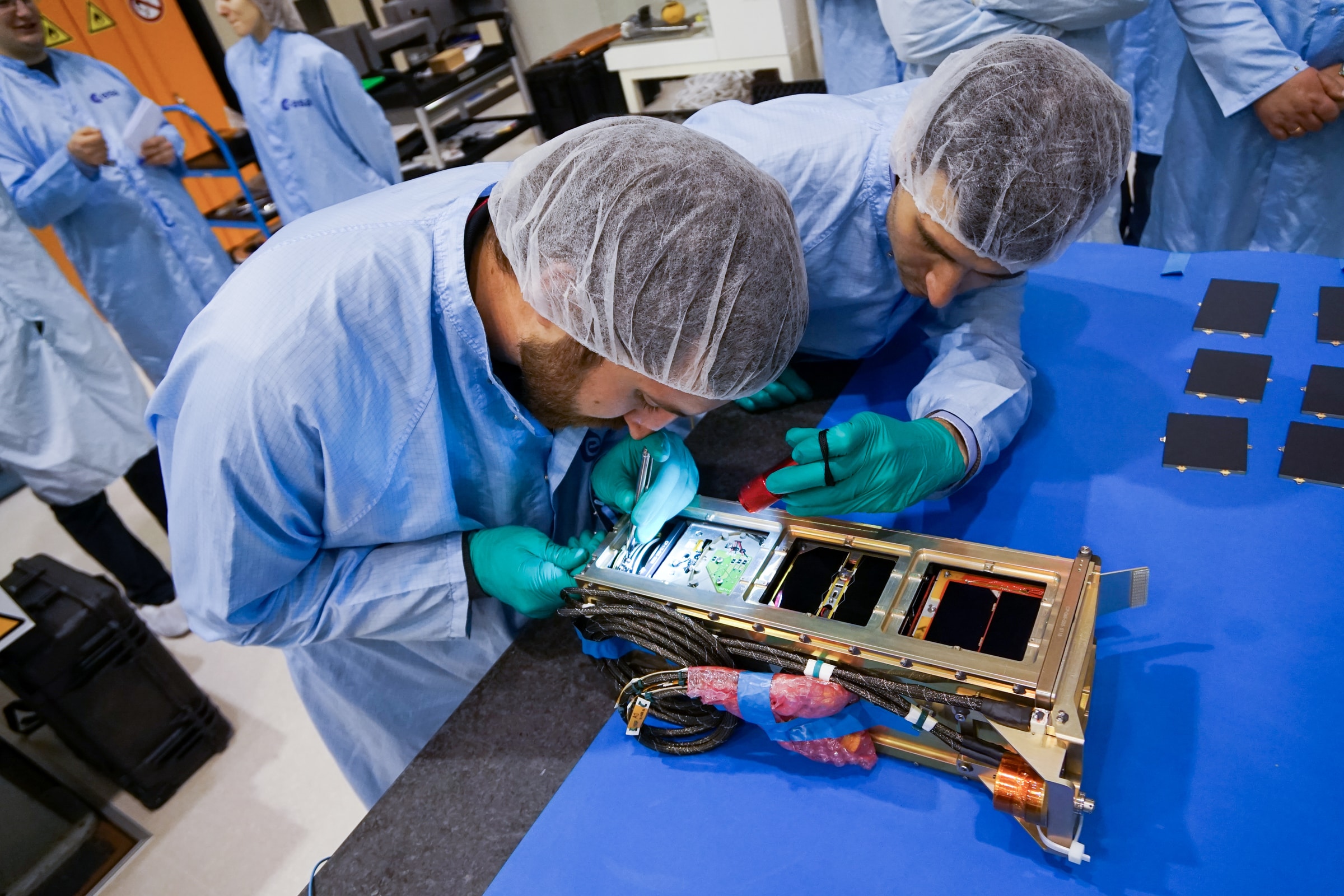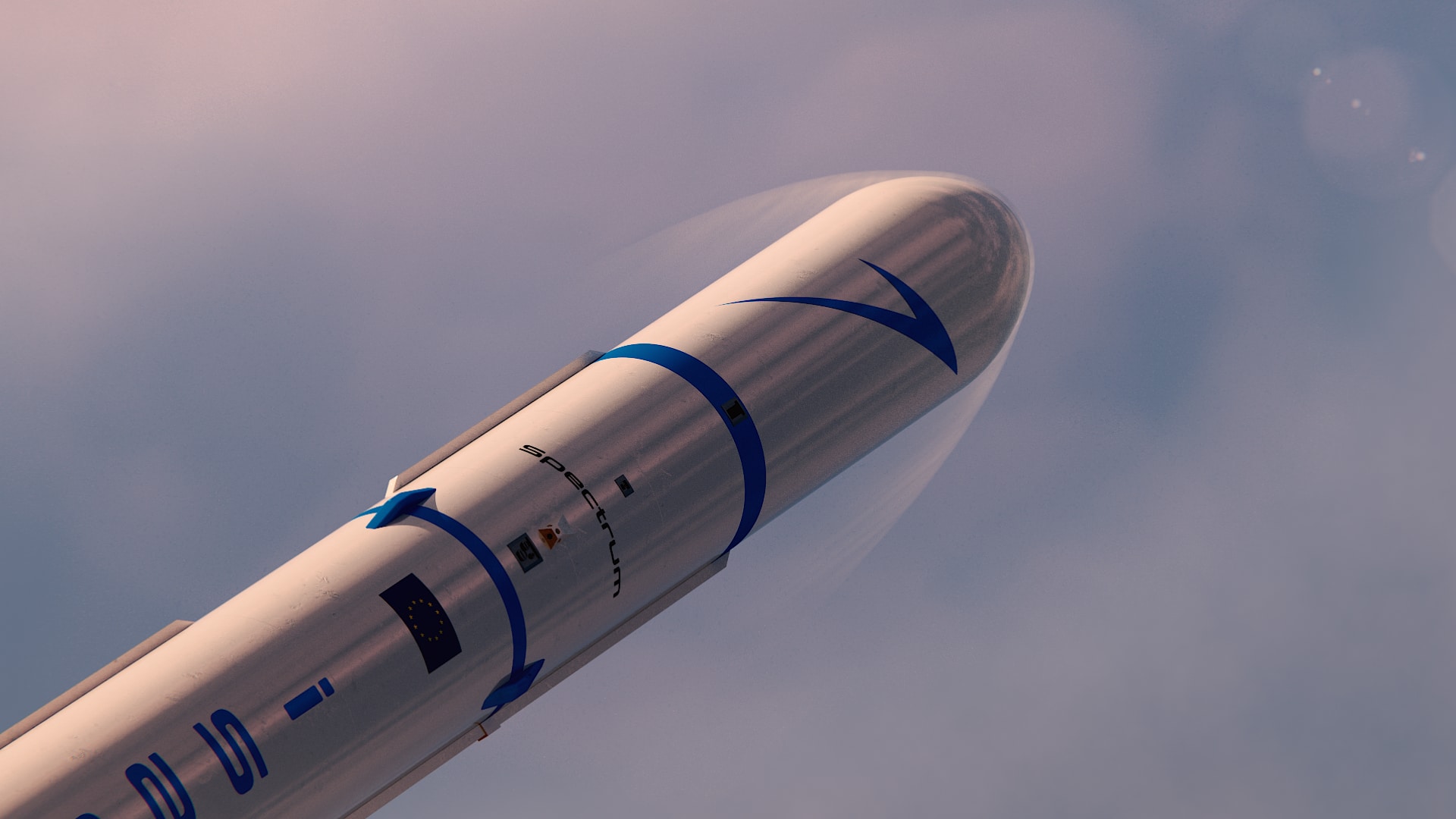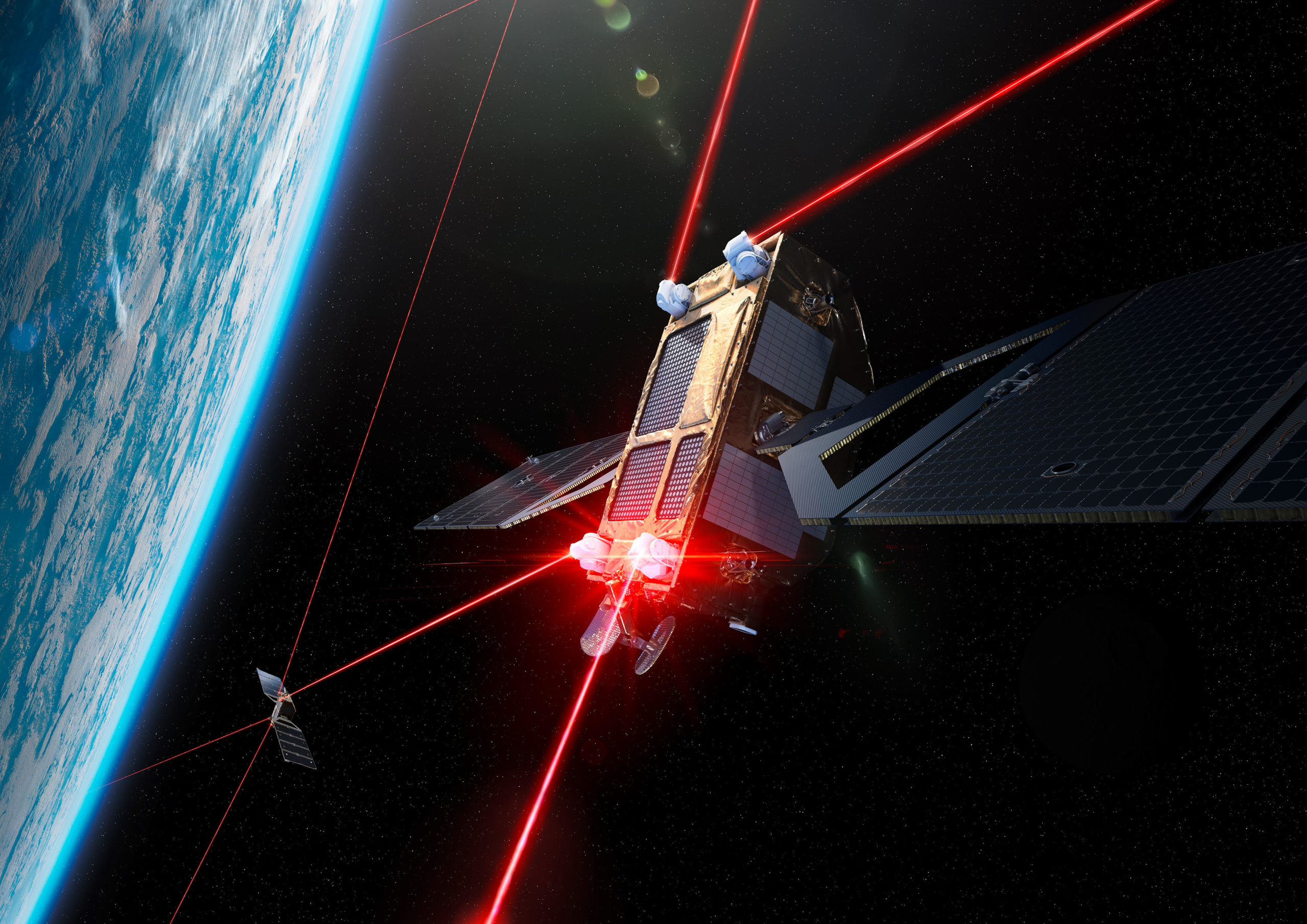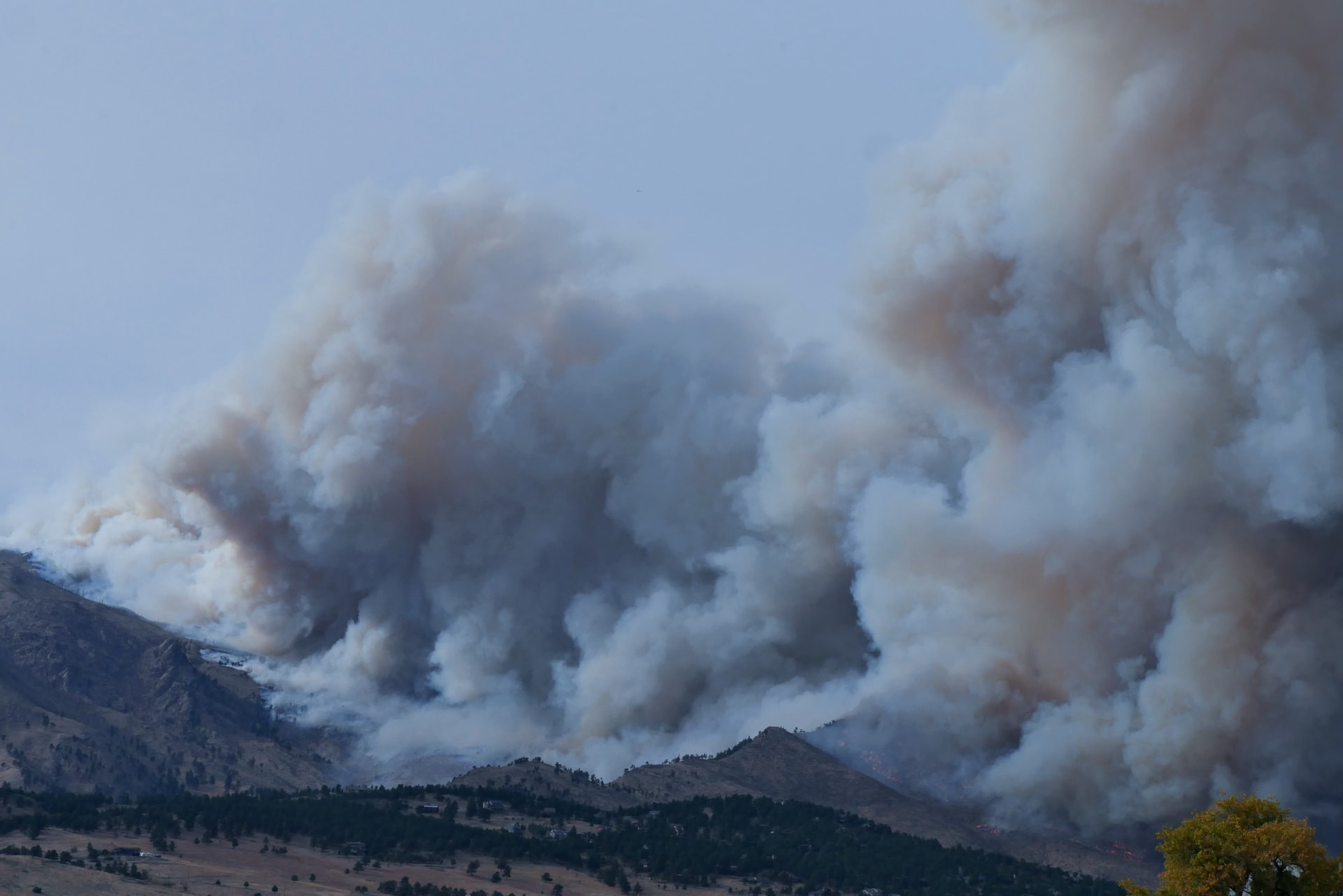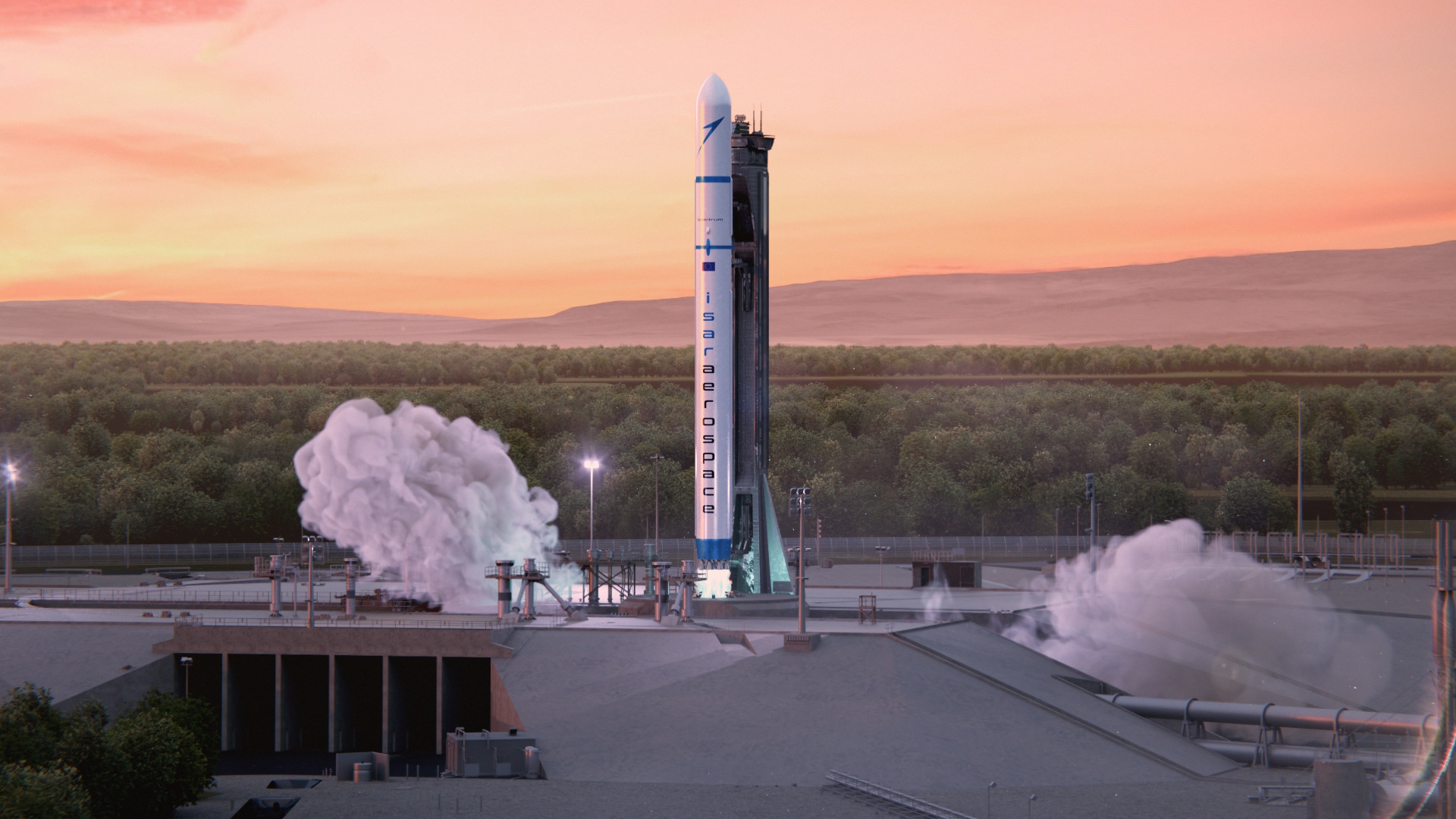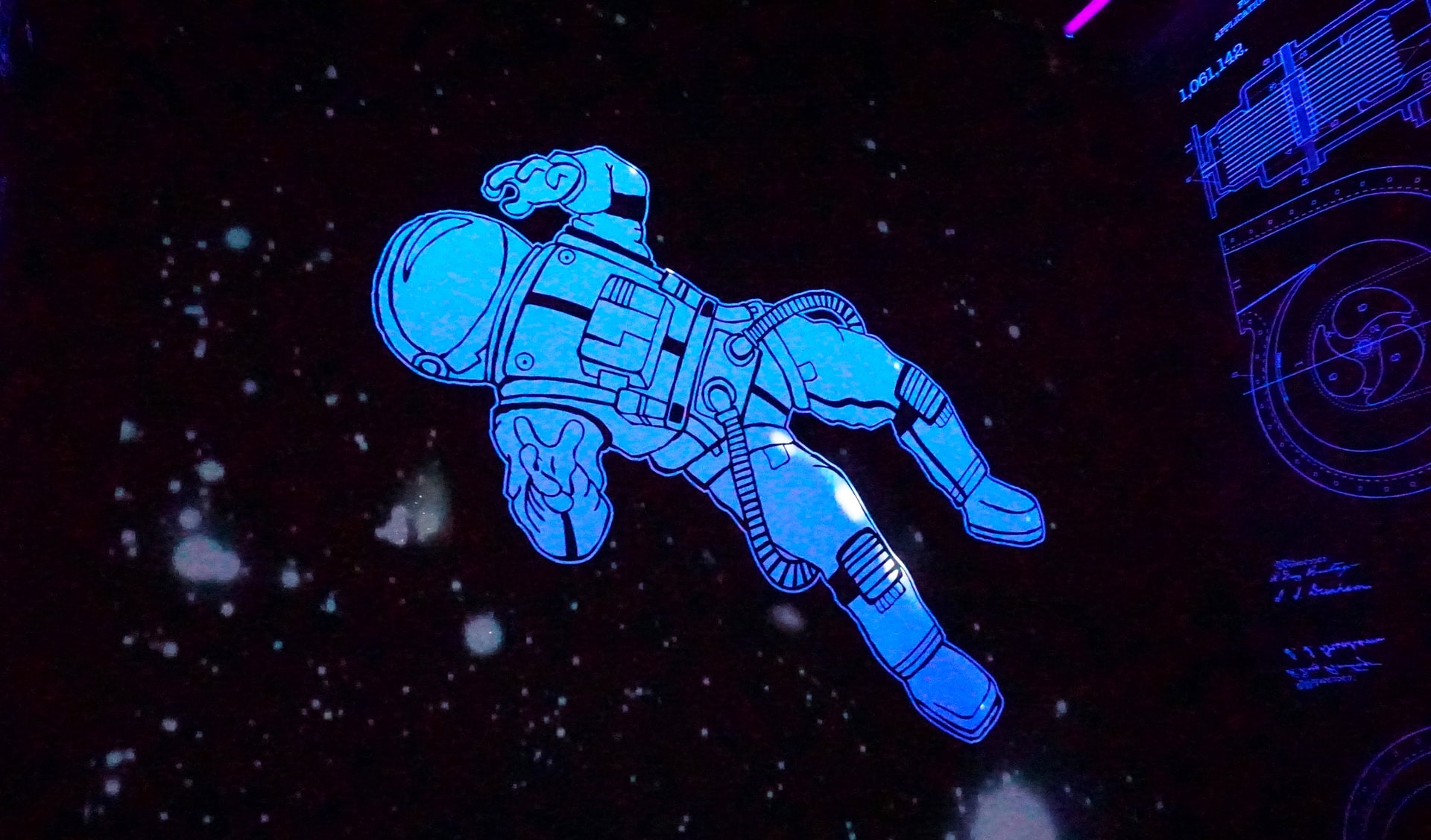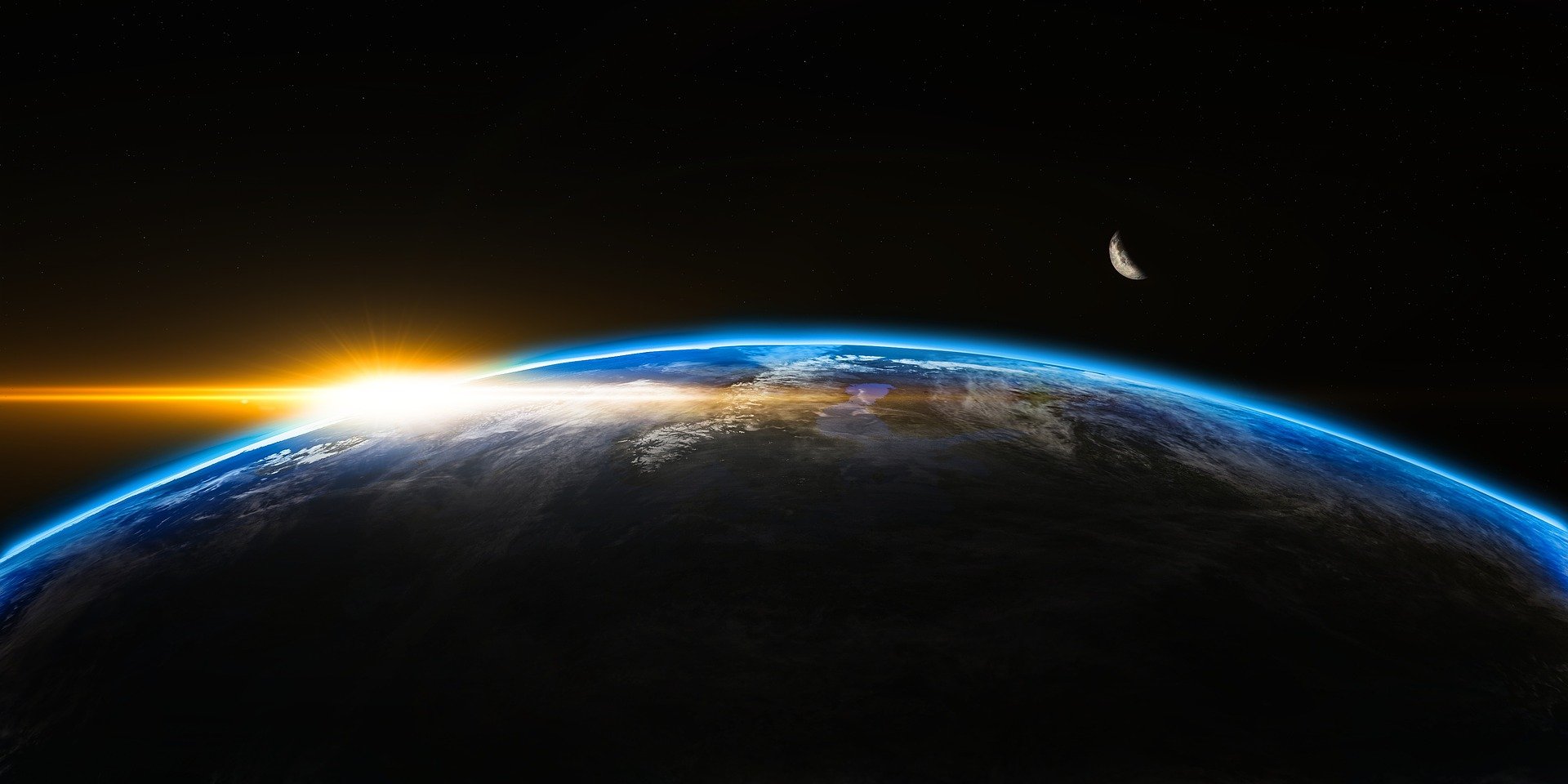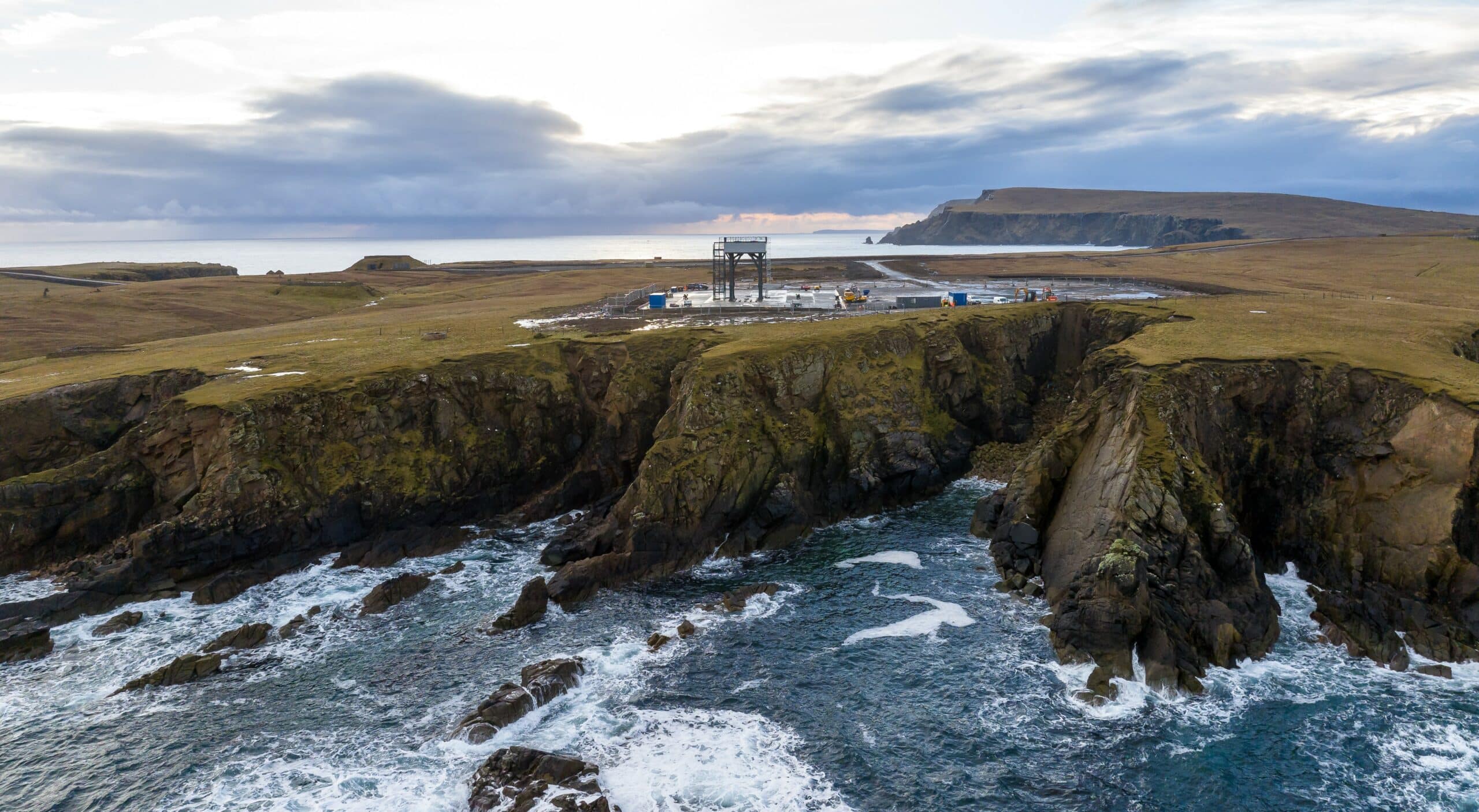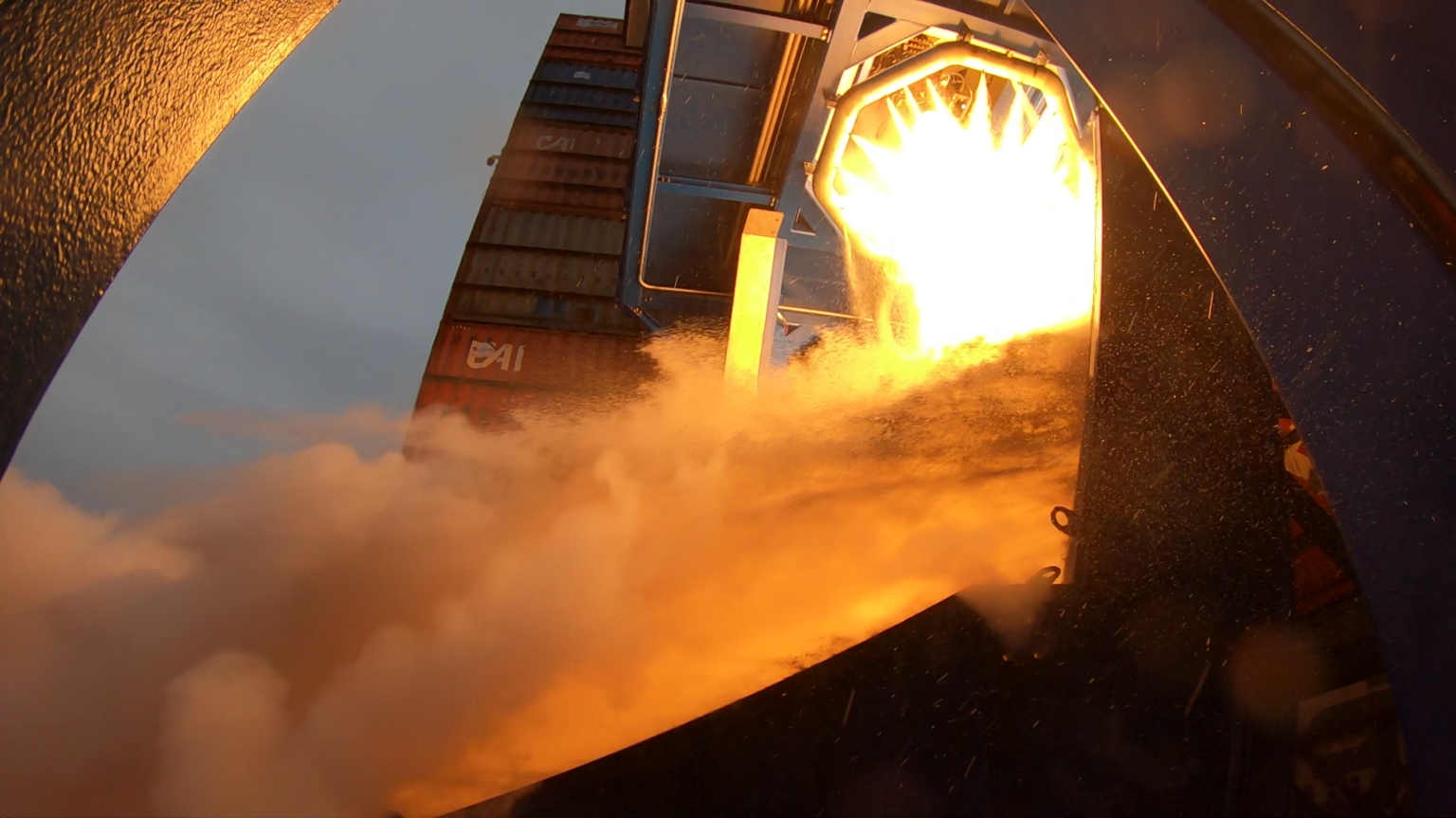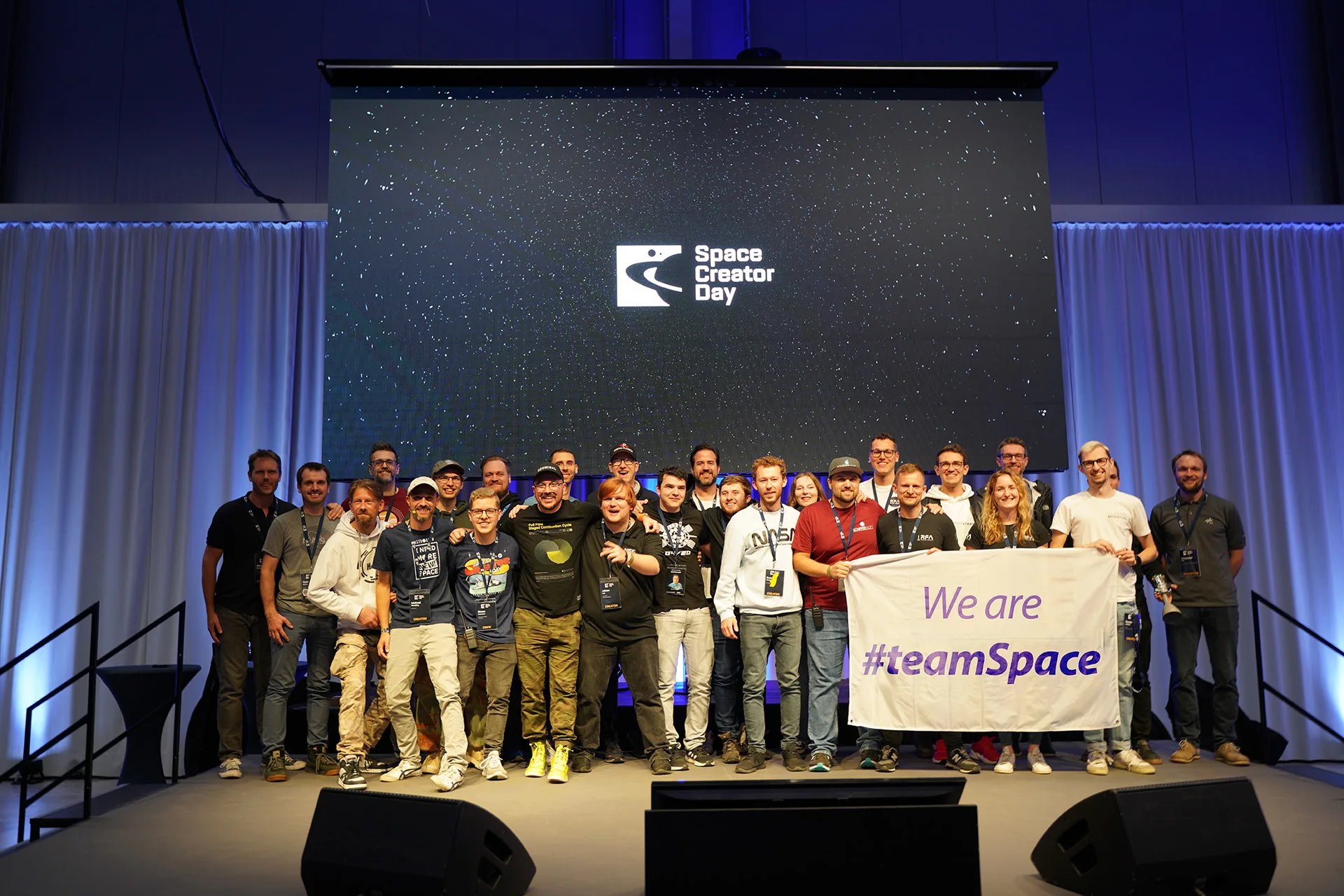
Space Creator Day 2023 Recap
Published on Sun, 29.10.2023 – 09:42 CET in Events, covering #teamSPACEThe penultimate weekend of October is traditionally dedicated to #teamSpace. On October 21, nearly 800 space enthusiasts gathered at the Technikmuseum Speyer to celebrate Space Creator Day 2023 - the largest meet & greet of the European space community.
Speyer - Hangar 10 of the Technikmuseum Speyer was already a hive of activity on Thursday. The fact that the setup began two days before the actual event was not least due to the successful start of last year's Space Creator Day. While the Space Hall was still able to accommodate the 250 participants in 2022, it was already too small for Space Creator Day 2023. In addition, all three German microlauncher manufacturers - HyImpulse, Isar Aerospace and Rocket Factory Augsburg - confirmed their participation with their own booths. GATE Space and TU Vienna Space Team (both from Austria), Space Forge (UK) and the German Aerospace Center (DLR) were also present.
In the outdoor area, Europe's largest network for smart materials smart3 was represented together with Fraunhofer IWU and Lamb Space. They explained not only what smart materials are, but also what applications there are for shape memory alloys, for example in space.
The organizers scored a coup by inviting Nate Simpson, the Creative Director of Kerbal Space Program (KSP) 2, who also had his own session, which was expected to be a special surprise.
Numerous trusses had to be installed, banners hung, and the partial seating set up. In addition, a stage and an LED screen had to be set up. This showed that the Space Creator Day had already grown out of its infancy in its second year.
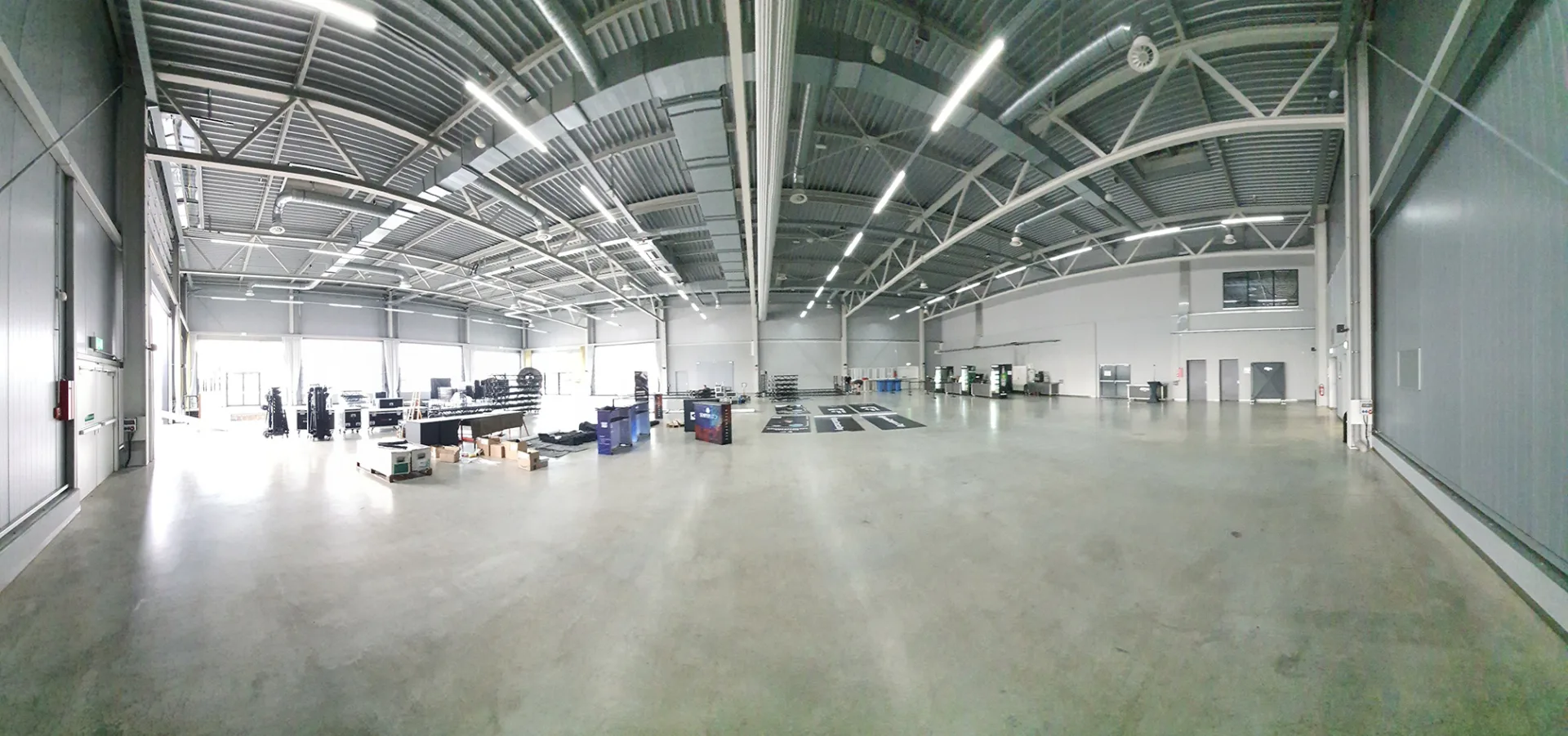
Space Creator Day 2023: more #teamSpace, more NewSpace, more Experience
The layout of the event hall, which is located right next to the Speyer Technology Museum, had already been planned in advance. While the companies and space organizations were to be placed on one side of the hall, the Space Creators were to be placed on the opposite side. Josef Grunig, the mastermind behind "HoppAR", implemented a new feature in his augmented reality app especially for the Space Creator Day: Children could design their own rocket on pre-printed sheets and then launch it in the app. Particularly impressive was the joint booth of the 3D Creators, who brought numerous exhibits to Speyer. Not to be missed was a 1:36 scale Falcon Heavy (SpaceX) from LuClass, which reached a remarkable height of over 200 cm. Christian Schiffer's 3D printed mission patches were also an eye-catcher. As a highlight, he also created an exhibit for the Space Creator Day, which unites all German-speaking creators under the hashtag #teamSpace.

© Martin Dalliner
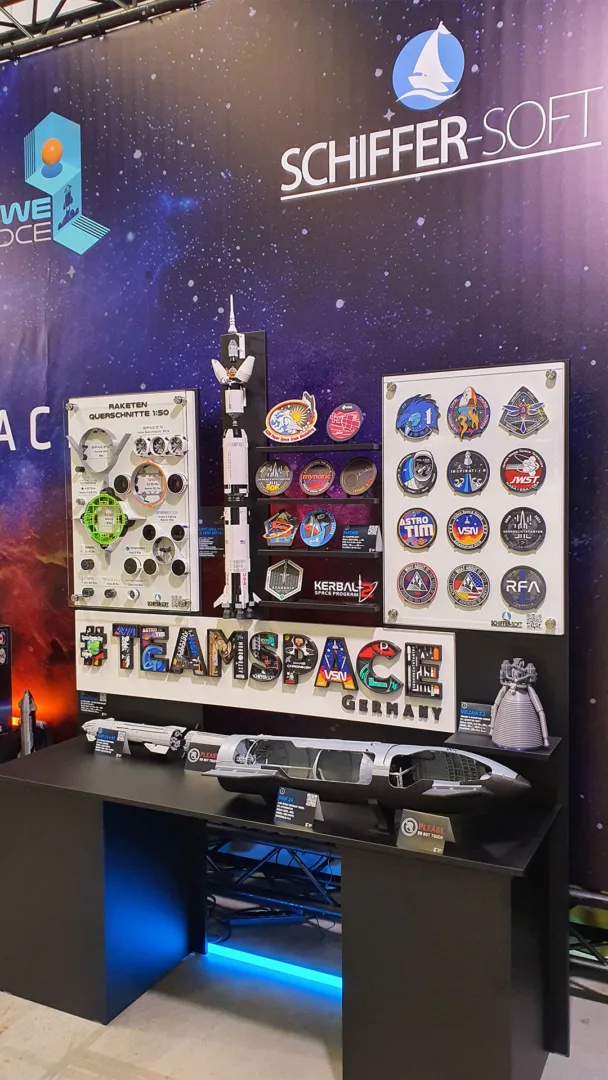
© Christian Schiffer
Calvin (3D Shuttle) delighted rocket enthusiasts and brought gleaming eyes by transforming the Creator's booth into a true Rocket Garden. His models showcased the entire spectrum of space exploration, from German Microlaunchers RFA One (RFA), Spectrum (Isar Aerospace), and SL1 (HyImpulse), to the Space Shuttle, Falcon 9, and Starship with Booster (SpaceX). He also generously donated the prize for the winner of the Astro-Quiz: a Starship with Booster.
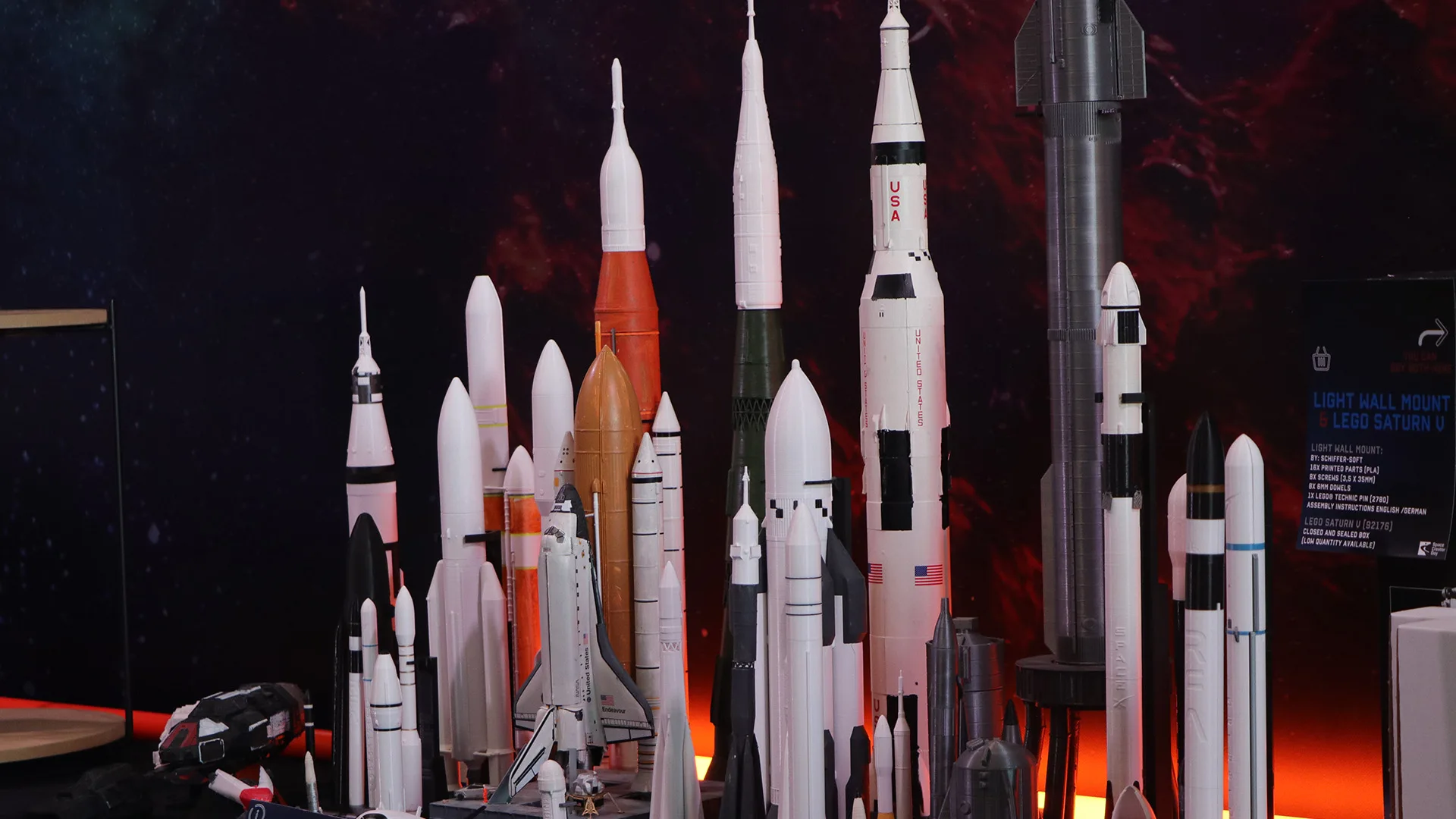
© Martin Dallinger
In the end, about 30 community members volunteered their time to make sure the event ran smoothly. On Saturday, it became clear just how indispensable their efforts are.
Good vibes despite the long queues
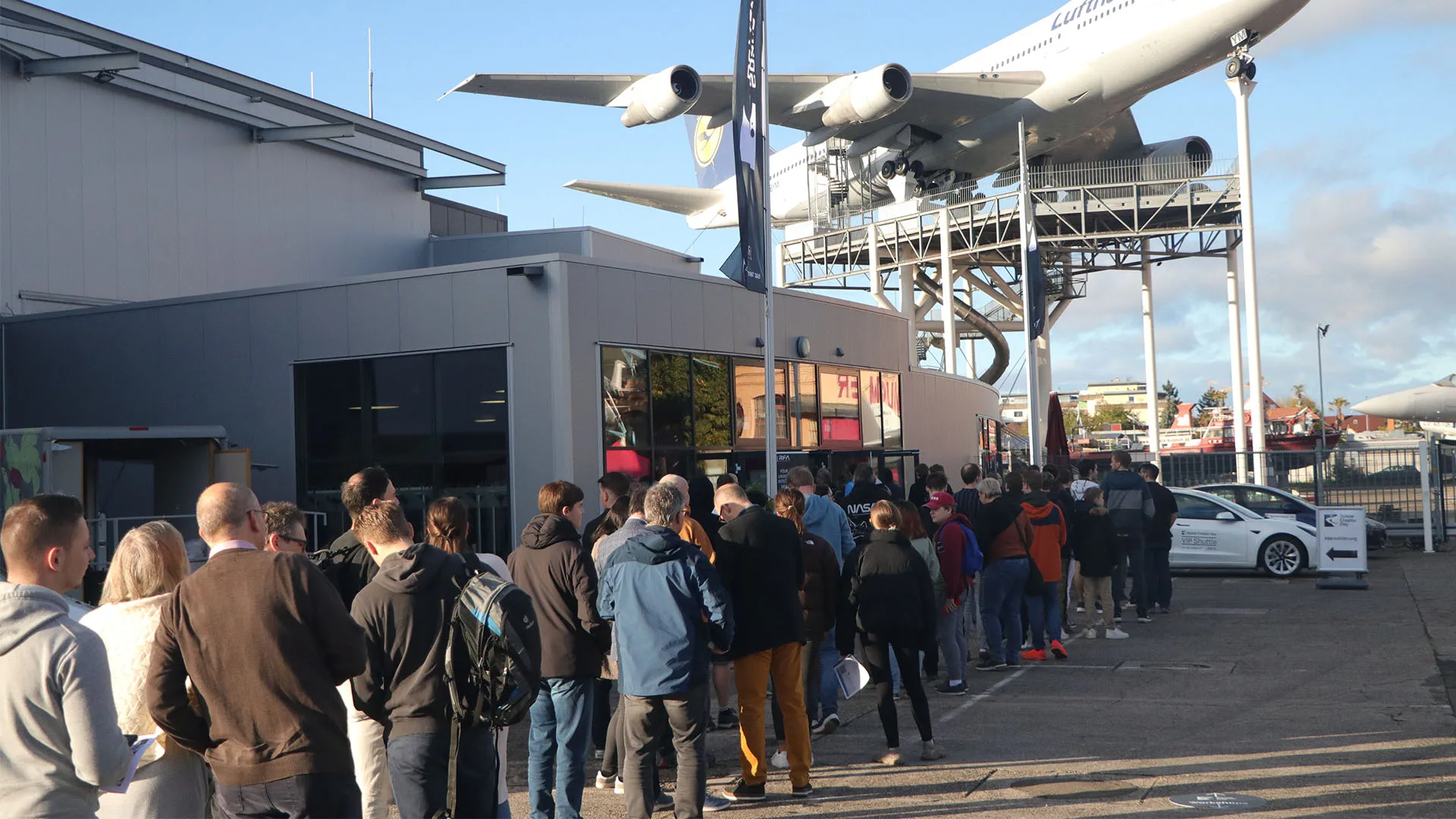
© Martin Dallinger
About an hour before the official start of the event, a line formed in front of Hangar 10 that grew longer by the minute. The visitors came not only from all over Germany, but also from all continents. For the crew at the entrance to the Space Creator Day, this meant scanning tickets, handing out wristbands and explaining organizational issues. In no time, the hall was filled with space enthusiasts eager to meet their social media stars.
International line-up and interactive sessions
Compared to last year's event, the organizers made a big step forward in the line-up. The 2023 lineup reads like a Who's Who of international space influencers. Anyone who thinks they are in a permanent competition for the subscribers and followers necessary for success is mistaken. Instead, the Meetup was more like a reunion of old friends who see each other far too rarely. But to give the day some structure, there was a program that was more varied and interactive this year.
Space Creator Elevator Pitches
At the beginning, all Space Creators had the opportunity to introduce themselves and their channels. The challenge was the time limit. The audience had only 60 seconds to get excited about themselves. The order of the pitches was randomized. For personal reasons, Mars Chroniken, Felix Schlang (What about it??), Mondgeflüster, VideoSpaceNews and Owe (Spacex 3D Creation Eccentric) were not present in 2023.
| Pitch # | Channel / Space Creator | Channel |
|---|---|---|
| 1 | NASASpaceflight (Adrian Beil) | NSF auf YouTube |
| 2 | SWDennis | YouTube |
| 3 | Everyday Astronaut (Florian Kordina) | EDA on YouTube |
| 4 | Astrodrom (Roman Lehmacher) | YouTube |
| 5 | Orbital Plausch | YouTube |
| 6 | SpaceExplorerW | Twitch |
| 7 | What about it!? / WAI Plus | WAIplus on YouTube |
| 8 | Harzner | YouTube |
| 9 | Matt Lowne | YouTube |
| 10 | Caspar Stanley | Website |
| 11 | Yggis Kosmos | YouTube |
| 12 | Primal Space | YouTube |
| 13 | Astro-Tim | YouTube |
| 14 | Shadowzone | YouTube |
| 15 | Senkrechtstarter | YouTube |
Workshop "From Idea to Script and Article" by NASASpaceflight exceeds all expectations
Directly after his pitch, Adrian Beil from NASASpaceflight went to the conference rooms to hold his workshop. On a "first come, first served" basis, everyone who showed up on time was able to participate. However, they did not anticipate that the demand would be so great. Since the smaller of the two rooms was bursting at the seams, everyone quickly moved to the larger room. But that room also filled up quickly, so the furniture from the smaller room was quickly moved to the larger room. In the end, about 70 people learned how to go from an idea to a script to an article or video.
Volker Schmidt from the German Aerospace Center (DLR) presented the collaboration between DLR and the European Space Agency (ESA)
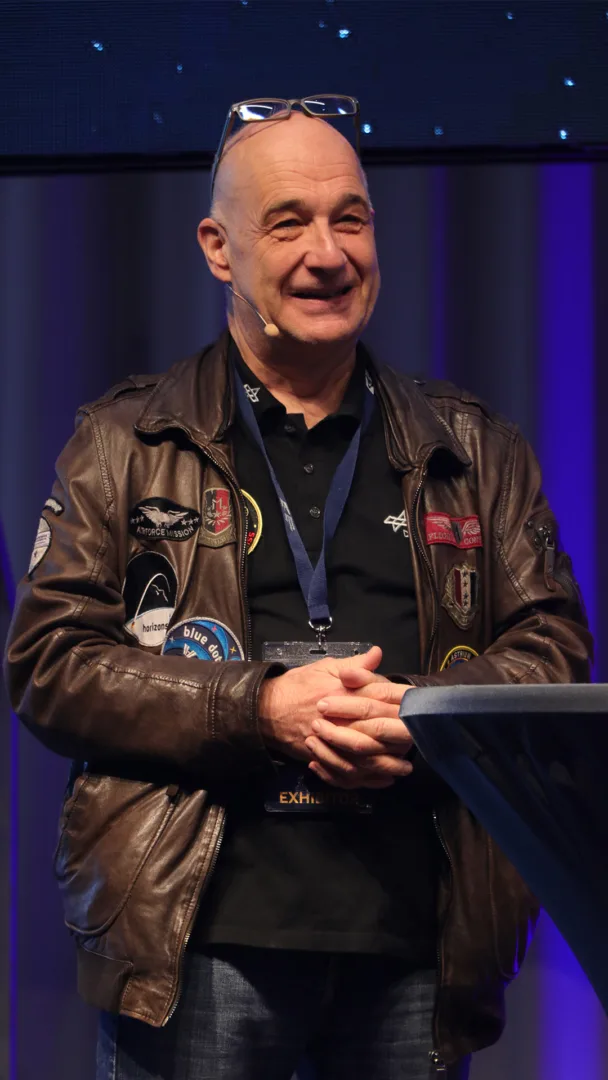
© Martin Dallinger
Meanwhile, Volker Schmidt from the German Aerospace Center (DLR) presented on the main stage how DLR and the European Space Agency (ESA) work together. As expected, he placed a special focus on astronautical spaceflight to the International Space Station (ISS). After all, he led the DLR mission team for Alexander Gerst's horizons mission.
After an exciting presentation, the audience had the opportunity to ask questions. Of course, many wanted to know from an expert what the future of the ISS looks like. After all, it was already scheduled to be decommissioned, but now it will remain in orbit until 2030. Volker Schmidt could not answer the question of how exactly the ISS will continue to operate, but he could at least give some perspectives and insights into the background.
HyImpulse Company Pitch
Konstantin Tomilin, COO of HyImpulse, also provided a look behind the scenes. The microlauncher manufacturer from Neuenstadt am Kocher is one of three companies that want to give Germany sovereign access to space. In doing so, HyImpulse is taking a unique approach with a hybrid propulsion system made of liquid oxygen (LOX) and paraffin. Tomilin not only provided insights into the technology, but also presented milestones. Of course, of particular interest before any rocket launch are the planned flight profiles, which were also on display. The COO did not have a long break, because a fixed place on stage was also scheduled for him at the next session.
Spaceflight “Made in Germany”
So the following session "Spaceflight Made in Germany" offered a rare sight. Representatives of all three German microlaunchers and Moritz Vieth (Senkrechtstarter) took the stage. HyImpulse, Isar Aerospace and Rockt Factory Augsburg are in competition with each other, but there was no sign of that on the stage. Instead, the similarities were emphasized and the collegial cooperation was praised. A look at other industries shows that this is by no means a matter of course.
For space enthusiasts, it does not matter who is the first to successfully launch a rocket into space. Rather, #teamSpace wants everyone to succeed equally, and preferably as quickly as possible. When asked who will be the first to launch, HyImpulse's Konstantin Tomilin quickly and confidently replied, "We will!" Although he later admitted that it will be a suborbital flight of the 14-meter-high SR-75 sounding rocket.
In-Space-Manufacturing (Space Forge) and Space Safety (ESA/ESOC)
After the lunch break, Neil Monteiro, Microgravity Research Manager of Space Forge, introduced the British company. With a fabulous entertainer's quality, he drew the audience into his spell, explaining in a captivatingly simple way what in-space manufacturing is and why it is relevant.
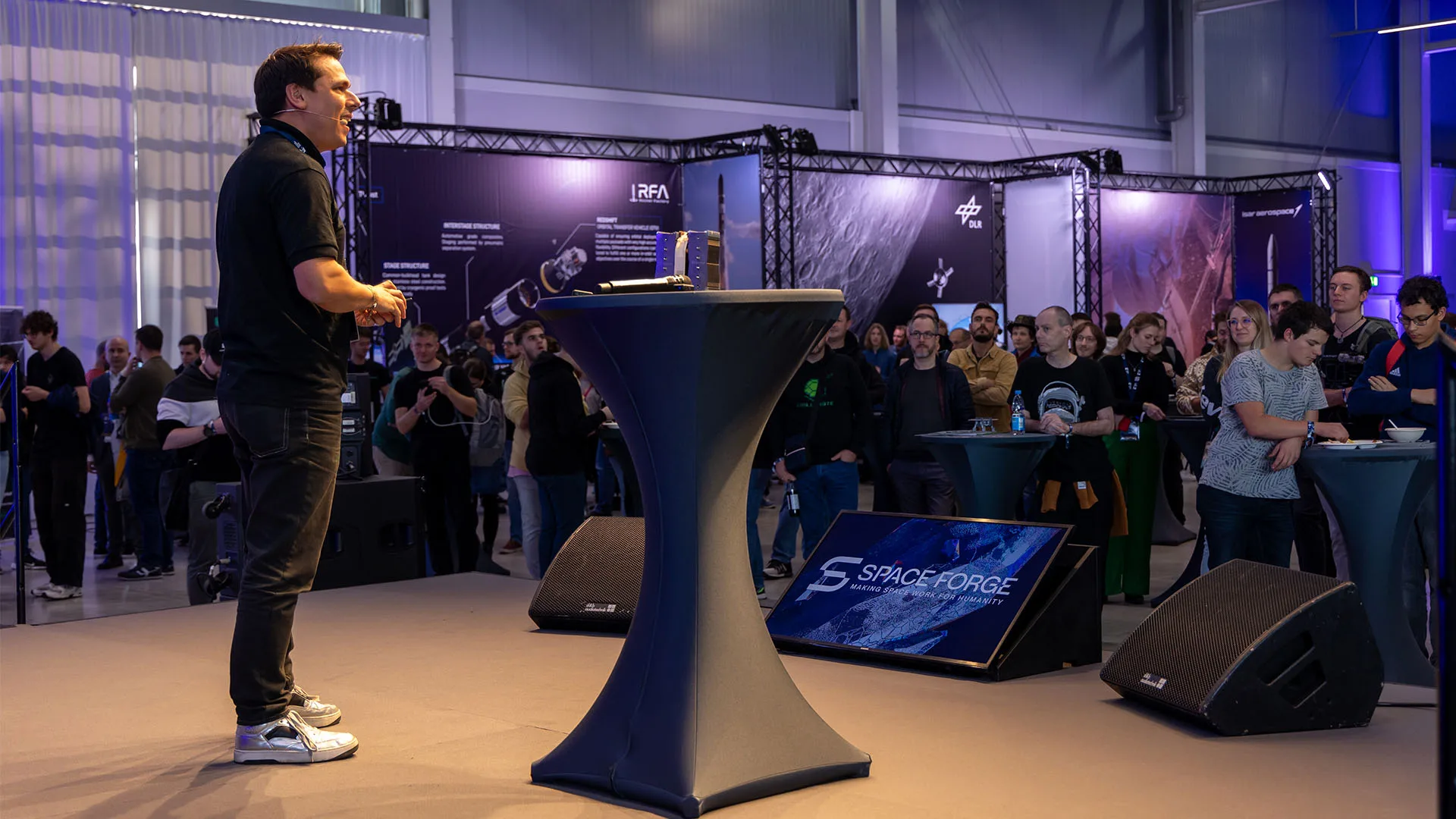
© Storki
This presentation was followed by the scientific keynote by Holger Krag, Head of Space Safety (ESA/ESOC). The audience followed his presentation with great interest and asked interesting questions. Among other things, they asked how satellites can be designed for sustainability so that the resources used to build them are not lost when they re-enter the atmosphere. However, it will probably be several years before technical solutions are developed that can be seriously discussed. According to the results of the lecture, the "legacy" of previous space travel is currently by far the biggest problem. There are several approaches to cleaning up existing space debris. The most promising for larger objects is currently ClearSpace-1.
90 seconds about… feat. Harzner and Orbital Plausch
In the first truly interactive session, the two YouTubers Harzner and Orbital Plausch competed against each other. Although they usually alternate in live talks, this time they were more or less opponents. Their task was to take a stand on various theses and convince the audience of their opinion. The audience voted live on who had the better arguments for or against each thesis. In the end, Harzner won with 4:1 points, but the individual rounds were always a head-to-head race.
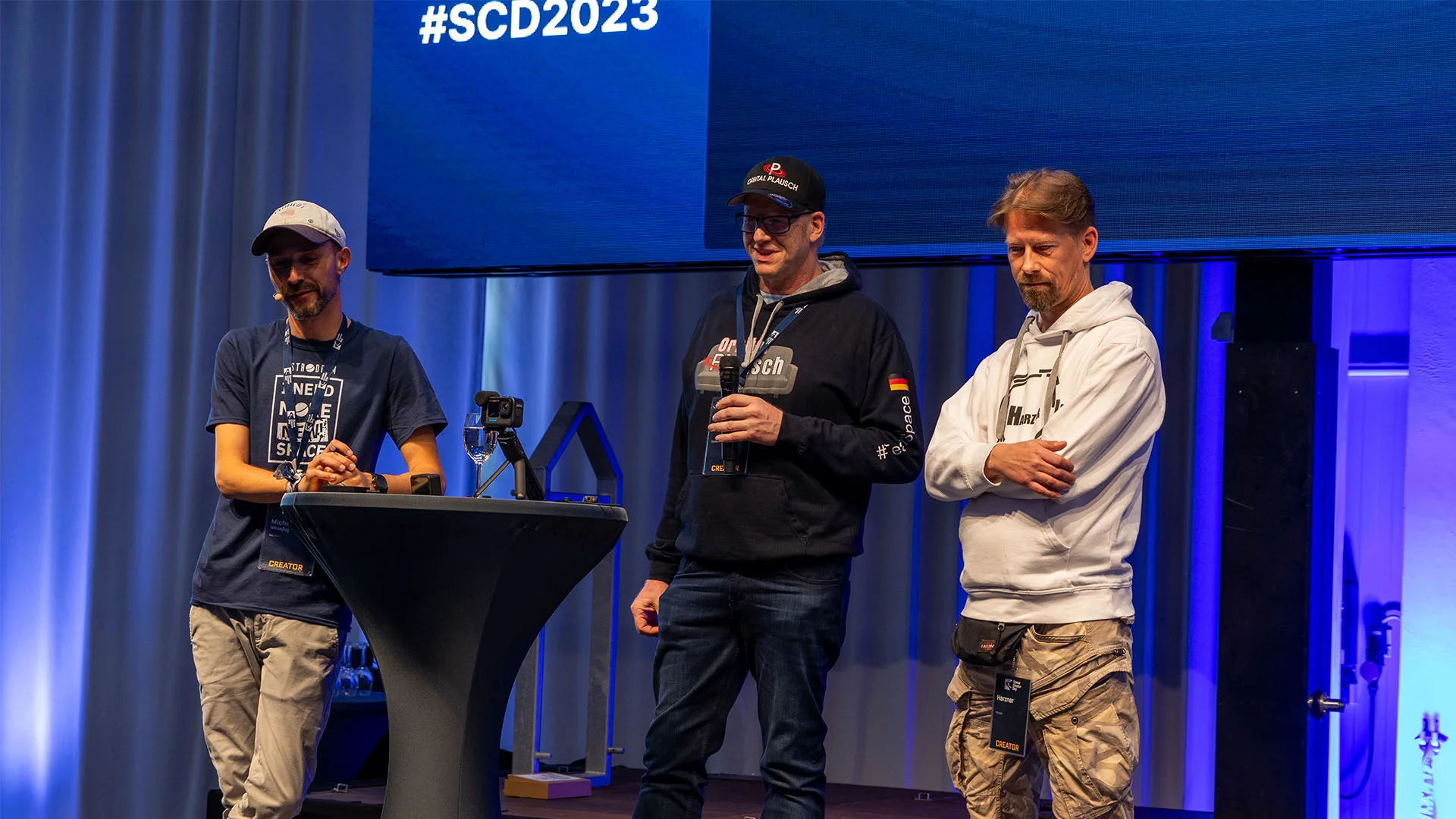
© Storki
| # | Assertion | Harzner | Orbital Plausch |
|---|---|---|---|
| 1 | Without government regulation, commercial space exploration will not advance humanity in the slightest. | x | |
| 2 | Space agencies make only a marginal contribution to innovative space projects. | x | |
| 3 | We will never permanently colonize other celestial bodies as a species. | x | |
| 4 | Settlers on Mars should determine local laws and regulations independently, without influence from Earth. | x | |
| 5 | Space debris is a catchy buzzword, but it won't be a serious issue in the future. | x |
Kerbal Space Program 2 – For Science!
When Nate Simpson, Creative Director of Kerbal Space Program 2, took the stage, Hangar 10 suddenly fell silent. He began his presentation by asking the audience who was playing Kerbal Space Program. Not surprisingly, more than half of the audience answered. In his opinion, KSP is the best game ever made and has created a whole new genre: the "Space Engineering Sandbox Game". The company is proud that KSP inspires the next generation of space engineers and has found a permanent place in space agencies. Already in 2019, the successor KSP 2 was announced and the first content was presented. Among other things, it will be possible to use future space technologies and play in a multiplayer mode. In February 2023 it was finally announced that the Early Access version will be released.
In his review of the content of the new version, Nate Simpson did not hide the fact that there were numerous bugs. Some of them were obvious, while others caused spaceships to randomly fall apart. The physics engine was also not yet working satisfactorily, which caused rockets to behave as if they were made of rubber. Such bugs, as Simpson pointed out, naturally challenge the community's trust in the developers. However, a new update should fix many of the bugs. That was the end of the presentation, Simpson said.
Preview on KSP 2 For Science!
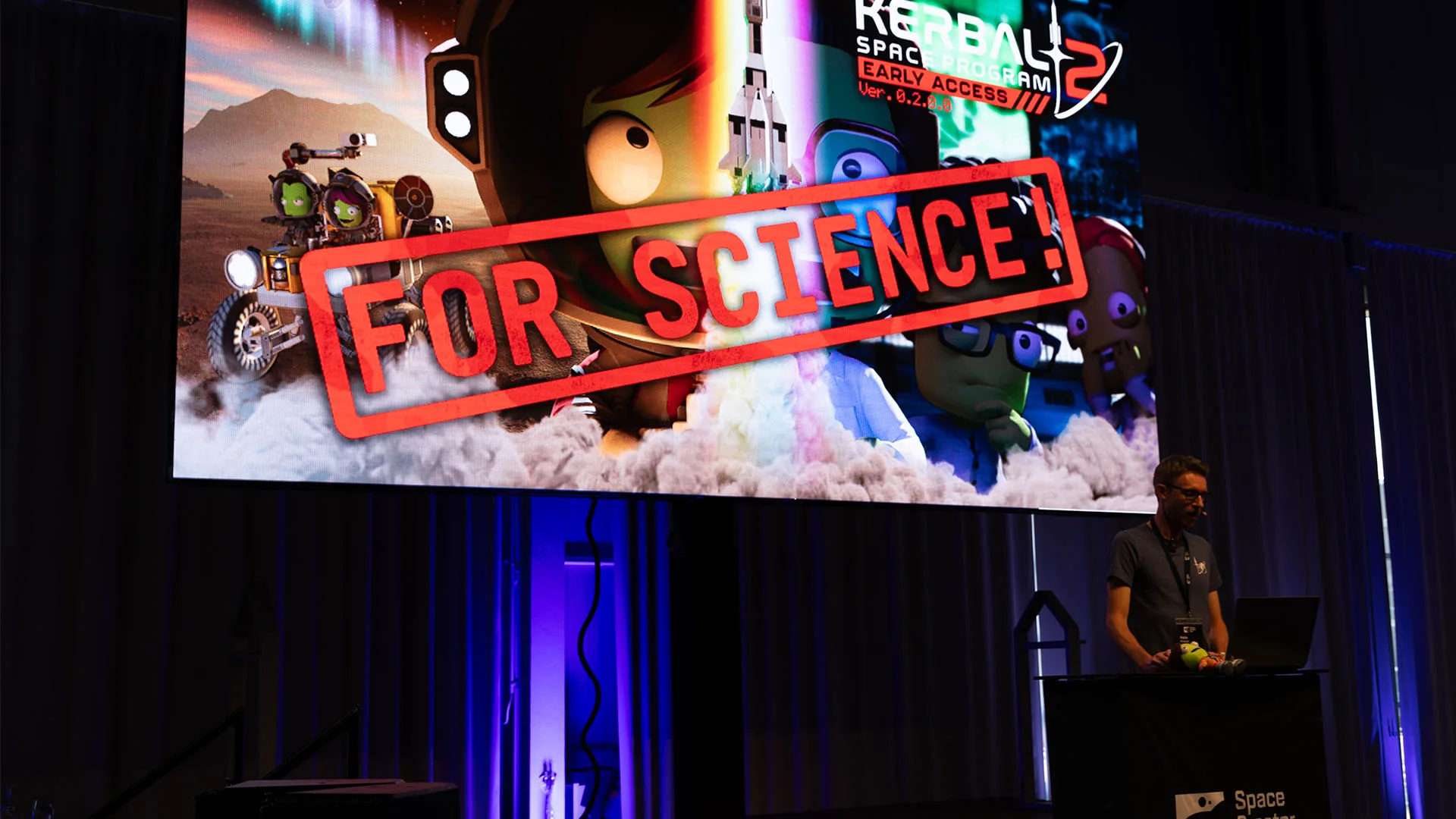
© Storki
In order not to push the unbelievably quiet crowd too hard, he got straight to the point. He announced that they had reached a major milestone and would be releasing KSP 2 For Science in December 2023. The audience showed their appreciation with some applause for this announcement. They also mentioned that Kerbal Space Program is evolving from a sandbox game into something you can spend hours on doing missions. The developers have made a bunch of changes that will ultimately impact the game engine, aiming to turn KSP into a whole new experience.
Astro-Quiz feat. Astro-Tim and Yggis Kosmos
The next part was all about having fun, as the two YouTubers, Astro-Tim and Yggis Kosmos, teamed up to play against the audience. There were a total of 12 astronomy-related questions to answer. The challenge for the audience participants was to respond quickly and correctly to the questions for extra points, with the chance of winning a prize for the fastest responder at the end.
| # | Question | Possible answers |
|---|---|---|
| 1 | Why do we only see one side of the moon from Earth? | (1) Because it's a flat disk like Earth (2) Because it doesn't rotate (3) Due to the locked rotation (4) You can see every side |
| 2 | What's the name of the first discovered exoplanet? | (1) Kepler-186f (2) 51 Pegasi b (3) Gliese 581c (4) TRAPPIST-1e |
| 3 | How fast is the speed of light? | (1) 300,000,000 m/s (2) 299,792,854 m/s (3) 299,792,458 m/s (4) 299,792,548 m/s |
| 4 | What are the top five elements in the universe? | (1) He, Fe, Ne, Ge, Se (2) H, He, C, Ne, O (3) H, O, He, Xe, C (4) H, He, O, C, N |
| 5 | What are Earth's two neighboring planets? | (1) Mercury & Venus (2) Venus & Mars (3) Mars & Jupiter (4) Saturn & Neptune |
| 6 | Which planet in our solar system has the most moons? | (1) Mars (2) Earth (3) Jupiter (4) Saturn |
| 7 | What do you call a solid cosmic object that reaches Earth's surface? | (1) Meteor (2) Meteorite (3) Meteoroid (4) Stone |
| 8 | When was Pluto "downgraded" to a dwarf planet? | (1) August 11, 1999 (2) August 24, 2006 (3) April 12, 2012 (4) February 20, 2020 |
| 9 | Which classification of galaxies does NOT exist? | (1) Hubble-Sequence (2) De-Vaucouleurs-System (3) Vesto-Slipher-Scale (4) Yerkes/Morgan-System |
| 10 | Where was the Arecibo Message sent to? | (1) Messier 4 (2) Messier 13 (3) Omega Centauri (4) Terzan 5 |
| 11 | What was the name of the first spacecraft to land on a foreign planet? | (1) Venera 7 (2) Huygens (3) Viking 1 (4) Vega 2 |
| 12 | How big is the observable universe? | (1) 13.8 bn LY (2) 4.8 bn LY (3) 46.3 bn LY (4) infinitely |
3-2-1-Speed-Quiz feat. Matt Lowne, Primal Space, SpaceExplorerWhitney and Senkrechtstarter
Next up on the stage were Matt Lowne, Primal Space, SpaceExplorerWhitney, and Senkrechtstarter. Their task was to correctly estimate the percentage distribution of answers from a survey, which had been anonymously filled out by the community beforehand. The principle of this game is likely familiar to most from the TV show "1, 2, or 3." While some answers and the Space Creators' estimates were straightforward, there were certainly some surprising moments as well.
Which heavy-lift rocket will most likely and most clearly shape spaceflight?
Starship
87 %
NewGlenn
3 %
Space Launch System
9 %
Which microlauncher will launch most frequently in 2025?
RFA One
10 %
Electron
67 %
Spectrum
10 %
Who will win the current space race to return mankind to the moon?
NASA (USA)
62 %
CNSA (China)
26 %
ESA (Europe)
5 %
Where will the first man on Mars come from?
Asia
20 %
North America
69 %
Europe
10 %
Which space station will continue the legacy of the ISS?
Axiom Space
25 %
Lunar Gateway
41 %
Chinese Space Station
20 %
Which satellite constellation would you LEAST be able to live without?
Starlink
7 %
Galileo
10 %
GPS
80 %
When will more than 100 people be in space simultaneously for the first time?
2035
38 %
2040
33 %
2045
15 %
Which space telescope has been the most beneficial to humanity so far?
JWST
8 %
Kepler
8 %
Hubble
77 %
Where would you go if a trip to space cost the same as a vacation on Earth?
Space Station
18 %
Moon
31 %
Mars
26 %
Boca Chica Live – feat. Adrian Beil (NASASpaceflight)
There's currently a tremendous amount of hype surrounding SpaceX's Starship, with almost no other launch system generating as much excitement. After the initial test flight of the complete system on April 20, 2023, the space community is eagerly awaiting the next launch. Every small change on SpaceX's Texas grounds is closely monitored. The cameras from NASASpaceflight, situated in prime locations, broadcast images through multiple 24/7 live streams. Adrian Beil provided insights in his session into the challenges the team initially faced. Not only is Boca Chica, Texas, in the middle of nowhere, but it also lacks the necessary infrastructure. Besides that, it's not advisable to set up cameras anywhere in the United States without proper authorization.

© Martin Dallinger
The solution found by NASASpaceflight is as simple as it is brilliant: they acquired their own land. They generate the necessary power with solar panels, and they've also ensured internet connections. As a result, they've been running a livestream on YouTube since July 12, 2021, where regular updates are provided through a ticker.
XR-Lab EAC/ESA
The final science keynote of the Space Creator Day was delivered by Andreas Treuer from the European Space Agency (ESA). He introduced the ESA's XR-Lab, which is used to train astronauts for future missions. XR stands for Extended Reality, combining Augmented Reality, Virtual Reality, and Mixed Reality. The XR-Lab was established at the European Astronaut Centre (EAC) in Cologne back in 2015. Today, the XR activities cover various aspects of astronautical missions. Among the XR applications, there's a VR training tool for astronauts to practice handling the 17-meter-long robotic arm of the ISS. It also allows simulations of spacewalks in orbit and on other celestial bodies. With Germany's recent decision to join NASA's Artemis Accords, the XR-Lab could become even more relevant in the future. This move makes it conceivable that German astronauts might one day set foot on the Moon.
Quo vadis, spaceflight? feat. Tim Dodd (Everyday Astronaut)
Observing our cosmic neighbor up close is also something that Tim Dodd, who reaches a massive audience through his YouTube channel, will be doing. As the headliner, Dodd came all the way from the USA and consistently drew long lines at the Space Creator booth. Visitors had to wait for over an hour at times for an autograph, a selfie, or a brief chat, but Tim made sure to spend time with each and every one of them.
On stage, he shared his insights about the future of spaceflight with the audience. He covered everything from Earth to low Earth orbit, space stations, and the Moon, all the way to Mars. As a member of the #dearMoon mission, he will personally orbit the Moon aboard a Starship. However, he mentioned that his training for this mission has not yet started, as the Starship needs to first prove its reliability in launching and landing.
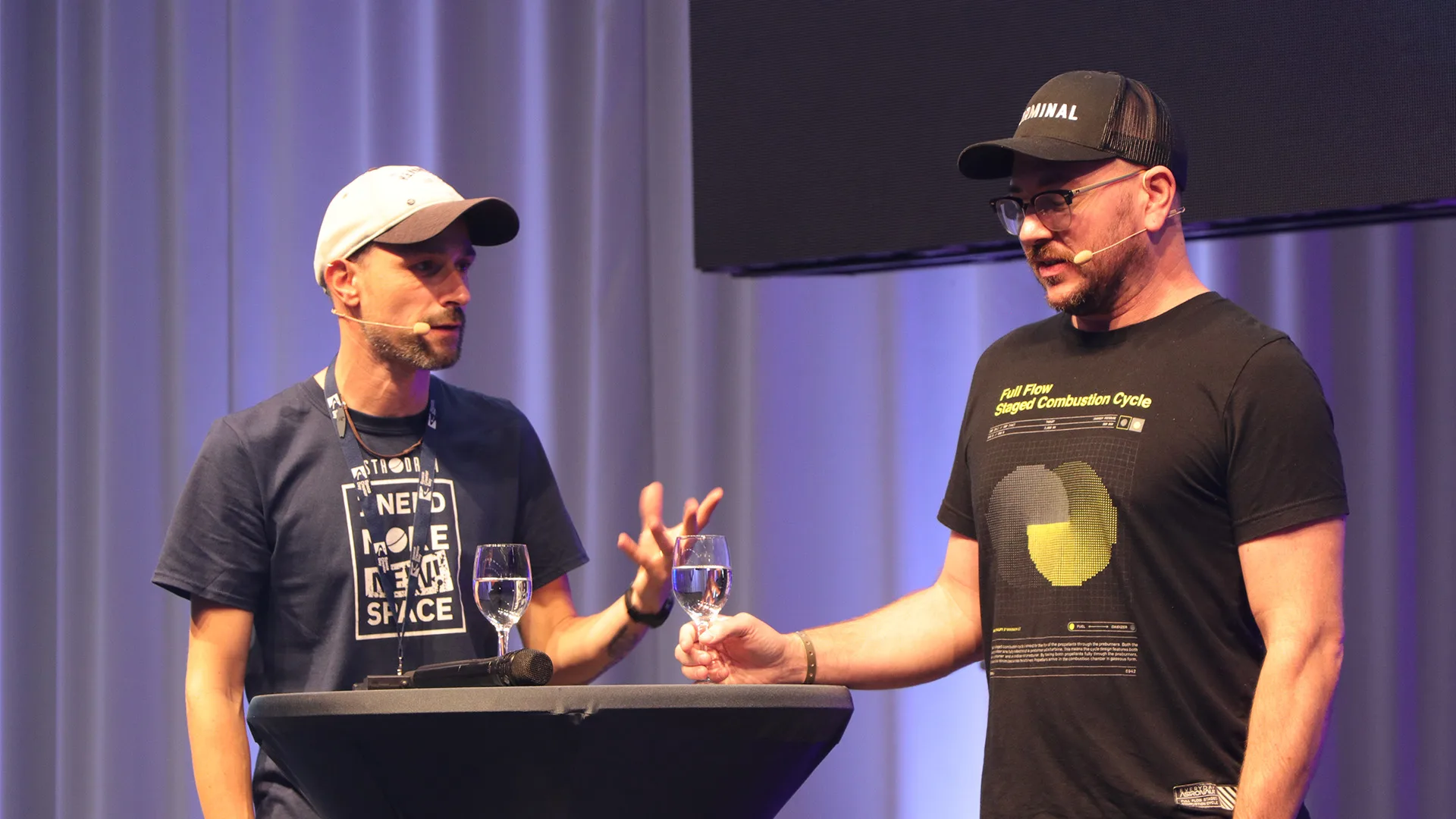
© Martin Dallinger
Even though Tim Dodd has conducted several exclusive interviews with Elon Musk, he emphasized during his session that space exploration is not just about SpaceX. He pointed out that companies like HyImpulse, Isar Aerospace, and the Rocket Factory Augsburg, who were present at the event, are proof of the diverse and expanding landscape of the space industry.
#teamSpace-Awards
The final highlight of the Space Creator Days was the presentation of the #teamSpace Awards, which were introduced by Astrodrom for the first time. A jury had created a shortlist from all the nominations, and the winners were determined through a community voting process.
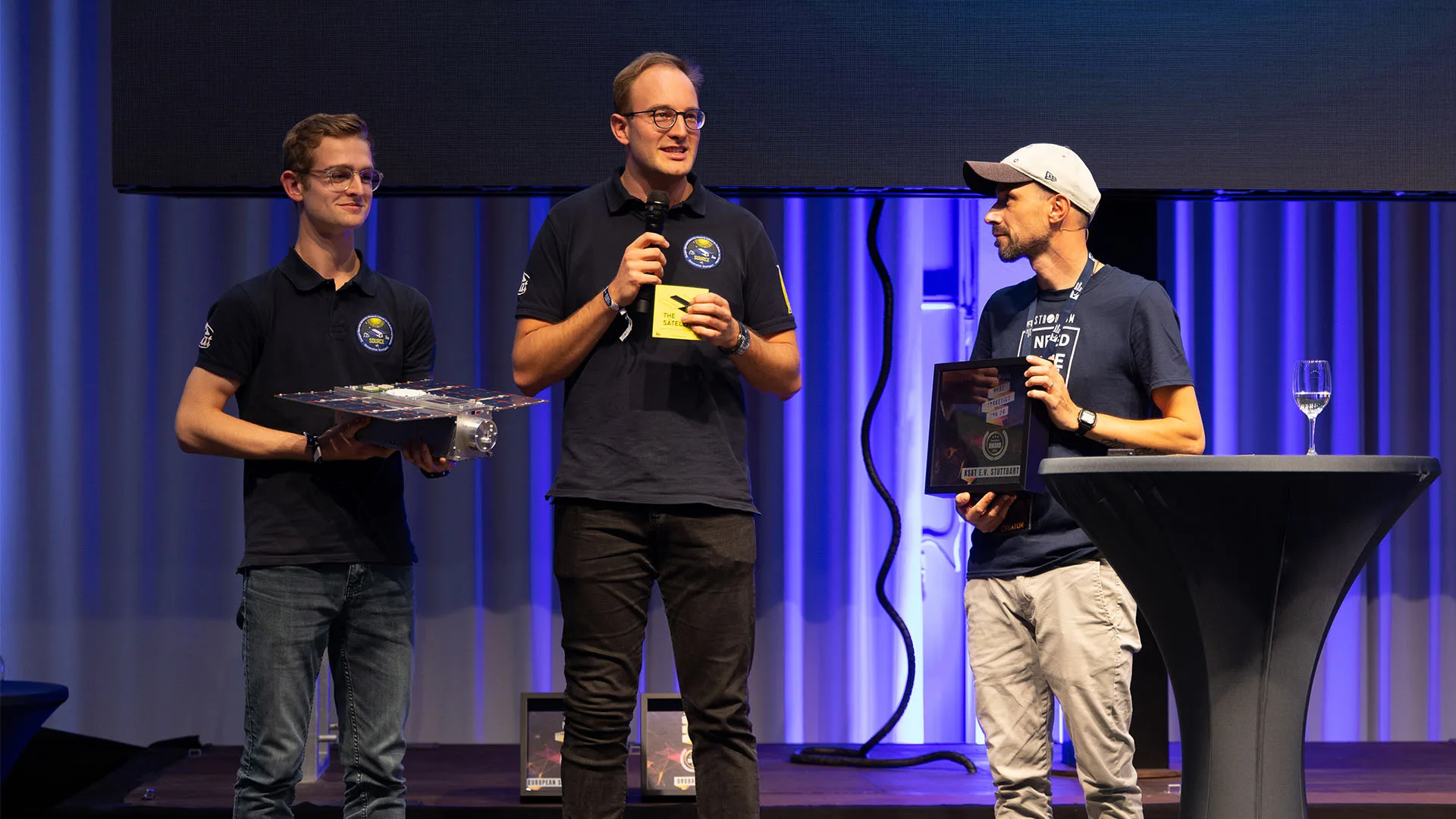
© Storki
| Category | Winner |
|---|---|
| Best Merchandise | European Space Agency (ESA) |
| Best Storytelling | OroraTech |
| Beste Community Involvement | German Aerospace Center (DLR) |
| Best Marketing/PR | KSat e.V. Stuttgart |
| Best Newcomer | The Exploration Company |
From community for community
The tremendous success of the Space Creator Day 2023 is primarily thanks to those who work behind the scenes. The SCD was significantly organized by the core team consisting of Simon Baumann, Christian Schiffer, and Florian Kordina. However, without the many on-site volunteers, an event of this magnitude and quality would have been inconceivable. It's already becoming apparent that there will likely be a Space Creator Day 2024. The exact date and location are still uncertain. What is clear, though, is that the Space Creator Day will continue to be the largest meet and greet event for the European space community.

© Storki


